Quick filters:
Seven ribs Stock Photos and Images
 Steel bobbin lace with coarse thread as an example of shaping stroke with seven ribs with a fragment side in which this technique is used, Steel natural-colored bobbin lace with coarse thread as an example of shaping stroke with seven ribs with a fragment side to it in which this technique has been applied. The dating relates to the steel., anonymous, West-Europa, c. 1900 - c. 1930, cotton (textile), tally (or jewel), l 7.5 cm × w 0.5 cm Stock Photohttps://www.alamy.com/image-license-details/?v=1https://www.alamy.com/steel-bobbin-lace-with-coarse-thread-as-an-example-of-shaping-stroke-with-seven-ribs-with-a-fragment-side-in-which-this-technique-is-used-steel-natural-colored-bobbin-lace-with-coarse-thread-as-an-example-of-shaping-stroke-with-seven-ribs-with-a-fragment-side-to-it-in-which-this-technique-has-been-applied-the-dating-relates-to-the-steel-anonymous-west-europa-c-1900-c-1930-cotton-textile-tally-or-jewel-l-75-cm-w-05-cm-image261366485.html
Steel bobbin lace with coarse thread as an example of shaping stroke with seven ribs with a fragment side in which this technique is used, Steel natural-colored bobbin lace with coarse thread as an example of shaping stroke with seven ribs with a fragment side to it in which this technique has been applied. The dating relates to the steel., anonymous, West-Europa, c. 1900 - c. 1930, cotton (textile), tally (or jewel), l 7.5 cm × w 0.5 cm Stock Photohttps://www.alamy.com/image-license-details/?v=1https://www.alamy.com/steel-bobbin-lace-with-coarse-thread-as-an-example-of-shaping-stroke-with-seven-ribs-with-a-fragment-side-in-which-this-technique-is-used-steel-natural-colored-bobbin-lace-with-coarse-thread-as-an-example-of-shaping-stroke-with-seven-ribs-with-a-fragment-side-to-it-in-which-this-technique-has-been-applied-the-dating-relates-to-the-steel-anonymous-west-europa-c-1900-c-1930-cotton-textile-tally-or-jewel-l-75-cm-w-05-cm-image261366485.htmlRMW567H9–Steel bobbin lace with coarse thread as an example of shaping stroke with seven ribs with a fragment side in which this technique is used, Steel natural-colored bobbin lace with coarse thread as an example of shaping stroke with seven ribs with a fragment side to it in which this technique has been applied. The dating relates to the steel., anonymous, West-Europa, c. 1900 - c. 1930, cotton (textile), tally (or jewel), l 7.5 cm × w 0.5 cm
 Juicy rack of lamb with seven ribs grilling on a summer barbecue Stock Photohttps://www.alamy.com/image-license-details/?v=1https://www.alamy.com/juicy-rack-of-lamb-with-seven-ribs-grilling-on-a-summer-barbecue-image259273382.html
Juicy rack of lamb with seven ribs grilling on a summer barbecue Stock Photohttps://www.alamy.com/image-license-details/?v=1https://www.alamy.com/juicy-rack-of-lamb-with-seven-ribs-grilling-on-a-summer-barbecue-image259273382.htmlRFW1PWRJ–Juicy rack of lamb with seven ribs grilling on a summer barbecue
 Steel bobbin with coarse wire as an example of form of shape with seven ribs with a fragment side in which this technique is used, anonymous, c. 1900 - c. 1930 sample Steel natural -colored bobbin side with coarse wire as an example of shape with seven ribs with a fragment side in which this technique is used. The date concerns the steel. West-Europa cotton (textile) bobbin lace / tally (or jewel) Stock Photohttps://www.alamy.com/image-license-details/?v=1https://www.alamy.com/steel-bobbin-with-coarse-wire-as-an-example-of-form-of-shape-with-seven-ribs-with-a-fragment-side-in-which-this-technique-is-used-anonymous-c-1900-c-1930-sample-steel-natural-colored-bobbin-side-with-coarse-wire-as-an-example-of-shape-with-seven-ribs-with-a-fragment-side-in-which-this-technique-is-used-the-date-concerns-the-steel-west-europa-cotton-textile-bobbin-lace-tally-or-jewel-image591919762.html
Steel bobbin with coarse wire as an example of form of shape with seven ribs with a fragment side in which this technique is used, anonymous, c. 1900 - c. 1930 sample Steel natural -colored bobbin side with coarse wire as an example of shape with seven ribs with a fragment side in which this technique is used. The date concerns the steel. West-Europa cotton (textile) bobbin lace / tally (or jewel) Stock Photohttps://www.alamy.com/image-license-details/?v=1https://www.alamy.com/steel-bobbin-with-coarse-wire-as-an-example-of-form-of-shape-with-seven-ribs-with-a-fragment-side-in-which-this-technique-is-used-anonymous-c-1900-c-1930-sample-steel-natural-colored-bobbin-side-with-coarse-wire-as-an-example-of-shape-with-seven-ribs-with-a-fragment-side-in-which-this-technique-is-used-the-date-concerns-the-steel-west-europa-cotton-textile-bobbin-lace-tally-or-jewel-image591919762.htmlRM2WB07KE–Steel bobbin with coarse wire as an example of form of shape with seven ribs with a fragment side in which this technique is used, anonymous, c. 1900 - c. 1930 sample Steel natural -colored bobbin side with coarse wire as an example of shape with seven ribs with a fragment side in which this technique is used. The date concerns the steel. West-Europa cotton (textile) bobbin lace / tally (or jewel)
 Juicy rack of lamb with seven ribs grilling on a summer barbecue Stock Photohttps://www.alamy.com/image-license-details/?v=1https://www.alamy.com/juicy-rack-of-lamb-with-seven-ribs-grilling-on-a-summer-barbecue-image357933408.html
Juicy rack of lamb with seven ribs grilling on a summer barbecue Stock Photohttps://www.alamy.com/image-license-details/?v=1https://www.alamy.com/juicy-rack-of-lamb-with-seven-ribs-grilling-on-a-summer-barbecue-image357933408.htmlRF2BP97M0–Juicy rack of lamb with seven ribs grilling on a summer barbecue
 Steel bobbin lace with coarse thread as an example of shaping stroke with seven ribs with a fragment side in which this technique is used, Steel natural-colored bobbin lace with coarse thread as an example of shaping stroke with seven ribs with a fragment side to it in which this technique has been applied. The dating relates to the steel., anonymous, West-Europa, c. 1900 - c. 1930, cotton (textile), tally (or jewel), l 7.5 cm × w 0.5 cm, Reimagined by Gibon, design of warm cheerful glowing of brightness and light rays radiance. Classic art reinvented with a modern twist. Photography inspired Stock Photohttps://www.alamy.com/image-license-details/?v=1https://www.alamy.com/steel-bobbin-lace-with-coarse-thread-as-an-example-of-shaping-stroke-with-seven-ribs-with-a-fragment-side-in-which-this-technique-is-used-steel-natural-colored-bobbin-lace-with-coarse-thread-as-an-example-of-shaping-stroke-with-seven-ribs-with-a-fragment-side-to-it-in-which-this-technique-has-been-applied-the-dating-relates-to-the-steel-anonymous-west-europa-c-1900-c-1930-cotton-textile-tally-or-jewel-l-75-cm-w-05-cm-reimagined-by-gibon-design-of-warm-cheerful-glowing-of-brightness-and-light-rays-radiance-classic-art-reinvented-with-a-modern-twist-photography-inspired-image349972568.html
Steel bobbin lace with coarse thread as an example of shaping stroke with seven ribs with a fragment side in which this technique is used, Steel natural-colored bobbin lace with coarse thread as an example of shaping stroke with seven ribs with a fragment side to it in which this technique has been applied. The dating relates to the steel., anonymous, West-Europa, c. 1900 - c. 1930, cotton (textile), tally (or jewel), l 7.5 cm × w 0.5 cm, Reimagined by Gibon, design of warm cheerful glowing of brightness and light rays radiance. Classic art reinvented with a modern twist. Photography inspired Stock Photohttps://www.alamy.com/image-license-details/?v=1https://www.alamy.com/steel-bobbin-lace-with-coarse-thread-as-an-example-of-shaping-stroke-with-seven-ribs-with-a-fragment-side-in-which-this-technique-is-used-steel-natural-colored-bobbin-lace-with-coarse-thread-as-an-example-of-shaping-stroke-with-seven-ribs-with-a-fragment-side-to-it-in-which-this-technique-has-been-applied-the-dating-relates-to-the-steel-anonymous-west-europa-c-1900-c-1930-cotton-textile-tally-or-jewel-l-75-cm-w-05-cm-reimagined-by-gibon-design-of-warm-cheerful-glowing-of-brightness-and-light-rays-radiance-classic-art-reinvented-with-a-modern-twist-photography-inspired-image349972568.htmlRF2B9AHG8–Steel bobbin lace with coarse thread as an example of shaping stroke with seven ribs with a fragment side in which this technique is used, Steel natural-colored bobbin lace with coarse thread as an example of shaping stroke with seven ribs with a fragment side to it in which this technique has been applied. The dating relates to the steel., anonymous, West-Europa, c. 1900 - c. 1930, cotton (textile), tally (or jewel), l 7.5 cm × w 0.5 cm, Reimagined by Gibon, design of warm cheerful glowing of brightness and light rays radiance. Classic art reinvented with a modern twist. Photography inspired
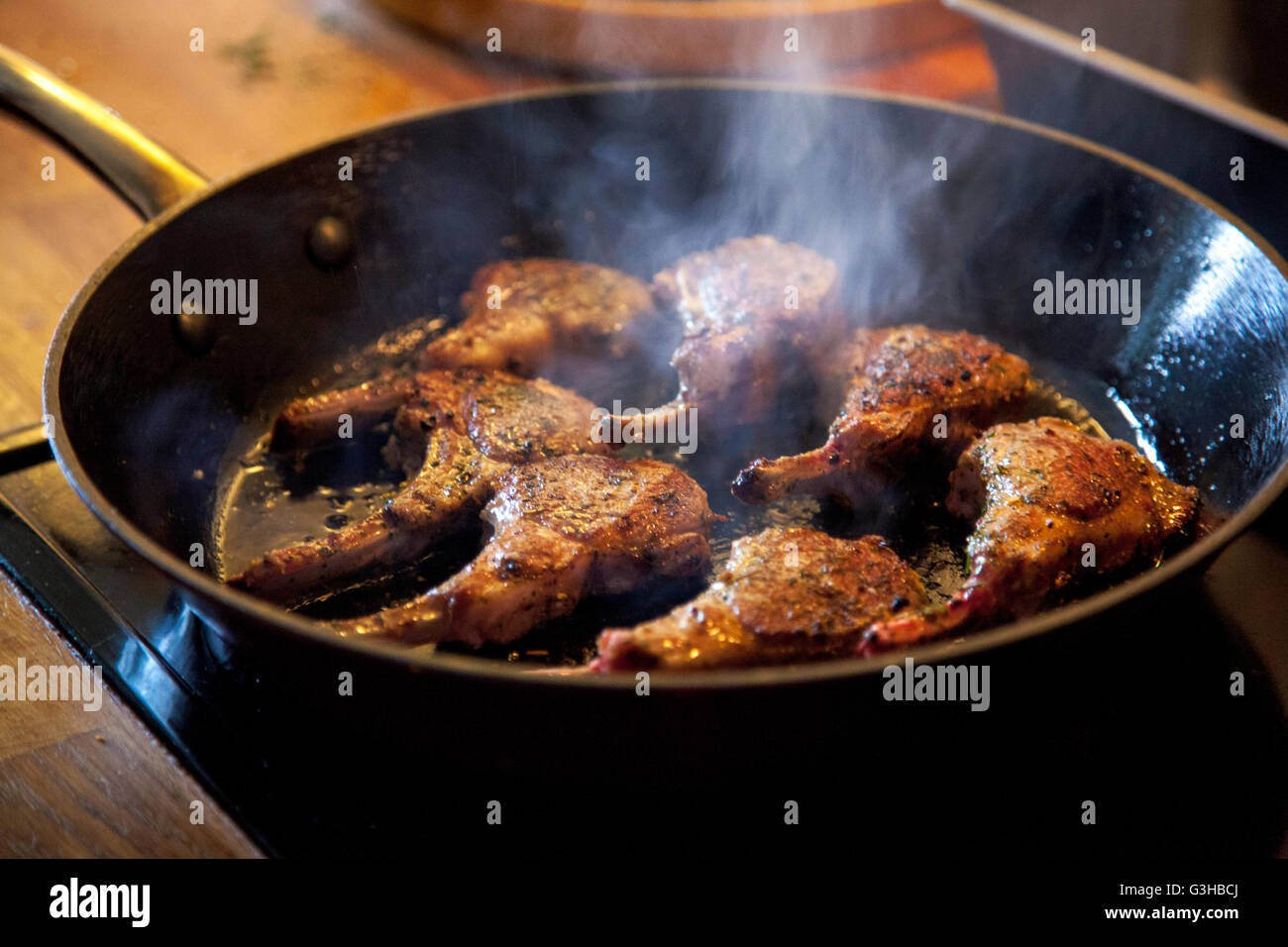 Lamb ribs in a frying pan Stock Photohttps://www.alamy.com/image-license-details/?v=1https://www.alamy.com/stock-photo-lamb-ribs-in-a-frying-pan-105488338.html
Lamb ribs in a frying pan Stock Photohttps://www.alamy.com/image-license-details/?v=1https://www.alamy.com/stock-photo-lamb-ribs-in-a-frying-pan-105488338.htmlRMG3HBCJ–Lamb ribs in a frying pan
 Archive image from page 263 of The cyclopædia of anatomy and. The cyclopædia of anatomy and physiology cyclopdiaofana0402todd Year: 1849 1048 THORAX. ribs is very oblique'; the spine is curved ; therefore the relation of the ribs to the spine is different according to the curve, as are the bars to the body representing the spine (fig. 679.). It will be seen that the inferior six or seven ribs are at a more oblique angle to the spine than the superior ribs. The spine does not curve sufficiently to bring the upper ribs to an angle of 90° with the spine; there- fore, if all the ribs were raised Stock Photohttps://www.alamy.com/image-license-details/?v=1https://www.alamy.com/archive-image-from-page-263-of-the-cyclopdia-of-anatomy-and-the-cyclopdia-of-anatomy-and-physiology-cyclopdiaofana0402todd-year-1849-1048-thorax-ribs-is-very-oblique-the-spine-is-curved-therefore-the-relation-of-the-ribs-to-the-spine-is-different-according-to-the-curve-as-are-the-bars-to-the-body-representing-the-spine-fig-679-it-will-be-seen-that-the-inferior-six-or-seven-ribs-are-at-a-more-oblique-angle-to-the-spine-than-the-superior-ribs-the-spine-does-not-curve-sufficiently-to-bring-the-upper-ribs-to-an-angle-of-90-with-the-spine-there-fore-if-all-the-ribs-were-raised-image259548204.html
Archive image from page 263 of The cyclopædia of anatomy and. The cyclopædia of anatomy and physiology cyclopdiaofana0402todd Year: 1849 1048 THORAX. ribs is very oblique'; the spine is curved ; therefore the relation of the ribs to the spine is different according to the curve, as are the bars to the body representing the spine (fig. 679.). It will be seen that the inferior six or seven ribs are at a more oblique angle to the spine than the superior ribs. The spine does not curve sufficiently to bring the upper ribs to an angle of 90° with the spine; there- fore, if all the ribs were raised Stock Photohttps://www.alamy.com/image-license-details/?v=1https://www.alamy.com/archive-image-from-page-263-of-the-cyclopdia-of-anatomy-and-the-cyclopdia-of-anatomy-and-physiology-cyclopdiaofana0402todd-year-1849-1048-thorax-ribs-is-very-oblique-the-spine-is-curved-therefore-the-relation-of-the-ribs-to-the-spine-is-different-according-to-the-curve-as-are-the-bars-to-the-body-representing-the-spine-fig-679-it-will-be-seen-that-the-inferior-six-or-seven-ribs-are-at-a-more-oblique-angle-to-the-spine-than-the-superior-ribs-the-spine-does-not-curve-sufficiently-to-bring-the-upper-ribs-to-an-angle-of-90-with-the-spine-there-fore-if-all-the-ribs-were-raised-image259548204.htmlRMW27CAM–Archive image from page 263 of The cyclopædia of anatomy and. The cyclopædia of anatomy and physiology cyclopdiaofana0402todd Year: 1849 1048 THORAX. ribs is very oblique'; the spine is curved ; therefore the relation of the ribs to the spine is different according to the curve, as are the bars to the body representing the spine (fig. 679.). It will be seen that the inferior six or seven ribs are at a more oblique angle to the spine than the superior ribs. The spine does not curve sufficiently to bring the upper ribs to an angle of 90° with the spine; there- fore, if all the ribs were raised
 Ian Horler, 37, from Newbury, the partner of rail crash survivor Sharmin Bacchus, at the Royal Berkshire Hospital in Reading. Six people were killed and 11 seriously injured after a high-speed train hit a car on a level crossing and derailed, yesterday. Sharmin had been seriously injured with broken ribs, a fractured pelvis, cuts and bruises after what was her first train ride in seven years. Stock Photohttps://www.alamy.com/image-license-details/?v=1https://www.alamy.com/ian-horler-37-from-newbury-the-partner-of-rail-crash-survivor-sharmin-bacchus-at-the-royal-berkshire-hospital-in-reading-six-people-were-killed-and-11-seriously-injured-after-a-high-speed-train-hit-a-car-on-a-level-crossing-and-derailed-yesterday-sharmin-had-been-seriously-injured-with-broken-ribs-a-fractured-pelvis-cuts-and-bruises-after-what-was-her-first-train-ride-in-seven-years-image380564325.html
Ian Horler, 37, from Newbury, the partner of rail crash survivor Sharmin Bacchus, at the Royal Berkshire Hospital in Reading. Six people were killed and 11 seriously injured after a high-speed train hit a car on a level crossing and derailed, yesterday. Sharmin had been seriously injured with broken ribs, a fractured pelvis, cuts and bruises after what was her first train ride in seven years. Stock Photohttps://www.alamy.com/image-license-details/?v=1https://www.alamy.com/ian-horler-37-from-newbury-the-partner-of-rail-crash-survivor-sharmin-bacchus-at-the-royal-berkshire-hospital-in-reading-six-people-were-killed-and-11-seriously-injured-after-a-high-speed-train-hit-a-car-on-a-level-crossing-and-derailed-yesterday-sharmin-had-been-seriously-injured-with-broken-ribs-a-fractured-pelvis-cuts-and-bruises-after-what-was-her-first-train-ride-in-seven-years-image380564325.htmlRM2D345K1–Ian Horler, 37, from Newbury, the partner of rail crash survivor Sharmin Bacchus, at the Royal Berkshire Hospital in Reading. Six people were killed and 11 seriously injured after a high-speed train hit a car on a level crossing and derailed, yesterday. Sharmin had been seriously injured with broken ribs, a fractured pelvis, cuts and bruises after what was her first train ride in seven years.
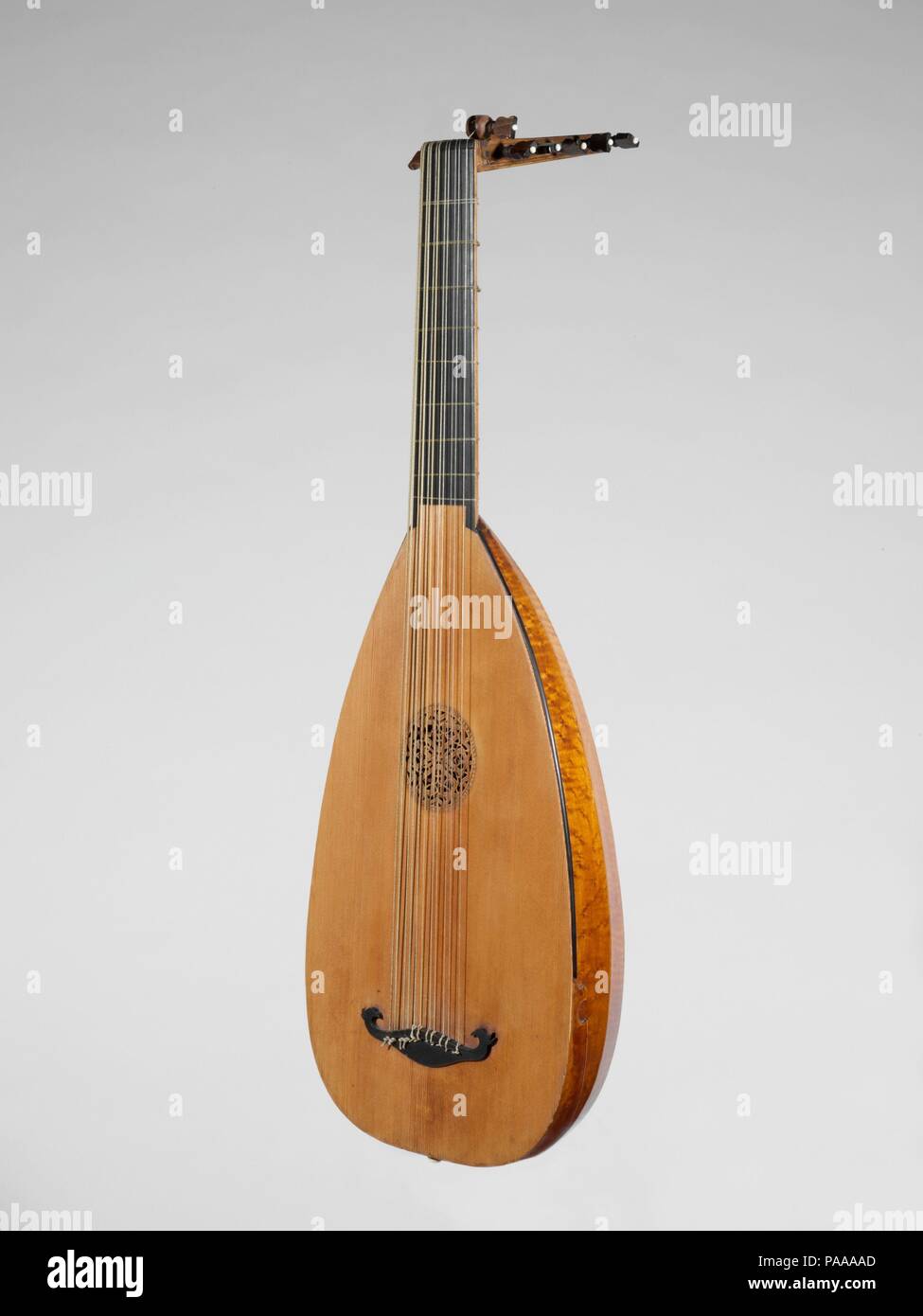 Mandora. Culture: German. Dimensions: L. to nut77.1cm (30.35 in.);String L.: Minimum 67.5 cm (26.58 in.); L. of top 48.5 cm. (19.09 in.). Maker: Gregori Ferdinand Wenger. Date: 1726. The mandora is a type of lute that developed in the eighteenth century in Germany, possibly as a simplified, more accessible version of the very complex lutes of the Baroque era. The body of the mandora is smaller and has fewer courses (usually six or seven); this example features six courses, five of them double and one single course. The body alternates ribs of figured maple and bird's eye maple, producin Stock Photohttps://www.alamy.com/image-license-details/?v=1https://www.alamy.com/mandora-culture-german-dimensions-l-to-nut771cm-3035-instring-l-minimum-675-cm-2658-in-l-of-top-485-cm-1909-in-maker-gregori-ferdinand-wenger-date-1726-the-mandora-is-a-type-of-lute-that-developed-in-the-eighteenth-century-in-germany-possibly-as-a-simplified-more-accessible-version-of-the-very-complex-lutes-of-the-baroque-era-the-body-of-the-mandora-is-smaller-and-has-fewer-courses-usually-six-or-seven-this-example-features-six-courses-five-of-them-double-and-one-single-course-the-body-alternates-ribs-of-figured-maple-and-birds-eye-maple-producin-image212898629.html
Mandora. Culture: German. Dimensions: L. to nut77.1cm (30.35 in.);String L.: Minimum 67.5 cm (26.58 in.); L. of top 48.5 cm. (19.09 in.). Maker: Gregori Ferdinand Wenger. Date: 1726. The mandora is a type of lute that developed in the eighteenth century in Germany, possibly as a simplified, more accessible version of the very complex lutes of the Baroque era. The body of the mandora is smaller and has fewer courses (usually six or seven); this example features six courses, five of them double and one single course. The body alternates ribs of figured maple and bird's eye maple, producin Stock Photohttps://www.alamy.com/image-license-details/?v=1https://www.alamy.com/mandora-culture-german-dimensions-l-to-nut771cm-3035-instring-l-minimum-675-cm-2658-in-l-of-top-485-cm-1909-in-maker-gregori-ferdinand-wenger-date-1726-the-mandora-is-a-type-of-lute-that-developed-in-the-eighteenth-century-in-germany-possibly-as-a-simplified-more-accessible-version-of-the-very-complex-lutes-of-the-baroque-era-the-body-of-the-mandora-is-smaller-and-has-fewer-courses-usually-six-or-seven-this-example-features-six-courses-five-of-them-double-and-one-single-course-the-body-alternates-ribs-of-figured-maple-and-birds-eye-maple-producin-image212898629.htmlRMPAAAAD–Mandora. Culture: German. Dimensions: L. to nut77.1cm (30.35 in.);String L.: Minimum 67.5 cm (26.58 in.); L. of top 48.5 cm. (19.09 in.). Maker: Gregori Ferdinand Wenger. Date: 1726. The mandora is a type of lute that developed in the eighteenth century in Germany, possibly as a simplified, more accessible version of the very complex lutes of the Baroque era. The body of the mandora is smaller and has fewer courses (usually six or seven); this example features six courses, five of them double and one single course. The body alternates ribs of figured maple and bird's eye maple, producin
 An officer's lobster tail helmet, German or Polish, circa 1630 The skull fluted 24 times with alternating ridges and decorative ribs. There is a ring attached to the top plate. The pointed brim has a turned under edge. It is attached with rivets. Adjustable nasal. The neck protector sliding on four lames with turned under rims, the upper edges with decorative lobes. Attached cheek protectors with seven perforations. Leather and rivets replaced. Height 26 cm. historic, historical, 17th century, defensive arms, weapons, arms, weapon, arm, fighting device, object,, Stock Photohttps://www.alamy.com/image-license-details/?v=1https://www.alamy.com/stock-photo-an-officers-lobster-tail-helmet-german-or-polish-circa-1630-the-skull-19830490.html
An officer's lobster tail helmet, German or Polish, circa 1630 The skull fluted 24 times with alternating ridges and decorative ribs. There is a ring attached to the top plate. The pointed brim has a turned under edge. It is attached with rivets. Adjustable nasal. The neck protector sliding on four lames with turned under rims, the upper edges with decorative lobes. Attached cheek protectors with seven perforations. Leather and rivets replaced. Height 26 cm. historic, historical, 17th century, defensive arms, weapons, arms, weapon, arm, fighting device, object,, Stock Photohttps://www.alamy.com/image-license-details/?v=1https://www.alamy.com/stock-photo-an-officers-lobster-tail-helmet-german-or-polish-circa-1630-the-skull-19830490.htmlRMB479YP–An officer's lobster tail helmet, German or Polish, circa 1630 The skull fluted 24 times with alternating ridges and decorative ribs. There is a ring attached to the top plate. The pointed brim has a turned under edge. It is attached with rivets. Adjustable nasal. The neck protector sliding on four lames with turned under rims, the upper edges with decorative lobes. Attached cheek protectors with seven perforations. Leather and rivets replaced. Height 26 cm. historic, historical, 17th century, defensive arms, weapons, arms, weapon, arm, fighting device, object,,
 seven pills Stock Photohttps://www.alamy.com/image-license-details/?v=1https://www.alamy.com/stock-photo-seven-pills-310452238.html
seven pills Stock Photohttps://www.alamy.com/image-license-details/?v=1https://www.alamy.com/stock-photo-seven-pills-310452238.htmlRFS128YX–seven pills
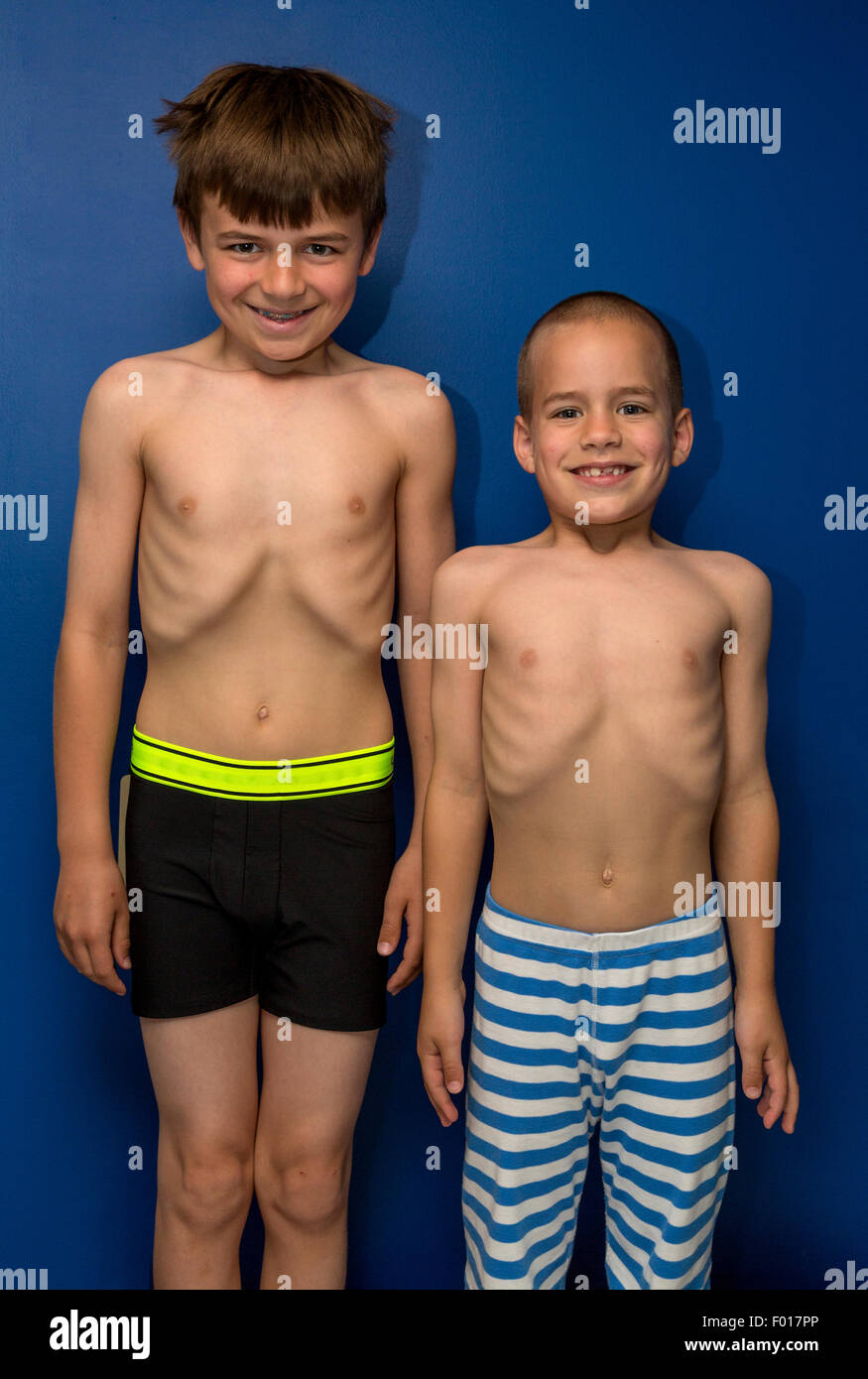 Young Boys (Ages 9 and 7) Showing off their Rib Cages for Fun. MR Stock Photohttps://www.alamy.com/image-license-details/?v=1https://www.alamy.com/stock-photo-young-boys-ages-9-and-7-showing-off-their-rib-cages-for-fun-mr-86079918.html
Young Boys (Ages 9 and 7) Showing off their Rib Cages for Fun. MR Stock Photohttps://www.alamy.com/image-license-details/?v=1https://www.alamy.com/stock-photo-young-boys-ages-9-and-7-showing-off-their-rib-cages-for-fun-mr-86079918.htmlRMF017PP–Young Boys (Ages 9 and 7) Showing off their Rib Cages for Fun. MR
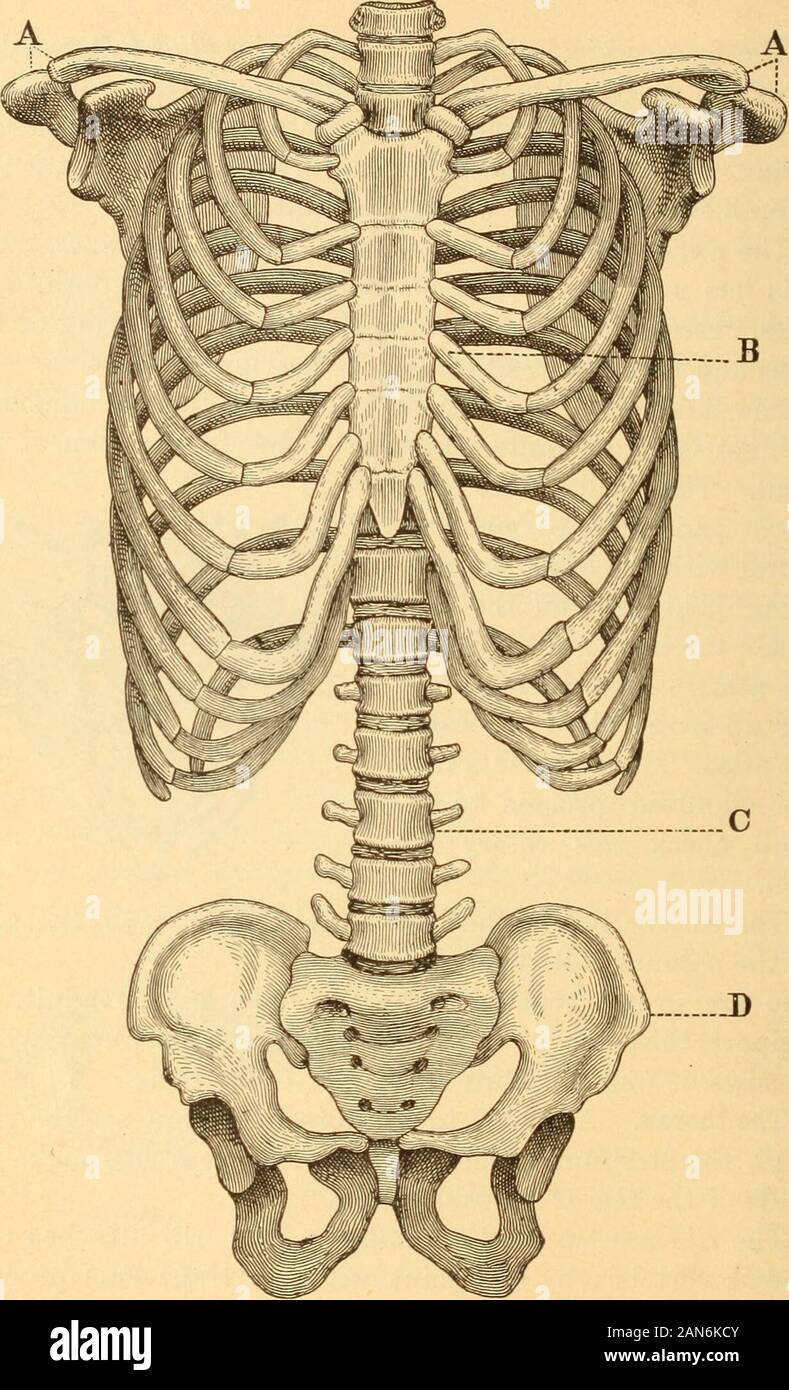 Anatomy, physiology and hygiene for high schools . Sacrum, made of five vertebrae.. Skeleton of trunk. A, A, seapulie and cla^^cles forming pectoral girdle; B, ribs and sternxini forming thorax; C, vertebral column ; D, pelvic girdle. 42 THE SKELETON 43 to the front of the thorax to attach by their cartilages to thesternum. Upon each side seven ribs attach separately.The next three connect with one another, and all together Stock Photohttps://www.alamy.com/image-license-details/?v=1https://www.alamy.com/anatomy-physiology-and-hygiene-for-high-schools-sacrum-made-of-five-vertebrae-skeleton-of-trunk-a-a-seapulie-and-clacles-forming-pectoral-girdle-b-ribs-and-sternxini-forming-thorax-c-vertebral-column-d-pelvic-girdle-42-the-skeleton-43-to-the-front-of-the-thorax-to-attach-by-their-cartilages-to-thesternum-upon-each-side-seven-ribs-attach-separatelythe-next-three-connect-with-one-another-and-all-together-image340051739.html
Anatomy, physiology and hygiene for high schools . Sacrum, made of five vertebrae.. Skeleton of trunk. A, A, seapulie and cla^^cles forming pectoral girdle; B, ribs and sternxini forming thorax; C, vertebral column ; D, pelvic girdle. 42 THE SKELETON 43 to the front of the thorax to attach by their cartilages to thesternum. Upon each side seven ribs attach separately.The next three connect with one another, and all together Stock Photohttps://www.alamy.com/image-license-details/?v=1https://www.alamy.com/anatomy-physiology-and-hygiene-for-high-schools-sacrum-made-of-five-vertebrae-skeleton-of-trunk-a-a-seapulie-and-clacles-forming-pectoral-girdle-b-ribs-and-sternxini-forming-thorax-c-vertebral-column-d-pelvic-girdle-42-the-skeleton-43-to-the-front-of-the-thorax-to-attach-by-their-cartilages-to-thesternum-upon-each-side-seven-ribs-attach-separatelythe-next-three-connect-with-one-another-and-all-together-image340051739.htmlRM2AN6KCY–Anatomy, physiology and hygiene for high schools . Sacrum, made of five vertebrae.. Skeleton of trunk. A, A, seapulie and cla^^cles forming pectoral girdle; B, ribs and sternxini forming thorax; C, vertebral column ; D, pelvic girdle. 42 THE SKELETON 43 to the front of the thorax to attach by their cartilages to thesternum. Upon each side seven ribs attach separately.The next three connect with one another, and all together
 V7 done with Wood Blocks Toys Stock Photohttps://www.alamy.com/image-license-details/?v=1https://www.alamy.com/stock-photo-v7-done-with-wood-blocks-toys-111296396.html
V7 done with Wood Blocks Toys Stock Photohttps://www.alamy.com/image-license-details/?v=1https://www.alamy.com/stock-photo-v7-done-with-wood-blocks-toys-111296396.htmlRFGD1YK8–V7 done with Wood Blocks Toys
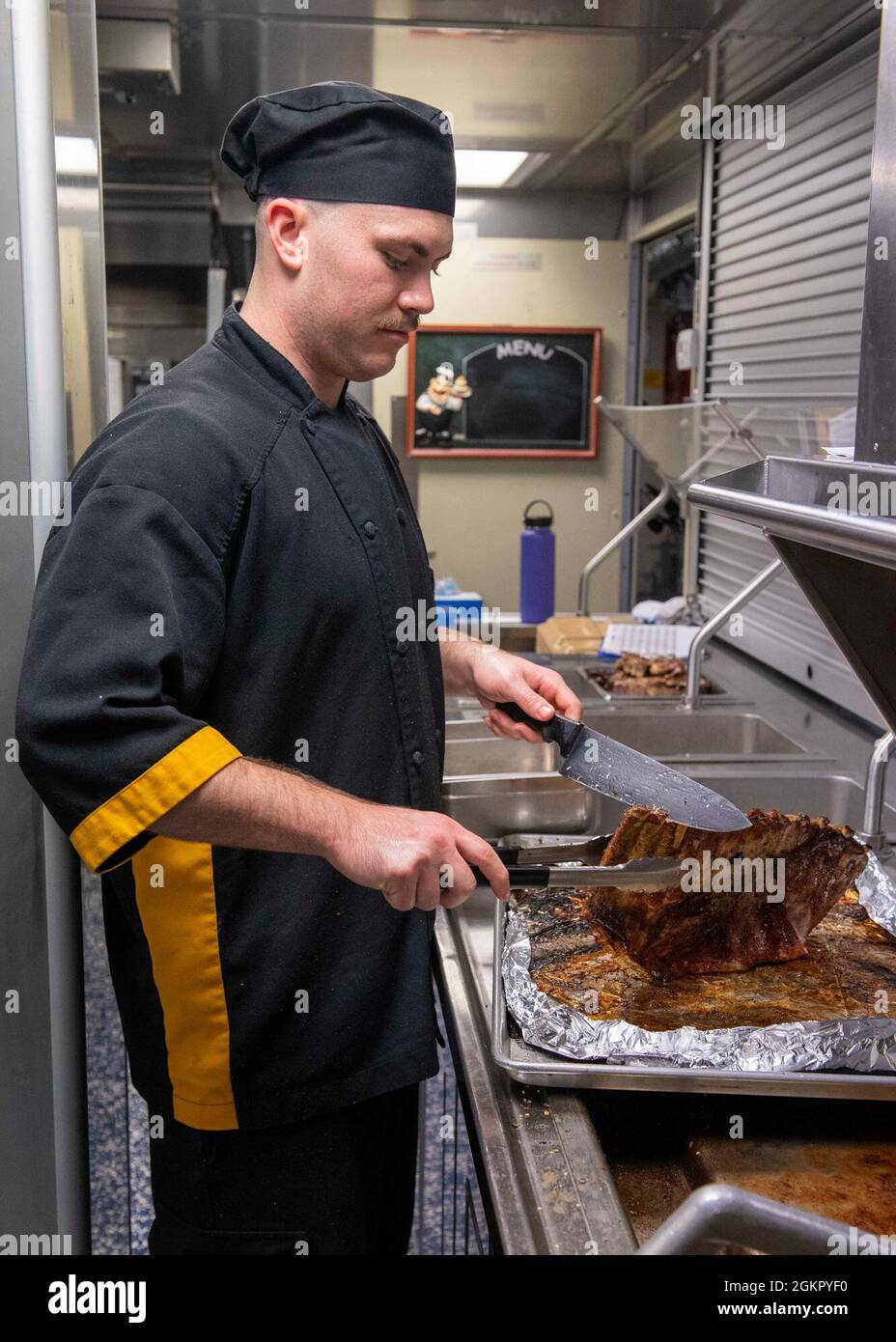 210616-N-WU807-1019 ANDAMAN SEA (June 16, 2021) Culinary Specialist 3rd Class Matthew Deluca, from Cincinnati, prepares ribs for dinner aboard Independence-variant littoral combat ship USS Charleston (LCS 18), June 16. Charleston, part of Destroyer Squadron Seven, is on a rotational deployment operating in the U.S. 7th fleet area of operations to enhance interoperability with partners and serve as a ready-response force in support of a free and open Indo-Pacific region. Stock Photohttps://www.alamy.com/image-license-details/?v=1https://www.alamy.com/210616-n-wu807-1019-andaman-sea-june-16-2021-culinary-specialist-3rd-class-matthew-deluca-from-cincinnati-prepares-ribs-for-dinner-aboard-independence-variant-littoral-combat-ship-uss-charleston-lcs-18-june-16-charleston-part-of-destroyer-squadron-seven-is-on-a-rotational-deployment-operating-in-the-us-7th-fleet-area-of-operations-to-enhance-interoperability-with-partners-and-serve-as-a-ready-response-force-in-support-of-a-free-and-open-indo-pacific-region-image442442196.html
210616-N-WU807-1019 ANDAMAN SEA (June 16, 2021) Culinary Specialist 3rd Class Matthew Deluca, from Cincinnati, prepares ribs for dinner aboard Independence-variant littoral combat ship USS Charleston (LCS 18), June 16. Charleston, part of Destroyer Squadron Seven, is on a rotational deployment operating in the U.S. 7th fleet area of operations to enhance interoperability with partners and serve as a ready-response force in support of a free and open Indo-Pacific region. Stock Photohttps://www.alamy.com/image-license-details/?v=1https://www.alamy.com/210616-n-wu807-1019-andaman-sea-june-16-2021-culinary-specialist-3rd-class-matthew-deluca-from-cincinnati-prepares-ribs-for-dinner-aboard-independence-variant-littoral-combat-ship-uss-charleston-lcs-18-june-16-charleston-part-of-destroyer-squadron-seven-is-on-a-rotational-deployment-operating-in-the-us-7th-fleet-area-of-operations-to-enhance-interoperability-with-partners-and-serve-as-a-ready-response-force-in-support-of-a-free-and-open-indo-pacific-region-image442442196.htmlRM2GKPYF0–210616-N-WU807-1019 ANDAMAN SEA (June 16, 2021) Culinary Specialist 3rd Class Matthew Deluca, from Cincinnati, prepares ribs for dinner aboard Independence-variant littoral combat ship USS Charleston (LCS 18), June 16. Charleston, part of Destroyer Squadron Seven, is on a rotational deployment operating in the U.S. 7th fleet area of operations to enhance interoperability with partners and serve as a ready-response force in support of a free and open Indo-Pacific region.
![The Sheep Eater; seven stages in a man's consumption of a sheep, illustrated in consecutive sequence. Inscribed above in ink: ‘Jura Geer Berah Geer the famous Sheep Eater from Surong near Kas Gunge in the Furrakabad District at his Breakfast;’ and below: ‘1. His first position’ [standing holding the sheep by its back with his teeth]. ‘2. The second position’ [removing the intestines]. ‘3. Drinking the Blood. 4. tearing the Ribs out. 5. Tearing the Throat out. 6. Devouring the hind Quarter. 7. Eating the Caustic Plant called Madar as a Salad.’. c.1795 - 1800. Source: Add.Or.4363 Stock Photo The Sheep Eater; seven stages in a man's consumption of a sheep, illustrated in consecutive sequence. Inscribed above in ink: ‘Jura Geer Berah Geer the famous Sheep Eater from Surong near Kas Gunge in the Furrakabad District at his Breakfast;’ and below: ‘1. His first position’ [standing holding the sheep by its back with his teeth]. ‘2. The second position’ [removing the intestines]. ‘3. Drinking the Blood. 4. tearing the Ribs out. 5. Tearing the Throat out. 6. Devouring the hind Quarter. 7. Eating the Caustic Plant called Madar as a Salad.’. c.1795 - 1800. Source: Add.Or.4363 Stock Photo](https://c8.alamy.com/comp/RC5YFW/the-sheep-eater-seven-stages-in-a-mans-consumption-of-a-sheep-illustrated-in-consecutive-sequence-inscribed-above-in-ink-jura-geer-berah-geer-the-famous-sheep-eater-from-surong-near-kas-gunge-in-the-furrakabad-district-at-his-breakfast-and-below-1-his-first-position-standing-holding-the-sheep-by-its-back-with-his-teeth-2-the-second-position-removing-the-intestines-3-drinking-the-blood-4-tearing-the-ribs-out-5-tearing-the-throat-out-6-devouring-the-hind-quarter-7-eating-the-caustic-plant-called-madar-as-a-salad-c1795-1800-source-addor4363-RC5YFW.jpg) The Sheep Eater; seven stages in a man's consumption of a sheep, illustrated in consecutive sequence. Inscribed above in ink: ‘Jura Geer Berah Geer the famous Sheep Eater from Surong near Kas Gunge in the Furrakabad District at his Breakfast;’ and below: ‘1. His first position’ [standing holding the sheep by its back with his teeth]. ‘2. The second position’ [removing the intestines]. ‘3. Drinking the Blood. 4. tearing the Ribs out. 5. Tearing the Throat out. 6. Devouring the hind Quarter. 7. Eating the Caustic Plant called Madar as a Salad.’. c.1795 - 1800. Source: Add.Or.4363 Stock Photohttps://www.alamy.com/image-license-details/?v=1https://www.alamy.com/the-sheep-eater-seven-stages-in-a-mans-consumption-of-a-sheep-illustrated-in-consecutive-sequence-inscribed-above-in-ink-jura-geer-berah-geer-the-famous-sheep-eater-from-surong-near-kas-gunge-in-the-furrakabad-district-at-his-breakfast-and-below-1-his-first-position-standing-holding-the-sheep-by-its-back-with-his-teeth-2-the-second-position-removing-the-intestines-3-drinking-the-blood-4-tearing-the-ribs-out-5-tearing-the-throat-out-6-devouring-the-hind-quarter-7-eating-the-caustic-plant-called-madar-as-a-salad-c1795-1800-source-addor4363-image231242029.html
The Sheep Eater; seven stages in a man's consumption of a sheep, illustrated in consecutive sequence. Inscribed above in ink: ‘Jura Geer Berah Geer the famous Sheep Eater from Surong near Kas Gunge in the Furrakabad District at his Breakfast;’ and below: ‘1. His first position’ [standing holding the sheep by its back with his teeth]. ‘2. The second position’ [removing the intestines]. ‘3. Drinking the Blood. 4. tearing the Ribs out. 5. Tearing the Throat out. 6. Devouring the hind Quarter. 7. Eating the Caustic Plant called Madar as a Salad.’. c.1795 - 1800. Source: Add.Or.4363 Stock Photohttps://www.alamy.com/image-license-details/?v=1https://www.alamy.com/the-sheep-eater-seven-stages-in-a-mans-consumption-of-a-sheep-illustrated-in-consecutive-sequence-inscribed-above-in-ink-jura-geer-berah-geer-the-famous-sheep-eater-from-surong-near-kas-gunge-in-the-furrakabad-district-at-his-breakfast-and-below-1-his-first-position-standing-holding-the-sheep-by-its-back-with-his-teeth-2-the-second-position-removing-the-intestines-3-drinking-the-blood-4-tearing-the-ribs-out-5-tearing-the-throat-out-6-devouring-the-hind-quarter-7-eating-the-caustic-plant-called-madar-as-a-salad-c1795-1800-source-addor4363-image231242029.htmlRMRC5YFW–The Sheep Eater; seven stages in a man's consumption of a sheep, illustrated in consecutive sequence. Inscribed above in ink: ‘Jura Geer Berah Geer the famous Sheep Eater from Surong near Kas Gunge in the Furrakabad District at his Breakfast;’ and below: ‘1. His first position’ [standing holding the sheep by its back with his teeth]. ‘2. The second position’ [removing the intestines]. ‘3. Drinking the Blood. 4. tearing the Ribs out. 5. Tearing the Throat out. 6. Devouring the hind Quarter. 7. Eating the Caustic Plant called Madar as a Salad.’. c.1795 - 1800. Source: Add.Or.4363
 Seven large feathery-needled cacti surrounded by numerous small 'baby' cacti in hothouse setting in the Inverness Botanic Garden, Inverness, Scotland! Stock Photohttps://www.alamy.com/image-license-details/?v=1https://www.alamy.com/stock-photo-seven-large-feathery-needled-cacti-surrounded-by-numerous-small-baby-144743912.html
Seven large feathery-needled cacti surrounded by numerous small 'baby' cacti in hothouse setting in the Inverness Botanic Garden, Inverness, Scotland! Stock Photohttps://www.alamy.com/image-license-details/?v=1https://www.alamy.com/stock-photo-seven-large-feathery-needled-cacti-surrounded-by-numerous-small-baby-144743912.htmlRFJBDJ9C–Seven large feathery-needled cacti surrounded by numerous small 'baby' cacti in hothouse setting in the Inverness Botanic Garden, Inverness, Scotland!
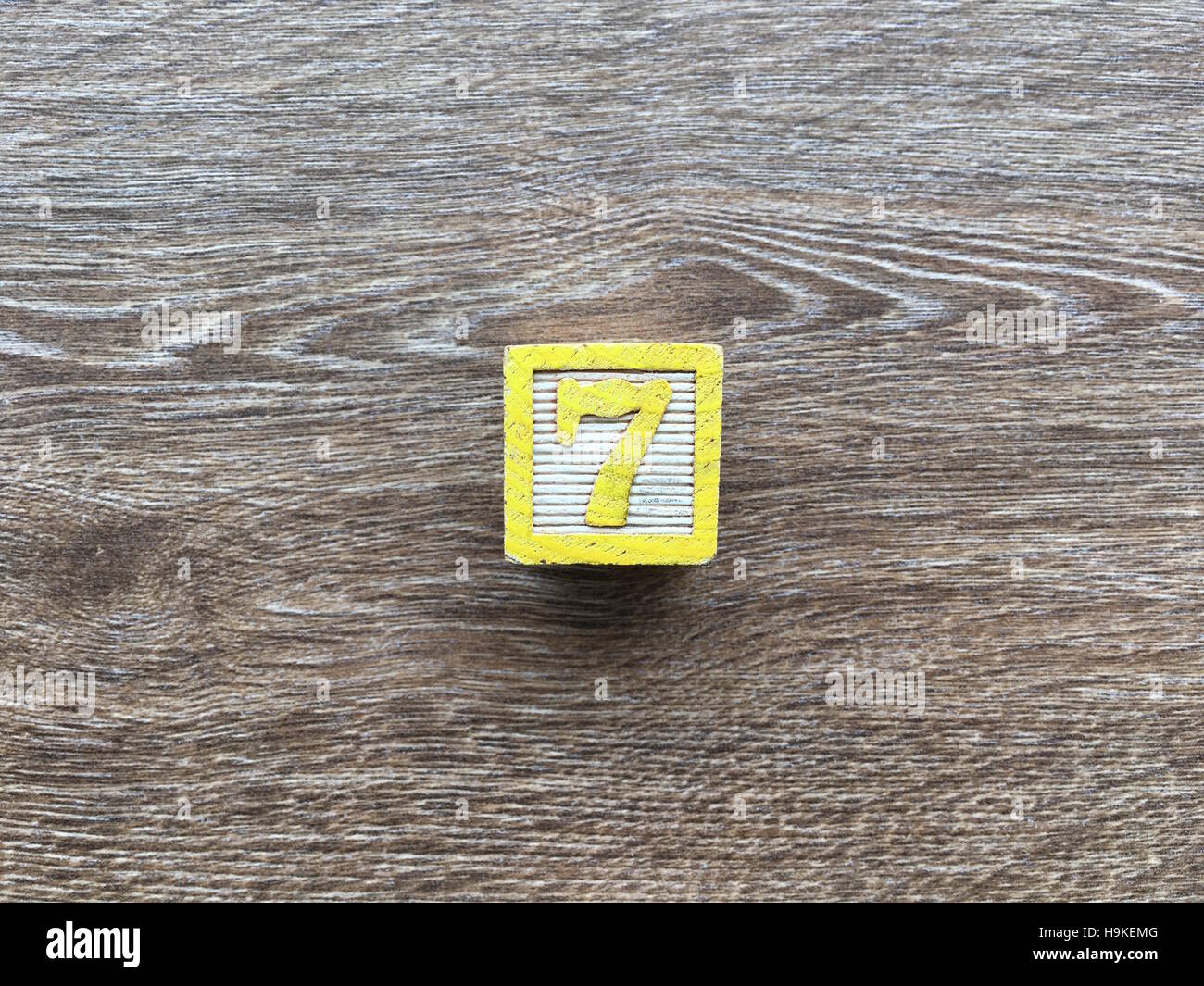 Wood Cube or Block with the number 7 Stock Photohttps://www.alamy.com/image-license-details/?v=1https://www.alamy.com/stock-photo-wood-cube-or-block-with-the-number-7-126433120.html
Wood Cube or Block with the number 7 Stock Photohttps://www.alamy.com/image-license-details/?v=1https://www.alamy.com/stock-photo-wood-cube-or-block-with-the-number-7-126433120.htmlRFH9KEMG–Wood Cube or Block with the number 7
 The Ironbribge, built by Abraham Darby III on the river Seven at Ironbridge, Telford. Stock Photohttps://www.alamy.com/image-license-details/?v=1https://www.alamy.com/stock-photo-the-ironbribge-built-by-abraham-darby-iii-on-the-river-seven-at-ironbridge-147638502.html
The Ironbribge, built by Abraham Darby III on the river Seven at Ironbridge, Telford. Stock Photohttps://www.alamy.com/image-license-details/?v=1https://www.alamy.com/stock-photo-the-ironbribge-built-by-abraham-darby-iii-on-the-river-seven-at-ironbridge-147638502.htmlRMJG5EBJ–The Ironbribge, built by Abraham Darby III on the river Seven at Ironbridge, Telford.
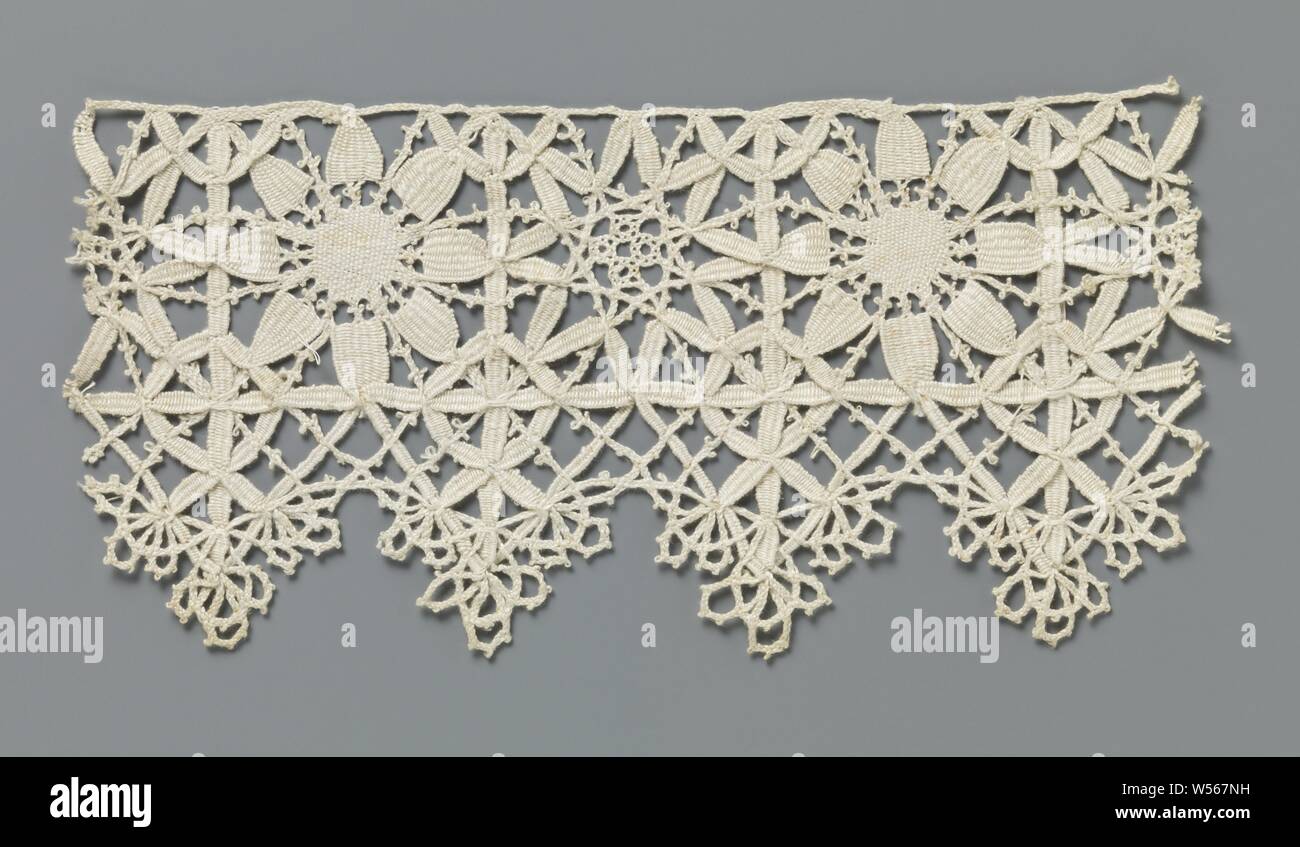 Strip of bobbin lace with flower or star in square with pointed scallop, Strip of natural-colored bobbin lace, Cluny lace. The repeating pattern consists of a cut-away square, in which alternately there is a star or a flower with eight points or eight petals. A triangle hangs below the vertical sides of each square. The consecutive triangles form a scallop edge, which is finished with drop-shaped lobes made with painted pigtails. The motifs and lines in the pattern are largely made in form, with two, three or seven ribs. Different connections are made with picotated braids. The circular flower Stock Photohttps://www.alamy.com/image-license-details/?v=1https://www.alamy.com/strip-of-bobbin-lace-with-flower-or-star-in-square-with-pointed-scallop-strip-of-natural-colored-bobbin-lace-cluny-lace-the-repeating-pattern-consists-of-a-cut-away-square-in-which-alternately-there-is-a-star-or-a-flower-with-eight-points-or-eight-petals-a-triangle-hangs-below-the-vertical-sides-of-each-square-the-consecutive-triangles-form-a-scallop-edge-which-is-finished-with-drop-shaped-lobes-made-with-painted-pigtails-the-motifs-and-lines-in-the-pattern-are-largely-made-in-form-with-two-three-or-seven-ribs-different-connections-are-made-with-picotated-braids-the-circular-flower-image261366605.html
Strip of bobbin lace with flower or star in square with pointed scallop, Strip of natural-colored bobbin lace, Cluny lace. The repeating pattern consists of a cut-away square, in which alternately there is a star or a flower with eight points or eight petals. A triangle hangs below the vertical sides of each square. The consecutive triangles form a scallop edge, which is finished with drop-shaped lobes made with painted pigtails. The motifs and lines in the pattern are largely made in form, with two, three or seven ribs. Different connections are made with picotated braids. The circular flower Stock Photohttps://www.alamy.com/image-license-details/?v=1https://www.alamy.com/strip-of-bobbin-lace-with-flower-or-star-in-square-with-pointed-scallop-strip-of-natural-colored-bobbin-lace-cluny-lace-the-repeating-pattern-consists-of-a-cut-away-square-in-which-alternately-there-is-a-star-or-a-flower-with-eight-points-or-eight-petals-a-triangle-hangs-below-the-vertical-sides-of-each-square-the-consecutive-triangles-form-a-scallop-edge-which-is-finished-with-drop-shaped-lobes-made-with-painted-pigtails-the-motifs-and-lines-in-the-pattern-are-largely-made-in-form-with-two-three-or-seven-ribs-different-connections-are-made-with-picotated-braids-the-circular-flower-image261366605.htmlRMW567NH–Strip of bobbin lace with flower or star in square with pointed scallop, Strip of natural-colored bobbin lace, Cluny lace. The repeating pattern consists of a cut-away square, in which alternately there is a star or a flower with eight points or eight petals. A triangle hangs below the vertical sides of each square. The consecutive triangles form a scallop edge, which is finished with drop-shaped lobes made with painted pigtails. The motifs and lines in the pattern are largely made in form, with two, three or seven ribs. Different connections are made with picotated braids. The circular flower
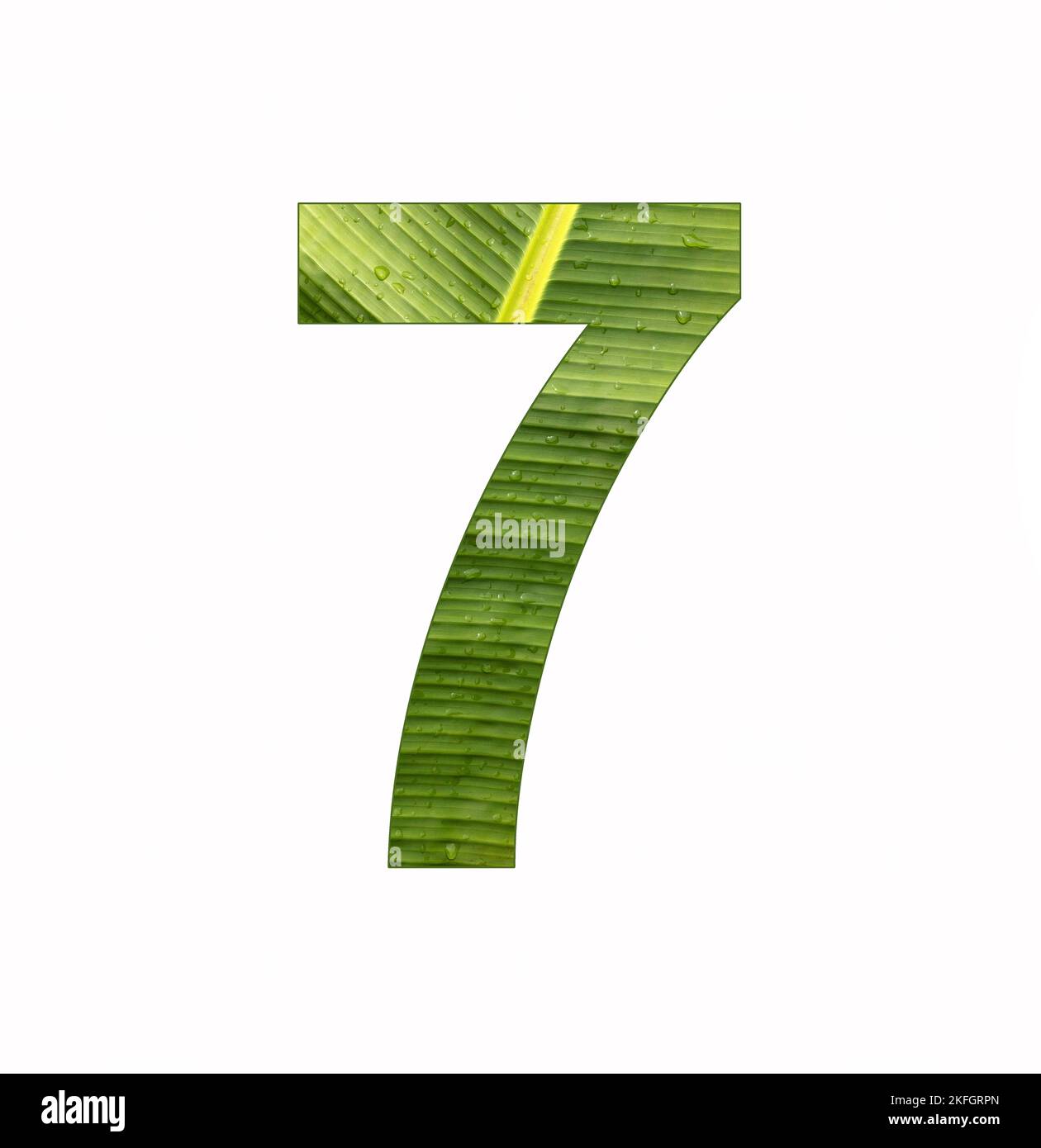 Number 7 - Digit seven on banana plant leaf background Stock Photohttps://www.alamy.com/image-license-details/?v=1https://www.alamy.com/number-7-digit-seven-on-banana-plant-leaf-background-image491480045.html
Number 7 - Digit seven on banana plant leaf background Stock Photohttps://www.alamy.com/image-license-details/?v=1https://www.alamy.com/number-7-digit-seven-on-banana-plant-leaf-background-image491480045.htmlRF2KFGRPN–Number 7 - Digit seven on banana plant leaf background
 Fragment of a rib shell. A low curvature of the glass fragment and the seven ribs obtained allow assignment to a rib shell. The dark violet to violet piece is crossed by white, irregular strokes. On the inside, spirals can be seen.For the production, different colored glasses were shaped to tubes and rods. These were compressed and heated, causing a long bar. The glass sliced now had different amorphous or floral patterns. Thereafter, several of these platelets were folded together, heated again and pressed into the vascular shape. Burry for the elaborate manufacturing process and its fragil Stock Photohttps://www.alamy.com/image-license-details/?v=1https://www.alamy.com/fragment-of-a-rib-shell-a-low-curvature-of-the-glass-fragment-and-the-seven-ribs-obtained-allow-assignment-to-a-rib-shell-the-dark-violet-to-violet-piece-is-crossed-by-white-irregular-strokes-on-the-inside-spirals-can-be-seenfor-the-production-different-colored-glasses-were-shaped-to-tubes-and-rods-these-were-compressed-and-heated-causing-a-long-bar-the-glass-sliced-now-had-different-amorphous-or-floral-patterns-thereafter-several-of-these-platelets-were-folded-together-heated-again-and-pressed-into-the-vascular-shape-burry-for-the-elaborate-manufacturing-process-and-its-fragil-image416256964.html
Fragment of a rib shell. A low curvature of the glass fragment and the seven ribs obtained allow assignment to a rib shell. The dark violet to violet piece is crossed by white, irregular strokes. On the inside, spirals can be seen.For the production, different colored glasses were shaped to tubes and rods. These were compressed and heated, causing a long bar. The glass sliced now had different amorphous or floral patterns. Thereafter, several of these platelets were folded together, heated again and pressed into the vascular shape. Burry for the elaborate manufacturing process and its fragil Stock Photohttps://www.alamy.com/image-license-details/?v=1https://www.alamy.com/fragment-of-a-rib-shell-a-low-curvature-of-the-glass-fragment-and-the-seven-ribs-obtained-allow-assignment-to-a-rib-shell-the-dark-violet-to-violet-piece-is-crossed-by-white-irregular-strokes-on-the-inside-spirals-can-be-seenfor-the-production-different-colored-glasses-were-shaped-to-tubes-and-rods-these-were-compressed-and-heated-causing-a-long-bar-the-glass-sliced-now-had-different-amorphous-or-floral-patterns-thereafter-several-of-these-platelets-were-folded-together-heated-again-and-pressed-into-the-vascular-shape-burry-for-the-elaborate-manufacturing-process-and-its-fragil-image416256964.htmlRM2F56404–Fragment of a rib shell. A low curvature of the glass fragment and the seven ribs obtained allow assignment to a rib shell. The dark violet to violet piece is crossed by white, irregular strokes. On the inside, spirals can be seen.For the production, different colored glasses were shaped to tubes and rods. These were compressed and heated, causing a long bar. The glass sliced now had different amorphous or floral patterns. Thereafter, several of these platelets were folded together, heated again and pressed into the vascular shape. Burry for the elaborate manufacturing process and its fragil
 Mature male lion (Panthera leo) eats his prey, the red bloodied ribs of the carcass of a Cape buffalo, in long grass, Masai Mara, Kenya Stock Photohttps://www.alamy.com/image-license-details/?v=1https://www.alamy.com/stock-photo-mature-male-lion-panthera-leo-eats-his-prey-the-red-bloodied-ribs-174783989.html
Mature male lion (Panthera leo) eats his prey, the red bloodied ribs of the carcass of a Cape buffalo, in long grass, Masai Mara, Kenya Stock Photohttps://www.alamy.com/image-license-details/?v=1https://www.alamy.com/stock-photo-mature-male-lion-panthera-leo-eats-his-prey-the-red-bloodied-ribs-174783989.htmlRMM4A2N9–Mature male lion (Panthera leo) eats his prey, the red bloodied ribs of the carcass of a Cape buffalo, in long grass, Masai Mara, Kenya
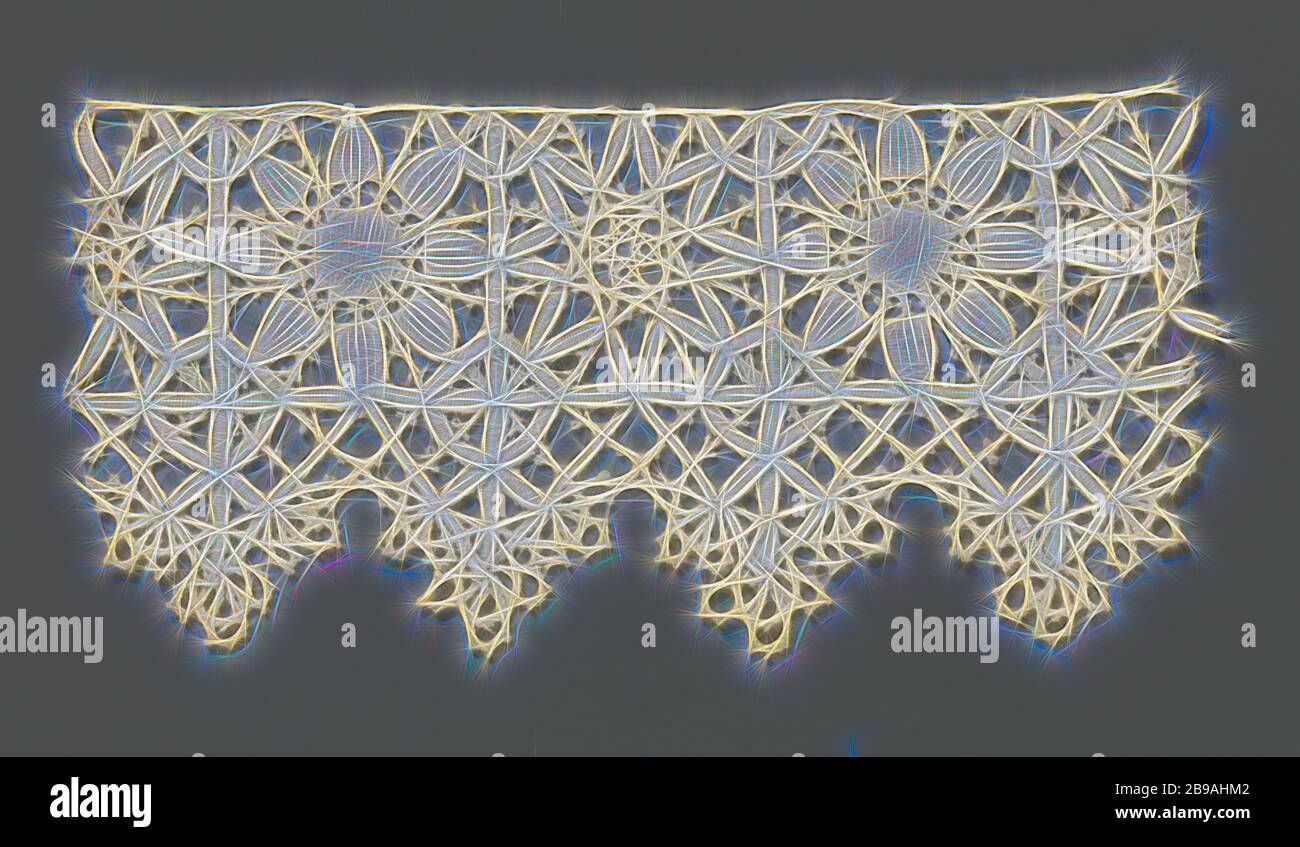 Strip of bobbin lace with flower or star in square with pointed scallop, Strip of natural-colored bobbin lace, Cluny lace. The repeating pattern consists of a cut-away square, in which alternately there is a star or a flower with eight points or eight petals. A triangle hangs below the vertical sides of each square. The consecutive triangles form a scallop edge, which is finished with drop-shaped lobes made with painted pigtails. The motifs and lines in the pattern are largely made in form, with two, three or seven ribs. Different connections are made with picotated braids. The circular flower Stock Photohttps://www.alamy.com/image-license-details/?v=1https://www.alamy.com/strip-of-bobbin-lace-with-flower-or-star-in-square-with-pointed-scallop-strip-of-natural-colored-bobbin-lace-cluny-lace-the-repeating-pattern-consists-of-a-cut-away-square-in-which-alternately-there-is-a-star-or-a-flower-with-eight-points-or-eight-petals-a-triangle-hangs-below-the-vertical-sides-of-each-square-the-consecutive-triangles-form-a-scallop-edge-which-is-finished-with-drop-shaped-lobes-made-with-painted-pigtails-the-motifs-and-lines-in-the-pattern-are-largely-made-in-form-with-two-three-or-seven-ribs-different-connections-are-made-with-picotated-braids-the-circular-flower-image349972674.html
Strip of bobbin lace with flower or star in square with pointed scallop, Strip of natural-colored bobbin lace, Cluny lace. The repeating pattern consists of a cut-away square, in which alternately there is a star or a flower with eight points or eight petals. A triangle hangs below the vertical sides of each square. The consecutive triangles form a scallop edge, which is finished with drop-shaped lobes made with painted pigtails. The motifs and lines in the pattern are largely made in form, with two, three or seven ribs. Different connections are made with picotated braids. The circular flower Stock Photohttps://www.alamy.com/image-license-details/?v=1https://www.alamy.com/strip-of-bobbin-lace-with-flower-or-star-in-square-with-pointed-scallop-strip-of-natural-colored-bobbin-lace-cluny-lace-the-repeating-pattern-consists-of-a-cut-away-square-in-which-alternately-there-is-a-star-or-a-flower-with-eight-points-or-eight-petals-a-triangle-hangs-below-the-vertical-sides-of-each-square-the-consecutive-triangles-form-a-scallop-edge-which-is-finished-with-drop-shaped-lobes-made-with-painted-pigtails-the-motifs-and-lines-in-the-pattern-are-largely-made-in-form-with-two-three-or-seven-ribs-different-connections-are-made-with-picotated-braids-the-circular-flower-image349972674.htmlRF2B9AHM2–Strip of bobbin lace with flower or star in square with pointed scallop, Strip of natural-colored bobbin lace, Cluny lace. The repeating pattern consists of a cut-away square, in which alternately there is a star or a flower with eight points or eight petals. A triangle hangs below the vertical sides of each square. The consecutive triangles form a scallop edge, which is finished with drop-shaped lobes made with painted pigtails. The motifs and lines in the pattern are largely made in form, with two, three or seven ribs. Different connections are made with picotated braids. The circular flower
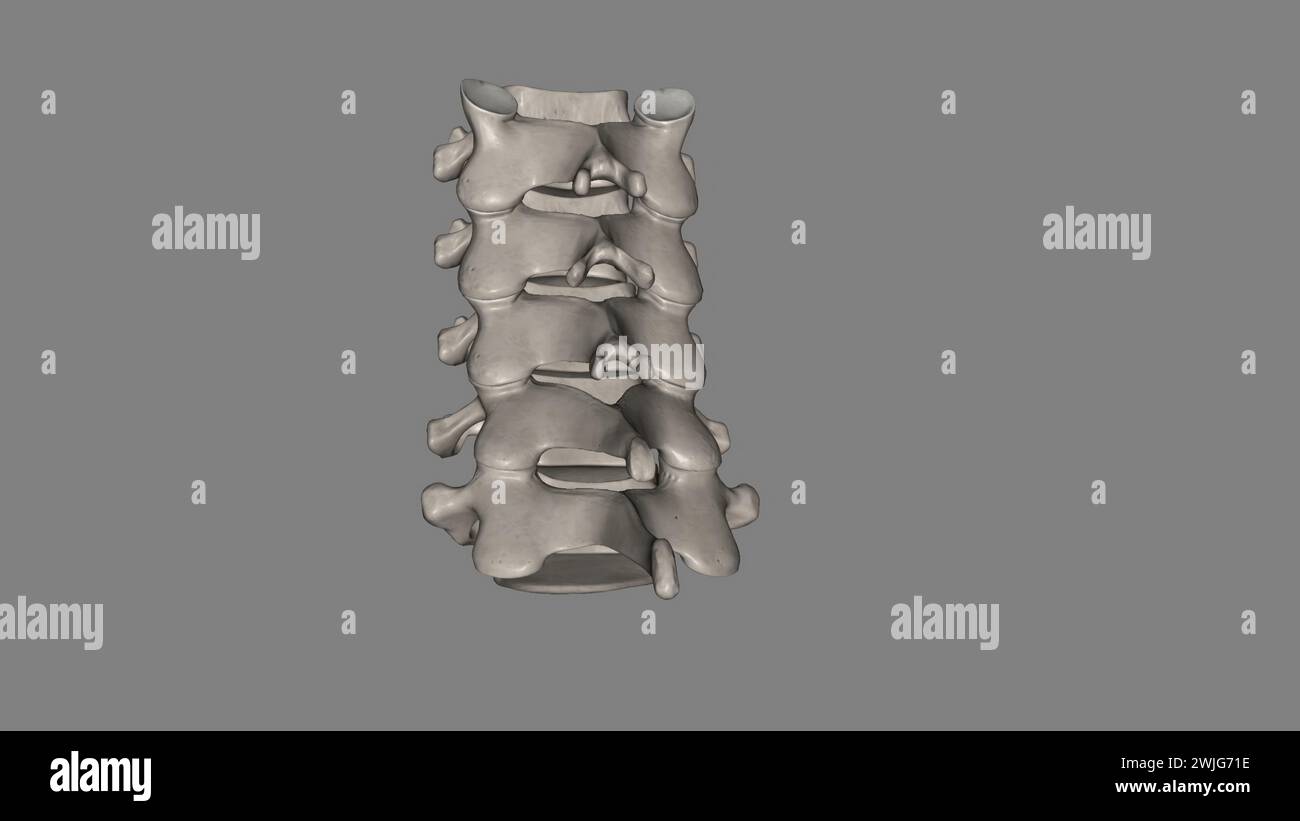 The cervical spine (neck region) consists of seven bones (C1-C7 vertebrae), which are separated from one another by intervertebral discs 3d illustrati Stock Photohttps://www.alamy.com/image-license-details/?v=1https://www.alamy.com/the-cervical-spine-neck-region-consists-of-seven-bones-c1-c7-vertebrae-which-are-separated-from-one-another-by-intervertebral-discs-3d-illustrati-image596573082.html
The cervical spine (neck region) consists of seven bones (C1-C7 vertebrae), which are separated from one another by intervertebral discs 3d illustrati Stock Photohttps://www.alamy.com/image-license-details/?v=1https://www.alamy.com/the-cervical-spine-neck-region-consists-of-seven-bones-c1-c7-vertebrae-which-are-separated-from-one-another-by-intervertebral-discs-3d-illustrati-image596573082.htmlRF2WJG71E–The cervical spine (neck region) consists of seven bones (C1-C7 vertebrae), which are separated from one another by intervertebral discs 3d illustrati
 Archive image from page 137 of Cunningham's Text-book of anatomy (1914). Cunningham's Text-book of anatomy cunninghamstextb00cunn Year: 1914 ( 104 OSTEOLOGY. or seven cartilaginous ribs. Paterson, on the other hand, regards the sternum as arising independently of the ribs by the union of a right and left sternal bar in the median ventral hue. There are also reasons for supposing that the presternum is intimately associated with the development of the ventral part of the shoulder girdle. Ossification of the Vertebrae.—The vertebrae are developed by ossification of the cartilage which surrounds Stock Photohttps://www.alamy.com/image-license-details/?v=1https://www.alamy.com/archive-image-from-page-137-of-cunninghams-text-book-of-anatomy-1914-cunninghams-text-book-of-anatomy-cunninghamstextb00cunn-year-1914-104-osteology-or-seven-cartilaginous-ribs-paterson-on-the-other-hand-regards-the-sternum-as-arising-independently-of-the-ribs-by-the-union-of-a-right-and-left-sternal-bar-in-the-median-ventral-hue-there-are-also-reasons-for-supposing-that-the-presternum-is-intimately-associated-with-the-development-of-the-ventral-part-of-the-shoulder-girdle-ossification-of-the-vertebraethe-vertebrae-are-developed-by-ossification-of-the-cartilage-which-surrounds-image264045149.html
Archive image from page 137 of Cunningham's Text-book of anatomy (1914). Cunningham's Text-book of anatomy cunninghamstextb00cunn Year: 1914 ( 104 OSTEOLOGY. or seven cartilaginous ribs. Paterson, on the other hand, regards the sternum as arising independently of the ribs by the union of a right and left sternal bar in the median ventral hue. There are also reasons for supposing that the presternum is intimately associated with the development of the ventral part of the shoulder girdle. Ossification of the Vertebrae.—The vertebrae are developed by ossification of the cartilage which surrounds Stock Photohttps://www.alamy.com/image-license-details/?v=1https://www.alamy.com/archive-image-from-page-137-of-cunninghams-text-book-of-anatomy-1914-cunninghams-text-book-of-anatomy-cunninghamstextb00cunn-year-1914-104-osteology-or-seven-cartilaginous-ribs-paterson-on-the-other-hand-regards-the-sternum-as-arising-independently-of-the-ribs-by-the-union-of-a-right-and-left-sternal-bar-in-the-median-ventral-hue-there-are-also-reasons-for-supposing-that-the-presternum-is-intimately-associated-with-the-development-of-the-ventral-part-of-the-shoulder-girdle-ossification-of-the-vertebraethe-vertebrae-are-developed-by-ossification-of-the-cartilage-which-surrounds-image264045149.htmlRMW9G87W–Archive image from page 137 of Cunningham's Text-book of anatomy (1914). Cunningham's Text-book of anatomy cunninghamstextb00cunn Year: 1914 ( 104 OSTEOLOGY. or seven cartilaginous ribs. Paterson, on the other hand, regards the sternum as arising independently of the ribs by the union of a right and left sternal bar in the median ventral hue. There are also reasons for supposing that the presternum is intimately associated with the development of the ventral part of the shoulder girdle. Ossification of the Vertebrae.—The vertebrae are developed by ossification of the cartilage which surrounds
 . The cyclopædia of anatomy and physiology. Anatomy; Physiology; Zoology. 1048 THORAX. ribs is very oblique"; the spine is curved ; therefore the relation of the ribs to the spine is different according to the curve, as are the bars to the body representing the spine (fig. 679.). It will be seen that the inferior six or seven ribs are at a more oblique angle to the spine than the superior ribs. The spine does not curve sufficiently to bring the upper ribs to an angle of 90° with the spine; there- fore, if all the ribs were raised simultane- ously, they would all increase the breadth of th Stock Photohttps://www.alamy.com/image-license-details/?v=1https://www.alamy.com/the-cyclopdia-of-anatomy-and-physiology-anatomy-physiology-zoology-1048-thorax-ribs-is-very-obliquequot-the-spine-is-curved-therefore-the-relation-of-the-ribs-to-the-spine-is-different-according-to-the-curve-as-are-the-bars-to-the-body-representing-the-spine-fig-679-it-will-be-seen-that-the-inferior-six-or-seven-ribs-are-at-a-more-oblique-angle-to-the-spine-than-the-superior-ribs-the-spine-does-not-curve-sufficiently-to-bring-the-upper-ribs-to-an-angle-of-90-with-the-spine-there-fore-if-all-the-ribs-were-raised-simultane-ously-they-would-all-increase-the-breadth-of-th-image216189977.html
. The cyclopædia of anatomy and physiology. Anatomy; Physiology; Zoology. 1048 THORAX. ribs is very oblique"; the spine is curved ; therefore the relation of the ribs to the spine is different according to the curve, as are the bars to the body representing the spine (fig. 679.). It will be seen that the inferior six or seven ribs are at a more oblique angle to the spine than the superior ribs. The spine does not curve sufficiently to bring the upper ribs to an angle of 90° with the spine; there- fore, if all the ribs were raised simultane- ously, they would all increase the breadth of th Stock Photohttps://www.alamy.com/image-license-details/?v=1https://www.alamy.com/the-cyclopdia-of-anatomy-and-physiology-anatomy-physiology-zoology-1048-thorax-ribs-is-very-obliquequot-the-spine-is-curved-therefore-the-relation-of-the-ribs-to-the-spine-is-different-according-to-the-curve-as-are-the-bars-to-the-body-representing-the-spine-fig-679-it-will-be-seen-that-the-inferior-six-or-seven-ribs-are-at-a-more-oblique-angle-to-the-spine-than-the-superior-ribs-the-spine-does-not-curve-sufficiently-to-bring-the-upper-ribs-to-an-angle-of-90-with-the-spine-there-fore-if-all-the-ribs-were-raised-simultane-ously-they-would-all-increase-the-breadth-of-th-image216189977.htmlRMPFM8EH–. The cyclopædia of anatomy and physiology. Anatomy; Physiology; Zoology. 1048 THORAX. ribs is very oblique"; the spine is curved ; therefore the relation of the ribs to the spine is different according to the curve, as are the bars to the body representing the spine (fig. 679.). It will be seen that the inferior six or seven ribs are at a more oblique angle to the spine than the superior ribs. The spine does not curve sufficiently to bring the upper ribs to an angle of 90° with the spine; there- fore, if all the ribs were raised simultane- ously, they would all increase the breadth of th
 Sharmin Bacchus Train Crash Survivor Stock Photohttps://www.alamy.com/image-license-details/?v=1https://www.alamy.com/stock-photo-sharmin-bacchus-train-crash-survivor-107875581.html
Sharmin Bacchus Train Crash Survivor Stock Photohttps://www.alamy.com/image-license-details/?v=1https://www.alamy.com/stock-photo-sharmin-bacchus-train-crash-survivor-107875581.htmlRMG7E4B9–Sharmin Bacchus Train Crash Survivor
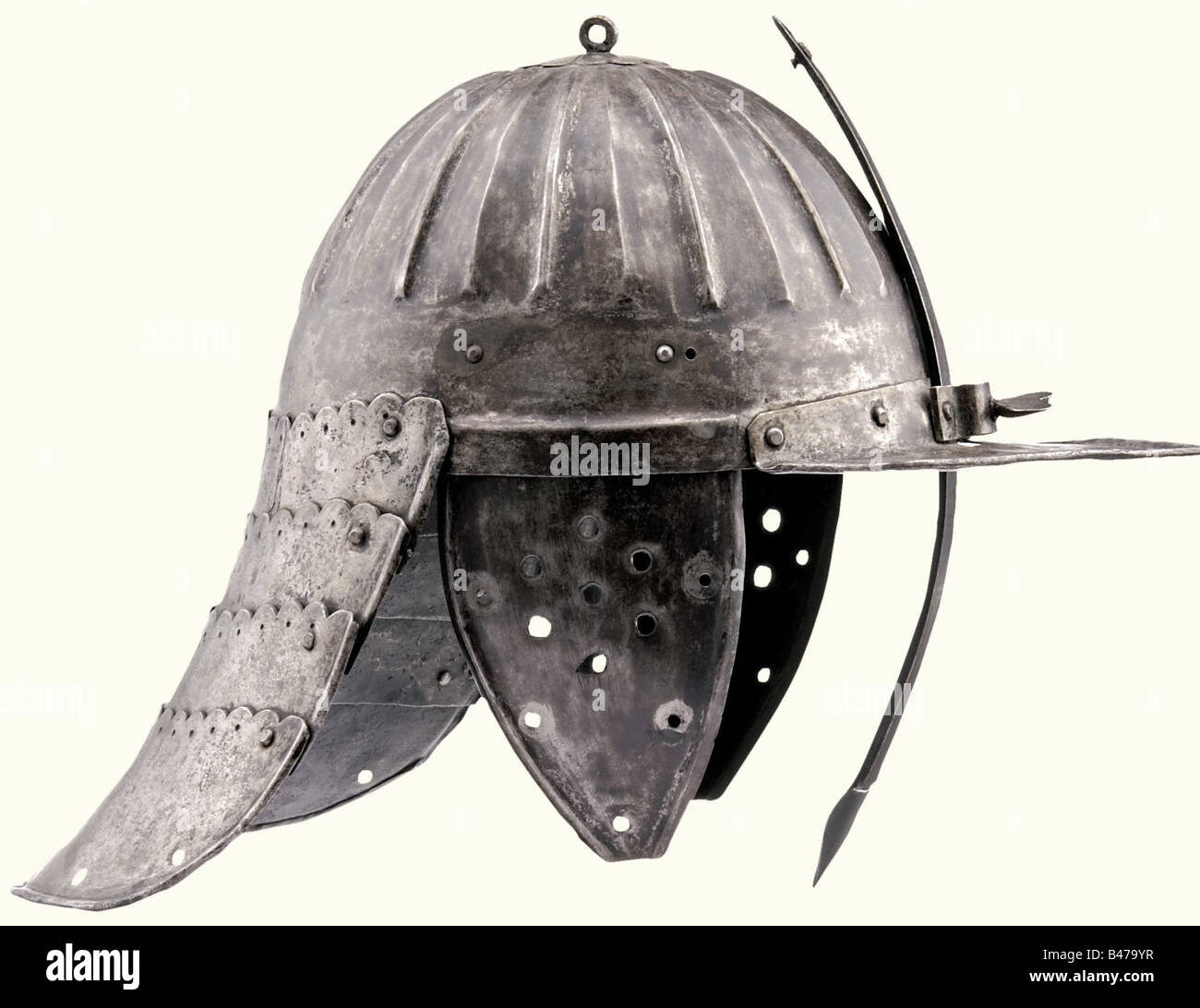 An officer's lobster tail helmet, German or Polish, circa 1630 The skull fluted 24 times with alternating ridges and decorative ribs. There is a ring attached to the top plate. The pointed brim has a turned under edge. It is attached with rivets. Adjustable nasal. The neck protector sliding on four lames with turned under rims, the upper edges with decorative lobes. Attached cheek protectors with seven perforations. Leather and rivets replaced. Height 26 cm. historic, historical, 17th century, defensive arms, weapons, arms, weapon, arm, fighting device, object,, Stock Photohttps://www.alamy.com/image-license-details/?v=1https://www.alamy.com/stock-photo-an-officers-lobster-tail-helmet-german-or-polish-circa-1630-the-skull-19830491.html
An officer's lobster tail helmet, German or Polish, circa 1630 The skull fluted 24 times with alternating ridges and decorative ribs. There is a ring attached to the top plate. The pointed brim has a turned under edge. It is attached with rivets. Adjustable nasal. The neck protector sliding on four lames with turned under rims, the upper edges with decorative lobes. Attached cheek protectors with seven perforations. Leather and rivets replaced. Height 26 cm. historic, historical, 17th century, defensive arms, weapons, arms, weapon, arm, fighting device, object,, Stock Photohttps://www.alamy.com/image-license-details/?v=1https://www.alamy.com/stock-photo-an-officers-lobster-tail-helmet-german-or-polish-circa-1630-the-skull-19830491.htmlRMB479YR–An officer's lobster tail helmet, German or Polish, circa 1630 The skull fluted 24 times with alternating ridges and decorative ribs. There is a ring attached to the top plate. The pointed brim has a turned under edge. It is attached with rivets. Adjustable nasal. The neck protector sliding on four lames with turned under rims, the upper edges with decorative lobes. Attached cheek protectors with seven perforations. Leather and rivets replaced. Height 26 cm. historic, historical, 17th century, defensive arms, weapons, arms, weapon, arm, fighting device, object,,
 The ribs of an old wooden fishing boat remain in Roseisle Bay, Moray Firth. SCO 9156 Stock Photohttps://www.alamy.com/image-license-details/?v=1https://www.alamy.com/the-ribs-of-an-old-wooden-fishing-boat-remain-in-roseisle-bay-moray-image64936751.html
The ribs of an old wooden fishing boat remain in Roseisle Bay, Moray Firth. SCO 9156 Stock Photohttps://www.alamy.com/image-license-details/?v=1https://www.alamy.com/the-ribs-of-an-old-wooden-fishing-boat-remain-in-roseisle-bay-moray-image64936751.htmlRMDNJ3DK–The ribs of an old wooden fishing boat remain in Roseisle Bay, Moray Firth. SCO 9156
 A German or Polish Zischägge, mid-17th century, One-piece skull embossed with six raised ribs, crown plate with ring finial. Riveted pointed peak with turned edge, the point marked 'M', on the underside old arsenal mark 'XIII'. Sliding nasal bar (added?) with wingscrew. Neck guard sliding on four lames. Movable cheek pieces pierced with seven holes for hearing. The inside with original leather lining, the hinges of the cheek pieces renewed. Height 28 cm. defensive arms, weapons, arms, weapon, arm, fighting device, object, objects, stills, clippin, Additional-Rights-Clearance-Info-Not-Available Stock Photohttps://www.alamy.com/image-license-details/?v=1https://www.alamy.com/a-german-or-polish-zischgge-mid-17th-century-one-piece-skull-embossed-with-six-raised-ribs-crown-plate-with-ring-finial-riveted-pointed-peak-with-turned-edge-the-point-marked-m-on-the-underside-old-arsenal-mark-xiii-sliding-nasal-bar-added-with-wingscrew-neck-guard-sliding-on-four-lames-movable-cheek-pieces-pierced-with-seven-holes-for-hearing-the-inside-with-original-leather-lining-the-hinges-of-the-cheek-pieces-renewed-height-28-cm-defensive-arms-weapons-arms-weapon-arm-fighting-device-object-objects-stills-clippin-additional-rights-clearance-info-not-available-image247620157.html
A German or Polish Zischägge, mid-17th century, One-piece skull embossed with six raised ribs, crown plate with ring finial. Riveted pointed peak with turned edge, the point marked 'M', on the underside old arsenal mark 'XIII'. Sliding nasal bar (added?) with wingscrew. Neck guard sliding on four lames. Movable cheek pieces pierced with seven holes for hearing. The inside with original leather lining, the hinges of the cheek pieces renewed. Height 28 cm. defensive arms, weapons, arms, weapon, arm, fighting device, object, objects, stills, clippin, Additional-Rights-Clearance-Info-Not-Available Stock Photohttps://www.alamy.com/image-license-details/?v=1https://www.alamy.com/a-german-or-polish-zischgge-mid-17th-century-one-piece-skull-embossed-with-six-raised-ribs-crown-plate-with-ring-finial-riveted-pointed-peak-with-turned-edge-the-point-marked-m-on-the-underside-old-arsenal-mark-xiii-sliding-nasal-bar-added-with-wingscrew-neck-guard-sliding-on-four-lames-movable-cheek-pieces-pierced-with-seven-holes-for-hearing-the-inside-with-original-leather-lining-the-hinges-of-the-cheek-pieces-renewed-height-28-cm-defensive-arms-weapons-arms-weapon-arm-fighting-device-object-objects-stills-clippin-additional-rights-clearance-info-not-available-image247620157.htmlRMTAT211–A German or Polish Zischägge, mid-17th century, One-piece skull embossed with six raised ribs, crown plate with ring finial. Riveted pointed peak with turned edge, the point marked 'M', on the underside old arsenal mark 'XIII'. Sliding nasal bar (added?) with wingscrew. Neck guard sliding on four lames. Movable cheek pieces pierced with seven holes for hearing. The inside with original leather lining, the hinges of the cheek pieces renewed. Height 28 cm. defensive arms, weapons, arms, weapon, arm, fighting device, object, objects, stills, clippin, Additional-Rights-Clearance-Info-Not-Available
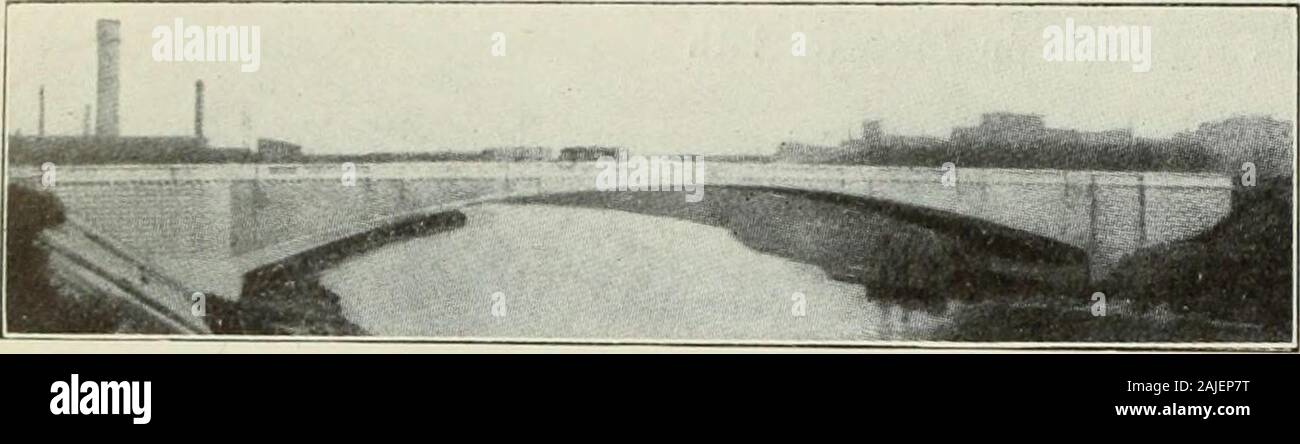 Canadian engineer . cessitatingpile foundations, covered with reinforced concrete grillage.This condition of subsoil would in itself, in most cases, leadto the use of shorter arch spans with greater relative rise,or to a girder bridge with only vertical reaction. Insteadof heavy and massive abutments to resist the lateral thrustof so fiat an arch, we find in the Risorgimento bridge,cellular construction with comparatively thin tace wallsbacked up by seven 12-inch vertical walls, one of which isin line with each of the seven ribs on the bridge. There THE CANADIAN ENGINEER Volume 22. is no doubt Stock Photohttps://www.alamy.com/image-license-details/?v=1https://www.alamy.com/canadian-engineer-cessitatingpile-foundations-covered-with-reinforced-concrete-grillagethis-condition-of-subsoil-would-in-itself-in-most-cases-leadto-the-use-of-shorter-arch-spans-with-greater-relative-riseor-to-a-girder-bridge-with-only-vertical-reaction-insteadof-heavy-and-massive-abutments-to-resist-the-lateral-thrustof-so-fiat-an-arch-we-find-in-the-risorgimento-bridgecellular-construction-with-comparatively-thin-tace-wallsbacked-up-by-seven-12-inch-vertical-walls-one-of-which-isin-line-with-each-of-the-seven-ribs-on-the-bridge-there-the-canadian-engineer-volume-22-is-no-doubt-image338385596.html
Canadian engineer . cessitatingpile foundations, covered with reinforced concrete grillage.This condition of subsoil would in itself, in most cases, leadto the use of shorter arch spans with greater relative rise,or to a girder bridge with only vertical reaction. Insteadof heavy and massive abutments to resist the lateral thrustof so fiat an arch, we find in the Risorgimento bridge,cellular construction with comparatively thin tace wallsbacked up by seven 12-inch vertical walls, one of which isin line with each of the seven ribs on the bridge. There THE CANADIAN ENGINEER Volume 22. is no doubt Stock Photohttps://www.alamy.com/image-license-details/?v=1https://www.alamy.com/canadian-engineer-cessitatingpile-foundations-covered-with-reinforced-concrete-grillagethis-condition-of-subsoil-would-in-itself-in-most-cases-leadto-the-use-of-shorter-arch-spans-with-greater-relative-riseor-to-a-girder-bridge-with-only-vertical-reaction-insteadof-heavy-and-massive-abutments-to-resist-the-lateral-thrustof-so-fiat-an-arch-we-find-in-the-risorgimento-bridgecellular-construction-with-comparatively-thin-tace-wallsbacked-up-by-seven-12-inch-vertical-walls-one-of-which-isin-line-with-each-of-the-seven-ribs-on-the-bridge-there-the-canadian-engineer-volume-22-is-no-doubt-image338385596.htmlRM2AJEP7T–Canadian engineer . cessitatingpile foundations, covered with reinforced concrete grillage.This condition of subsoil would in itself, in most cases, leadto the use of shorter arch spans with greater relative rise,or to a girder bridge with only vertical reaction. Insteadof heavy and massive abutments to resist the lateral thrustof so fiat an arch, we find in the Risorgimento bridge,cellular construction with comparatively thin tace wallsbacked up by seven 12-inch vertical walls, one of which isin line with each of the seven ribs on the bridge. There THE CANADIAN ENGINEER Volume 22. is no doubt
 A German or Polish Zischägge, mid-17th century, One-piece skull embossed with six raised ribs, crown plate with ring finial. Riveted pointed peak with turned edge, the point marked 'M', on the underside old arsenal mark 'XIII'. Sliding nasal bar (added?) with wingscrew. Neck guard sliding on four lames. Movable cheek pieces pierced with seven holes for hearing. The inside with original leather lining, the hinges of the cheek pieces renewed. Height 28 cm. defensive arms, weapons, arms, weapon, arm, fighting device, object, objects, stills, clippin, Additional-Rights-Clearance-Info-Not-Available Stock Photohttps://www.alamy.com/image-license-details/?v=1https://www.alamy.com/a-german-or-polish-zischgge-mid-17th-century-one-piece-skull-embossed-with-six-raised-ribs-crown-plate-with-ring-finial-riveted-pointed-peak-with-turned-edge-the-point-marked-m-on-the-underside-old-arsenal-mark-xiii-sliding-nasal-bar-added-with-wingscrew-neck-guard-sliding-on-four-lames-movable-cheek-pieces-pierced-with-seven-holes-for-hearing-the-inside-with-original-leather-lining-the-hinges-of-the-cheek-pieces-renewed-height-28-cm-defensive-arms-weapons-arms-weapon-arm-fighting-device-object-objects-stills-clippin-additional-rights-clearance-info-not-available-image247620130.html
A German or Polish Zischägge, mid-17th century, One-piece skull embossed with six raised ribs, crown plate with ring finial. Riveted pointed peak with turned edge, the point marked 'M', on the underside old arsenal mark 'XIII'. Sliding nasal bar (added?) with wingscrew. Neck guard sliding on four lames. Movable cheek pieces pierced with seven holes for hearing. The inside with original leather lining, the hinges of the cheek pieces renewed. Height 28 cm. defensive arms, weapons, arms, weapon, arm, fighting device, object, objects, stills, clippin, Additional-Rights-Clearance-Info-Not-Available Stock Photohttps://www.alamy.com/image-license-details/?v=1https://www.alamy.com/a-german-or-polish-zischgge-mid-17th-century-one-piece-skull-embossed-with-six-raised-ribs-crown-plate-with-ring-finial-riveted-pointed-peak-with-turned-edge-the-point-marked-m-on-the-underside-old-arsenal-mark-xiii-sliding-nasal-bar-added-with-wingscrew-neck-guard-sliding-on-four-lames-movable-cheek-pieces-pierced-with-seven-holes-for-hearing-the-inside-with-original-leather-lining-the-hinges-of-the-cheek-pieces-renewed-height-28-cm-defensive-arms-weapons-arms-weapon-arm-fighting-device-object-objects-stills-clippin-additional-rights-clearance-info-not-available-image247620130.htmlRMTAT202–A German or Polish Zischägge, mid-17th century, One-piece skull embossed with six raised ribs, crown plate with ring finial. Riveted pointed peak with turned edge, the point marked 'M', on the underside old arsenal mark 'XIII'. Sliding nasal bar (added?) with wingscrew. Neck guard sliding on four lames. Movable cheek pieces pierced with seven holes for hearing. The inside with original leather lining, the hinges of the cheek pieces renewed. Height 28 cm. defensive arms, weapons, arms, weapon, arm, fighting device, object, objects, stills, clippin, Additional-Rights-Clearance-Info-Not-Available
 Duomo di Firenze, Tuscany, Italy: red-tiled roofs and walkway, together with oculi and white marble. At the top of the image is the rough brick base left on seven sides of the cathedral’s octagonal dome, below the dome’s terracotta tiles and ribs of white marble. In 1507, Baccio d’Agnolo (1462 - 1543) began adding a balcony to the base of the dome; however, in 1515, when a balcony had been added to only one of the dome’s eight sides, Michelangelo scoffed at the balcony’s appearance and work was halted. Stock Photohttps://www.alamy.com/image-license-details/?v=1https://www.alamy.com/duomo-di-firenze-tuscany-italy-red-tiled-roofs-and-walkway-together-with-oculi-and-white-marble-at-the-top-of-the-image-is-the-rough-brick-base-left-on-seven-sides-of-the-cathedrals-octagonal-dome-below-the-domes-terracotta-tiles-and-ribs-of-white-marble-in-1507-baccio-dagnolo-1462-1543-began-adding-a-balcony-to-the-base-of-the-dome-however-in-1515-when-a-balcony-had-been-added-to-only-one-of-the-domes-eight-sides-michelangelo-scoffed-at-the-balconys-appearance-and-work-was-halted-image570920463.html
Duomo di Firenze, Tuscany, Italy: red-tiled roofs and walkway, together with oculi and white marble. At the top of the image is the rough brick base left on seven sides of the cathedral’s octagonal dome, below the dome’s terracotta tiles and ribs of white marble. In 1507, Baccio d’Agnolo (1462 - 1543) began adding a balcony to the base of the dome; however, in 1515, when a balcony had been added to only one of the dome’s eight sides, Michelangelo scoffed at the balcony’s appearance and work was halted. Stock Photohttps://www.alamy.com/image-license-details/?v=1https://www.alamy.com/duomo-di-firenze-tuscany-italy-red-tiled-roofs-and-walkway-together-with-oculi-and-white-marble-at-the-top-of-the-image-is-the-rough-brick-base-left-on-seven-sides-of-the-cathedrals-octagonal-dome-below-the-domes-terracotta-tiles-and-ribs-of-white-marble-in-1507-baccio-dagnolo-1462-1543-began-adding-a-balcony-to-the-base-of-the-dome-however-in-1515-when-a-balcony-had-been-added-to-only-one-of-the-domes-eight-sides-michelangelo-scoffed-at-the-balconys-appearance-and-work-was-halted-image570920463.htmlRF2T4RJTF–Duomo di Firenze, Tuscany, Italy: red-tiled roofs and walkway, together with oculi and white marble. At the top of the image is the rough brick base left on seven sides of the cathedral’s octagonal dome, below the dome’s terracotta tiles and ribs of white marble. In 1507, Baccio d’Agnolo (1462 - 1543) began adding a balcony to the base of the dome; however, in 1515, when a balcony had been added to only one of the dome’s eight sides, Michelangelo scoffed at the balcony’s appearance and work was halted.
 Mumified buffalo high on the slopes of Kilimanjaro that came to lick salt off the rocks and got wedged in a cave, Mount Kilimanjaro, Tanzania. Stock Photohttps://www.alamy.com/image-license-details/?v=1https://www.alamy.com/mumified-buffalo-high-on-the-slopes-of-kilimanjaro-that-came-to-lick-salt-off-the-rocks-and-got-wedged-in-a-cave-mount-kilimanjaro-tanzania-image216968624.html
Mumified buffalo high on the slopes of Kilimanjaro that came to lick salt off the rocks and got wedged in a cave, Mount Kilimanjaro, Tanzania. Stock Photohttps://www.alamy.com/image-license-details/?v=1https://www.alamy.com/mumified-buffalo-high-on-the-slopes-of-kilimanjaro-that-came-to-lick-salt-off-the-rocks-and-got-wedged-in-a-cave-mount-kilimanjaro-tanzania-image216968624.htmlRFPGYNKC–Mumified buffalo high on the slopes of Kilimanjaro that came to lick salt off the rocks and got wedged in a cave, Mount Kilimanjaro, Tanzania.
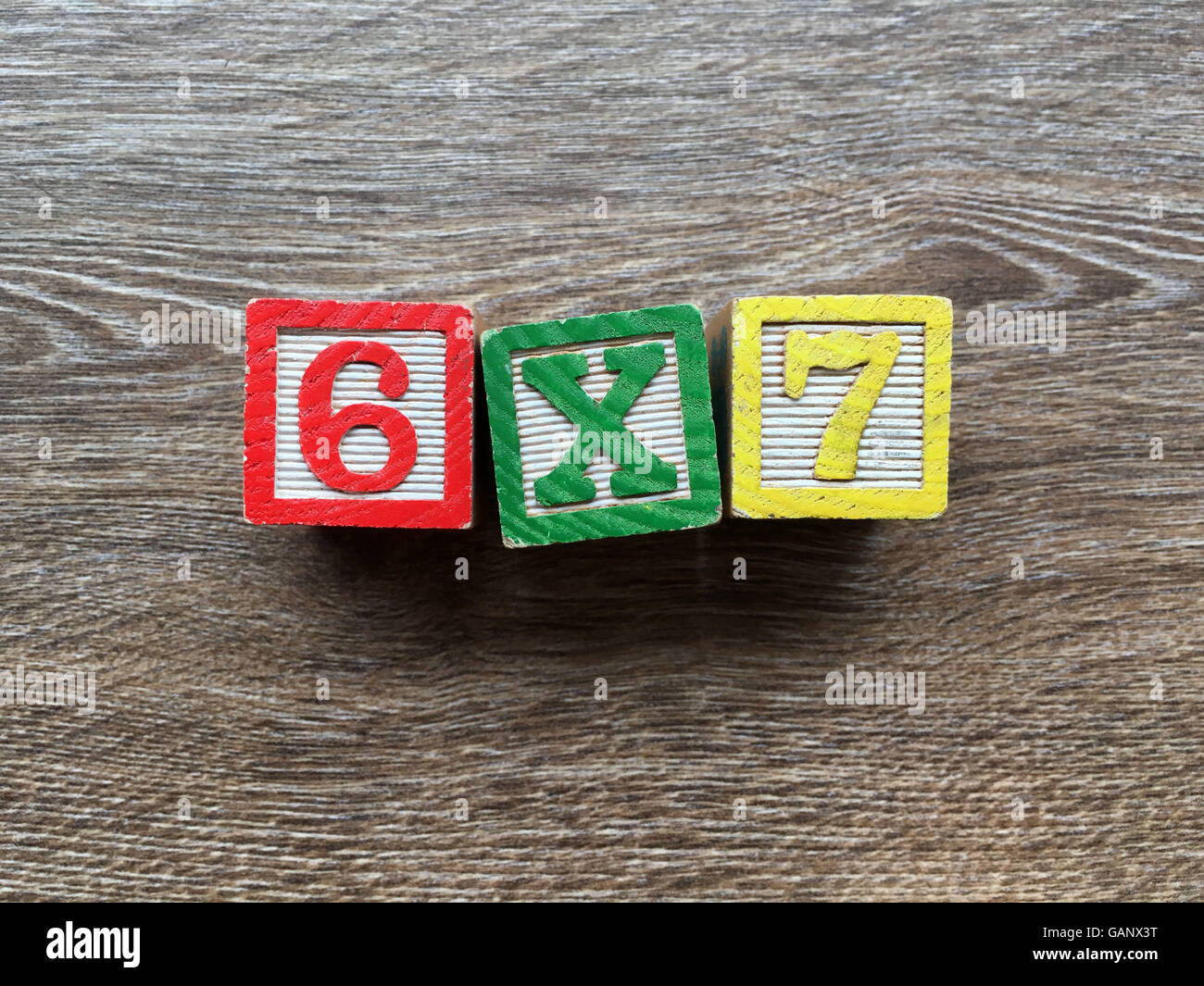 6x7 Multiplication done with wood blocks numbers Stock Photohttps://www.alamy.com/image-license-details/?v=1https://www.alamy.com/stock-photo-6x7-multiplication-done-with-wood-blocks-numbers-109890252.html
6x7 Multiplication done with wood blocks numbers Stock Photohttps://www.alamy.com/image-license-details/?v=1https://www.alamy.com/stock-photo-6x7-multiplication-done-with-wood-blocks-numbers-109890252.htmlRFGANX3T–6x7 Multiplication done with wood blocks numbers
 Abstract image of a newly formed Maple Leaf Stock Photohttps://www.alamy.com/image-license-details/?v=1https://www.alamy.com/stock-photo-abstract-image-of-a-newly-formed-maple-leaf-84507296.html
Abstract image of a newly formed Maple Leaf Stock Photohttps://www.alamy.com/image-license-details/?v=1https://www.alamy.com/stock-photo-abstract-image-of-a-newly-formed-maple-leaf-84507296.htmlRMEWDHWM–Abstract image of a newly formed Maple Leaf
 The Ironbribge, built by Abraham Darby III on the river Seven at Ironbridge, Telford. Stock Photohttps://www.alamy.com/image-license-details/?v=1https://www.alamy.com/stock-photo-the-ironbribge-built-by-abraham-darby-iii-on-the-river-seven-at-ironbridge-147638513.html
The Ironbribge, built by Abraham Darby III on the river Seven at Ironbridge, Telford. Stock Photohttps://www.alamy.com/image-license-details/?v=1https://www.alamy.com/stock-photo-the-ironbribge-built-by-abraham-darby-iii-on-the-river-seven-at-ironbridge-147638513.htmlRMJG5EC1–The Ironbribge, built by Abraham Darby III on the river Seven at Ironbridge, Telford.
 Auger adorned with saints in medallions, The cast round auger extends upwards and has a protruding profiled edge. The wall is vertically divided by seven protruding ribs adorned with three buttons. These are connected to each other by a pearl border across the middle. Seven reliefs, mostly in a medallion, are placed above and below: Mary with child and crown-bearing angels, Mary with child and a lily, Joris and the Dragon, the face of Christ, the head of John the Baptist, a bishop, Catharina, Christoffel, the Annunciation, a female figure, and an amazon. The protruding edge is decorated Stock Photohttps://www.alamy.com/image-license-details/?v=1https://www.alamy.com/auger-adorned-with-saints-in-medallions-the-cast-round-auger-extends-upwards-and-has-a-protruding-profiled-edge-the-wall-is-vertically-divided-by-seven-protruding-ribs-adorned-with-three-buttons-these-are-connected-to-each-other-by-a-pearl-border-across-the-middle-seven-reliefs-mostly-in-a-medallion-are-placed-above-and-below-mary-with-child-and-crown-bearing-angels-mary-with-child-and-a-lily-joris-and-the-dragon-the-face-of-christ-the-head-of-john-the-baptist-a-bishop-catharina-christoffel-the-annunciation-a-female-figure-and-an-amazon-the-protruding-edge-is-decorated-image261359198.html
Auger adorned with saints in medallions, The cast round auger extends upwards and has a protruding profiled edge. The wall is vertically divided by seven protruding ribs adorned with three buttons. These are connected to each other by a pearl border across the middle. Seven reliefs, mostly in a medallion, are placed above and below: Mary with child and crown-bearing angels, Mary with child and a lily, Joris and the Dragon, the face of Christ, the head of John the Baptist, a bishop, Catharina, Christoffel, the Annunciation, a female figure, and an amazon. The protruding edge is decorated Stock Photohttps://www.alamy.com/image-license-details/?v=1https://www.alamy.com/auger-adorned-with-saints-in-medallions-the-cast-round-auger-extends-upwards-and-has-a-protruding-profiled-edge-the-wall-is-vertically-divided-by-seven-protruding-ribs-adorned-with-three-buttons-these-are-connected-to-each-other-by-a-pearl-border-across-the-middle-seven-reliefs-mostly-in-a-medallion-are-placed-above-and-below-mary-with-child-and-crown-bearing-angels-mary-with-child-and-a-lily-joris-and-the-dragon-the-face-of-christ-the-head-of-john-the-baptist-a-bishop-catharina-christoffel-the-annunciation-a-female-figure-and-an-amazon-the-protruding-edge-is-decorated-image261359198.htmlRMW55X92–Auger adorned with saints in medallions, The cast round auger extends upwards and has a protruding profiled edge. The wall is vertically divided by seven protruding ribs adorned with three buttons. These are connected to each other by a pearl border across the middle. Seven reliefs, mostly in a medallion, are placed above and below: Mary with child and crown-bearing angels, Mary with child and a lily, Joris and the Dragon, the face of Christ, the head of John the Baptist, a bishop, Catharina, Christoffel, the Annunciation, a female figure, and an amazon. The protruding edge is decorated
 Number 7, digit on banana plant leaf background Stock Photohttps://www.alamy.com/image-license-details/?v=1https://www.alamy.com/number-7-digit-on-banana-plant-leaf-background-image478539409.html
Number 7, digit on banana plant leaf background Stock Photohttps://www.alamy.com/image-license-details/?v=1https://www.alamy.com/number-7-digit-on-banana-plant-leaf-background-image478539409.htmlRF2JPF9W5–Number 7, digit on banana plant leaf background
 Strip bobbin with flour or star in square with point sculpt, anonymous, c. 1900 - c. 1924 Strip of natural-colored bobbin, cluny side. The repeating pattern consists of an open -worked square, which alternately stands a star or a flower with eight points or eight petals. A triangle hangs under the vertical sides of each square. The consecutive triangles form a sculpy edge, which is finished with drop -shaped lobes made with potented braids. The motifs and lines in the pattern are largely made in form, with two, three or seven ribs. Various connections are made with potented braids. The circul Stock Photohttps://www.alamy.com/image-license-details/?v=1https://www.alamy.com/strip-bobbin-with-flour-or-star-in-square-with-point-sculpt-anonymous-c-1900-c-1924-strip-of-natural-colored-bobbin-cluny-side-the-repeating-pattern-consists-of-an-open-worked-square-which-alternately-stands-a-star-or-a-flower-with-eight-points-or-eight-petals-a-triangle-hangs-under-the-vertical-sides-of-each-square-the-consecutive-triangles-form-a-sculpy-edge-which-is-finished-with-drop-shaped-lobes-made-with-potented-braids-the-motifs-and-lines-in-the-pattern-are-largely-made-in-form-with-two-three-or-seven-ribs-various-connections-are-made-with-potented-braids-the-circul-image590898247.html
Strip bobbin with flour or star in square with point sculpt, anonymous, c. 1900 - c. 1924 Strip of natural-colored bobbin, cluny side. The repeating pattern consists of an open -worked square, which alternately stands a star or a flower with eight points or eight petals. A triangle hangs under the vertical sides of each square. The consecutive triangles form a sculpy edge, which is finished with drop -shaped lobes made with potented braids. The motifs and lines in the pattern are largely made in form, with two, three or seven ribs. Various connections are made with potented braids. The circul Stock Photohttps://www.alamy.com/image-license-details/?v=1https://www.alamy.com/strip-bobbin-with-flour-or-star-in-square-with-point-sculpt-anonymous-c-1900-c-1924-strip-of-natural-colored-bobbin-cluny-side-the-repeating-pattern-consists-of-an-open-worked-square-which-alternately-stands-a-star-or-a-flower-with-eight-points-or-eight-petals-a-triangle-hangs-under-the-vertical-sides-of-each-square-the-consecutive-triangles-form-a-sculpy-edge-which-is-finished-with-drop-shaped-lobes-made-with-potented-braids-the-motifs-and-lines-in-the-pattern-are-largely-made-in-form-with-two-three-or-seven-ribs-various-connections-are-made-with-potented-braids-the-circul-image590898247.htmlRM2W99MMR–Strip bobbin with flour or star in square with point sculpt, anonymous, c. 1900 - c. 1924 Strip of natural-colored bobbin, cluny side. The repeating pattern consists of an open -worked square, which alternately stands a star or a flower with eight points or eight petals. A triangle hangs under the vertical sides of each square. The consecutive triangles form a sculpy edge, which is finished with drop -shaped lobes made with potented braids. The motifs and lines in the pattern are largely made in form, with two, three or seven ribs. Various connections are made with potented braids. The circul
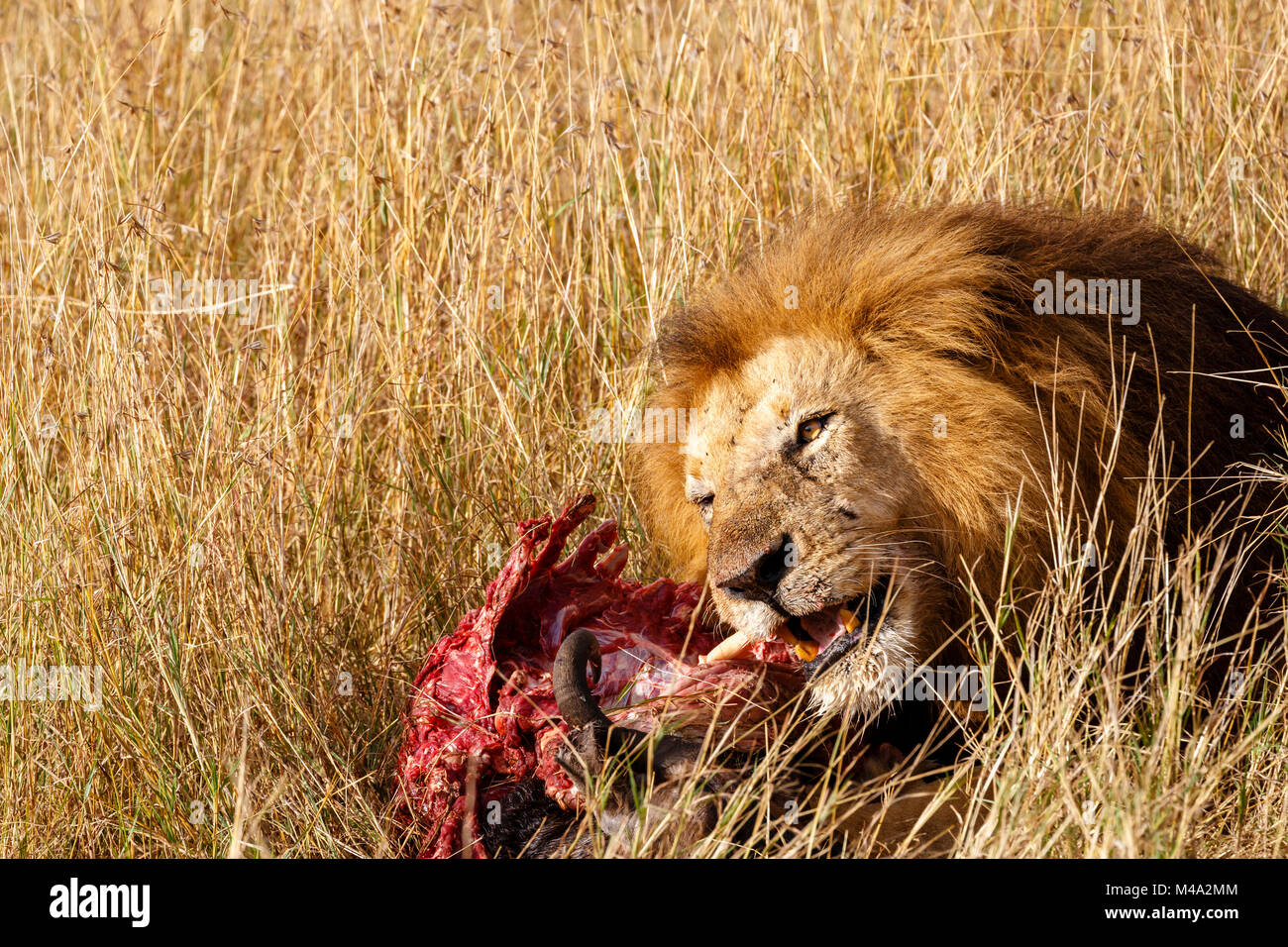 Mature male lion (Panthera leo) eats his prey, the red bloodied ribs of the carcass of a Cape buffalo, in long grass, Masai Mara, Kenya Stock Photohttps://www.alamy.com/image-license-details/?v=1https://www.alamy.com/stock-photo-mature-male-lion-panthera-leo-eats-his-prey-the-red-bloodied-ribs-174783972.html
Mature male lion (Panthera leo) eats his prey, the red bloodied ribs of the carcass of a Cape buffalo, in long grass, Masai Mara, Kenya Stock Photohttps://www.alamy.com/image-license-details/?v=1https://www.alamy.com/stock-photo-mature-male-lion-panthera-leo-eats-his-prey-the-red-bloodied-ribs-174783972.htmlRMM4A2MM–Mature male lion (Panthera leo) eats his prey, the red bloodied ribs of the carcass of a Cape buffalo, in long grass, Masai Mara, Kenya
 Strook kloskant met bloem of ster in vierkant met puntschulp.Strip natural colosside, cluny side. The repeating pattern consists of a cut-away square, in which a star or a flour with eight points or eight petals is alternately. There is a triangle under the vertical sides of each square. The consecutive triangles form a slip edge, which is finished with drip-shaped lobes made with picoted braids. The motifs and lines in the pattern are largely made in shape stroke, with two, three or seven ribs. Different connections are made with picoted braids. The circular flower heart is made in linen stro Stock Photohttps://www.alamy.com/image-license-details/?v=1https://www.alamy.com/strook-kloskant-met-bloem-of-ster-in-vierkant-met-puntschulpstrip-natural-colosside-cluny-side-the-repeating-pattern-consists-of-a-cut-away-square-in-which-a-star-or-a-flour-with-eight-points-or-eight-petals-is-alternately-there-is-a-triangle-under-the-vertical-sides-of-each-square-the-consecutive-triangles-form-a-slip-edge-which-is-finished-with-drip-shaped-lobes-made-with-picoted-braids-the-motifs-and-lines-in-the-pattern-are-largely-made-in-shape-stroke-with-two-three-or-seven-ribs-different-connections-are-made-with-picoted-braids-the-circular-flower-heart-is-made-in-linen-stro-image414430479.html
Strook kloskant met bloem of ster in vierkant met puntschulp.Strip natural colosside, cluny side. The repeating pattern consists of a cut-away square, in which a star or a flour with eight points or eight petals is alternately. There is a triangle under the vertical sides of each square. The consecutive triangles form a slip edge, which is finished with drip-shaped lobes made with picoted braids. The motifs and lines in the pattern are largely made in shape stroke, with two, three or seven ribs. Different connections are made with picoted braids. The circular flower heart is made in linen stro Stock Photohttps://www.alamy.com/image-license-details/?v=1https://www.alamy.com/strook-kloskant-met-bloem-of-ster-in-vierkant-met-puntschulpstrip-natural-colosside-cluny-side-the-repeating-pattern-consists-of-a-cut-away-square-in-which-a-star-or-a-flour-with-eight-points-or-eight-petals-is-alternately-there-is-a-triangle-under-the-vertical-sides-of-each-square-the-consecutive-triangles-form-a-slip-edge-which-is-finished-with-drip-shaped-lobes-made-with-picoted-braids-the-motifs-and-lines-in-the-pattern-are-largely-made-in-shape-stroke-with-two-three-or-seven-ribs-different-connections-are-made-with-picoted-braids-the-circular-flower-heart-is-made-in-linen-stro-image414430479.htmlRM2F26X8F–Strook kloskant met bloem of ster in vierkant met puntschulp.Strip natural colosside, cluny side. The repeating pattern consists of a cut-away square, in which a star or a flour with eight points or eight petals is alternately. There is a triangle under the vertical sides of each square. The consecutive triangles form a slip edge, which is finished with drip-shaped lobes made with picoted braids. The motifs and lines in the pattern are largely made in shape stroke, with two, three or seven ribs. Different connections are made with picoted braids. The circular flower heart is made in linen stro
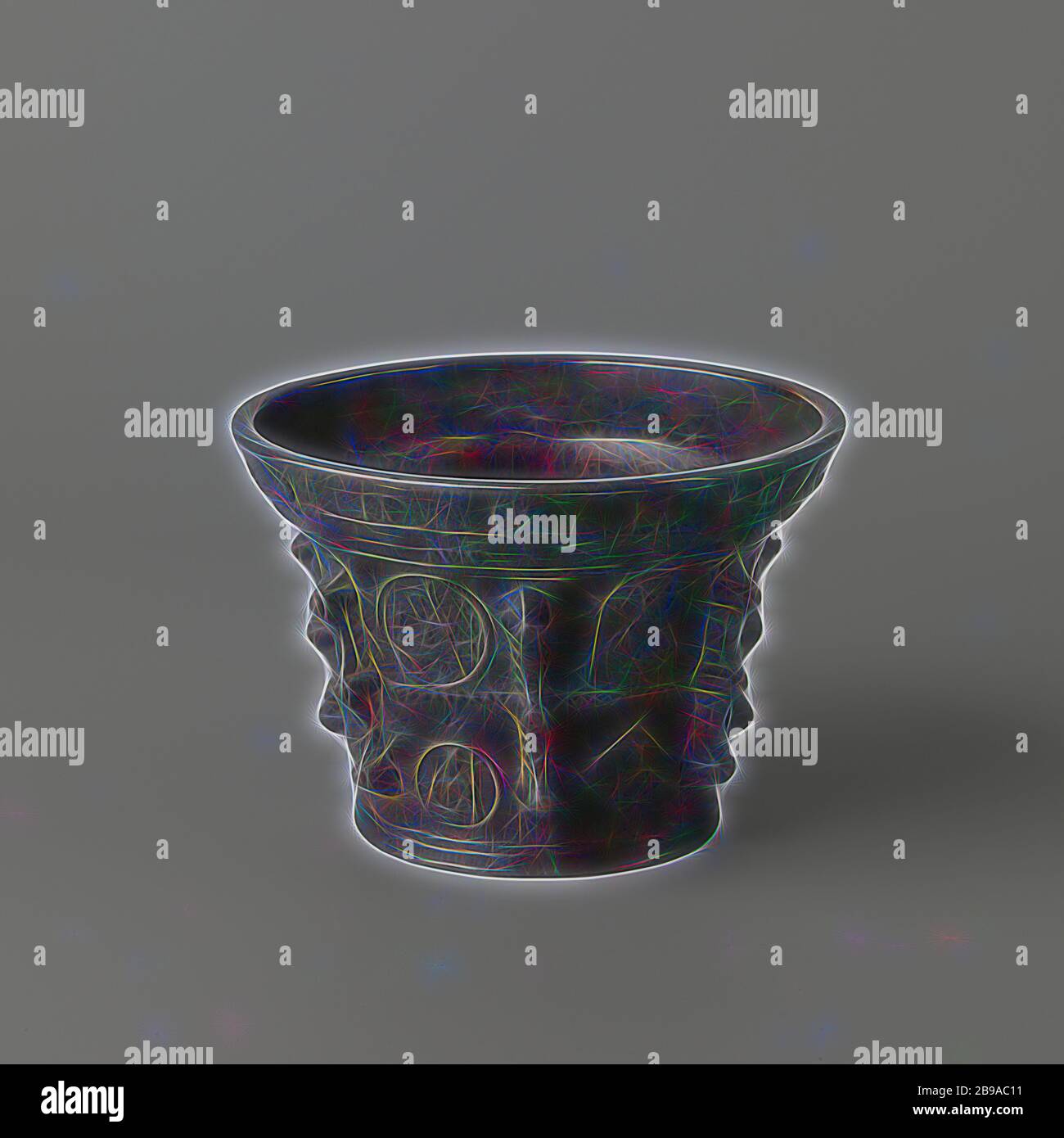 Auger adorned with saints in medallions, The cast round auger extends upwards and has a protruding profiled edge. The wall is vertically divided by seven protruding ribs adorned with three buttons. These are connected to each other by a pearl border across the middle. Seven reliefs, mostly in a medallion, are placed above and below: Mary with child and crown-bearing angels, Mary with child and a lily, Joris and the Dragon, the face of Christ, the head of John the Baptist, a bishop, Catharina, Christoffel, the Annunciation, a female figure, and an amazon. The protruding edge is decorated with a Stock Photohttps://www.alamy.com/image-license-details/?v=1https://www.alamy.com/auger-adorned-with-saints-in-medallions-the-cast-round-auger-extends-upwards-and-has-a-protruding-profiled-edge-the-wall-is-vertically-divided-by-seven-protruding-ribs-adorned-with-three-buttons-these-are-connected-to-each-other-by-a-pearl-border-across-the-middle-seven-reliefs-mostly-in-a-medallion-are-placed-above-and-below-mary-with-child-and-crown-bearing-angels-mary-with-child-and-a-lily-joris-and-the-dragon-the-face-of-christ-the-head-of-john-the-baptist-a-bishop-catharina-christoffel-the-annunciation-a-female-figure-and-an-amazon-the-protruding-edge-is-decorated-with-a-image349968221.html
Auger adorned with saints in medallions, The cast round auger extends upwards and has a protruding profiled edge. The wall is vertically divided by seven protruding ribs adorned with three buttons. These are connected to each other by a pearl border across the middle. Seven reliefs, mostly in a medallion, are placed above and below: Mary with child and crown-bearing angels, Mary with child and a lily, Joris and the Dragon, the face of Christ, the head of John the Baptist, a bishop, Catharina, Christoffel, the Annunciation, a female figure, and an amazon. The protruding edge is decorated with a Stock Photohttps://www.alamy.com/image-license-details/?v=1https://www.alamy.com/auger-adorned-with-saints-in-medallions-the-cast-round-auger-extends-upwards-and-has-a-protruding-profiled-edge-the-wall-is-vertically-divided-by-seven-protruding-ribs-adorned-with-three-buttons-these-are-connected-to-each-other-by-a-pearl-border-across-the-middle-seven-reliefs-mostly-in-a-medallion-are-placed-above-and-below-mary-with-child-and-crown-bearing-angels-mary-with-child-and-a-lily-joris-and-the-dragon-the-face-of-christ-the-head-of-john-the-baptist-a-bishop-catharina-christoffel-the-annunciation-a-female-figure-and-an-amazon-the-protruding-edge-is-decorated-with-a-image349968221.htmlRF2B9AC11–Auger adorned with saints in medallions, The cast round auger extends upwards and has a protruding profiled edge. The wall is vertically divided by seven protruding ribs adorned with three buttons. These are connected to each other by a pearl border across the middle. Seven reliefs, mostly in a medallion, are placed above and below: Mary with child and crown-bearing angels, Mary with child and a lily, Joris and the Dragon, the face of Christ, the head of John the Baptist, a bishop, Catharina, Christoffel, the Annunciation, a female figure, and an amazon. The protruding edge is decorated with a
 Steel clamping side with coarse wire as an example of shape stroke with seven ribs with a fragment side in which this technique has been applied. Steel natural colosside with coarse thread as an example of shape stroke with seven ribs with a fragment side in which this technique has been applied. The date concerns the steel. Stock Photohttps://www.alamy.com/image-license-details/?v=1https://www.alamy.com/steel-clamping-side-with-coarse-wire-as-an-example-of-shape-stroke-with-seven-ribs-with-a-fragment-side-in-which-this-technique-has-been-applied-steel-natural-colosside-with-coarse-thread-as-an-example-of-shape-stroke-with-seven-ribs-with-a-fragment-side-in-which-this-technique-has-been-applied-the-date-concerns-the-steel-image432945462.html
Steel clamping side with coarse wire as an example of shape stroke with seven ribs with a fragment side in which this technique has been applied. Steel natural colosside with coarse thread as an example of shape stroke with seven ribs with a fragment side in which this technique has been applied. The date concerns the steel. Stock Photohttps://www.alamy.com/image-license-details/?v=1https://www.alamy.com/steel-clamping-side-with-coarse-wire-as-an-example-of-shape-stroke-with-seven-ribs-with-a-fragment-side-in-which-this-technique-has-been-applied-steel-natural-colosside-with-coarse-thread-as-an-example-of-shape-stroke-with-seven-ribs-with-a-fragment-side-in-which-this-technique-has-been-applied-the-date-concerns-the-steel-image432945462.htmlRM2G4AA9X–Steel clamping side with coarse wire as an example of shape stroke with seven ribs with a fragment side in which this technique has been applied. Steel natural colosside with coarse thread as an example of shape stroke with seven ribs with a fragment side in which this technique has been applied. The date concerns the steel.
 Art inspired by Glass ribbed bottle, Early Imperial, 1st century A.D., Roman, Glass; blown and tooled, H.: 2 1/4 in. (5.7 cm), Glass, Translucent light green. Everted, horizontal rim; cylindrical, slightly funnel-shaped neck; squat piriform body; slightly concave bottom. On body, seven, Classic works modernized by Artotop with a splash of modernity. Shapes, color and value, eye-catching visual impact on art. Emotions through freedom of artworks in a contemporary way. A timeless message pursuing a wildly creative new direction. Artists turning to the digital medium and creating the Artotop NFT Stock Photohttps://www.alamy.com/image-license-details/?v=1https://www.alamy.com/art-inspired-by-glass-ribbed-bottle-early-imperial-1st-century-ad-roman-glass-blown-and-tooled-h-2-14-in-57-cm-glass-translucent-light-green-everted-horizontal-rim-cylindrical-slightly-funnel-shaped-neck-squat-piriform-body-slightly-concave-bottom-on-body-seven-classic-works-modernized-by-artotop-with-a-splash-of-modernity-shapes-color-and-value-eye-catching-visual-impact-on-art-emotions-through-freedom-of-artworks-in-a-contemporary-way-a-timeless-message-pursuing-a-wildly-creative-new-direction-artists-turning-to-the-digital-medium-and-creating-the-artotop-nft-image462783783.html
Art inspired by Glass ribbed bottle, Early Imperial, 1st century A.D., Roman, Glass; blown and tooled, H.: 2 1/4 in. (5.7 cm), Glass, Translucent light green. Everted, horizontal rim; cylindrical, slightly funnel-shaped neck; squat piriform body; slightly concave bottom. On body, seven, Classic works modernized by Artotop with a splash of modernity. Shapes, color and value, eye-catching visual impact on art. Emotions through freedom of artworks in a contemporary way. A timeless message pursuing a wildly creative new direction. Artists turning to the digital medium and creating the Artotop NFT Stock Photohttps://www.alamy.com/image-license-details/?v=1https://www.alamy.com/art-inspired-by-glass-ribbed-bottle-early-imperial-1st-century-ad-roman-glass-blown-and-tooled-h-2-14-in-57-cm-glass-translucent-light-green-everted-horizontal-rim-cylindrical-slightly-funnel-shaped-neck-squat-piriform-body-slightly-concave-bottom-on-body-seven-classic-works-modernized-by-artotop-with-a-splash-of-modernity-shapes-color-and-value-eye-catching-visual-impact-on-art-emotions-through-freedom-of-artworks-in-a-contemporary-way-a-timeless-message-pursuing-a-wildly-creative-new-direction-artists-turning-to-the-digital-medium-and-creating-the-artotop-nft-image462783783.htmlRF2HTWHC7–Art inspired by Glass ribbed bottle, Early Imperial, 1st century A.D., Roman, Glass; blown and tooled, H.: 2 1/4 in. (5.7 cm), Glass, Translucent light green. Everted, horizontal rim; cylindrical, slightly funnel-shaped neck; squat piriform body; slightly concave bottom. On body, seven, Classic works modernized by Artotop with a splash of modernity. Shapes, color and value, eye-catching visual impact on art. Emotions through freedom of artworks in a contemporary way. A timeless message pursuing a wildly creative new direction. Artists turning to the digital medium and creating the Artotop NFT
 Ribs and vertebrae: seven figures. Ink and watercolour, 1830/1835?, after W. Cheselden, ca. 1733. Stock Photohttps://www.alamy.com/image-license-details/?v=1https://www.alamy.com/ribs-and-vertebrae-seven-figures-ink-and-watercolour-18301835-after-w-cheselden-ca-1733-image449988160.html
Ribs and vertebrae: seven figures. Ink and watercolour, 1830/1835?, after W. Cheselden, ca. 1733. Stock Photohttps://www.alamy.com/image-license-details/?v=1https://www.alamy.com/ribs-and-vertebrae-seven-figures-ink-and-watercolour-18301835-after-w-cheselden-ca-1733-image449988160.htmlRM2H42MDM–Ribs and vertebrae: seven figures. Ink and watercolour, 1830/1835?, after W. Cheselden, ca. 1733.
 Jack with inscription: DEVS SPES MEA 1565, The molded round jack widens upwards, has a profiled foot and is provided with two rectangular ears. At the top between two ribs the inscription in Latin majuskels DEVS SPES MEA 1565 with punctuation consisting of a rosette with three large and three small leaves (four times). On the wall, against the upper of the two profiled ribs, is a frieze consisting of ram heads with garlands in between (seven times)., Thomas Both (attributed to), 1565, bronze (metal), founding, h 13.2 cm × d 13.8 cm × w 16.1 cm, Reimagined by Gibon, design of warm cheerful glow Stock Photohttps://www.alamy.com/image-license-details/?v=1https://www.alamy.com/jack-with-inscription-devs-spes-mea-1565-the-molded-round-jack-widens-upwards-has-a-profiled-foot-and-is-provided-with-two-rectangular-ears-at-the-top-between-two-ribs-the-inscription-in-latin-majuskels-devs-spes-mea-1565-with-punctuation-consisting-of-a-rosette-with-three-large-and-three-small-leaves-four-times-on-the-wall-against-the-upper-of-the-two-profiled-ribs-is-a-frieze-consisting-of-ram-heads-with-garlands-in-between-seven-times-thomas-both-attributed-to-1565-bronze-metal-founding-h-132-cm-d-138-cm-w-161-cm-reimagined-by-gibon-design-of-warm-cheerful-glow-image349978365.html
Jack with inscription: DEVS SPES MEA 1565, The molded round jack widens upwards, has a profiled foot and is provided with two rectangular ears. At the top between two ribs the inscription in Latin majuskels DEVS SPES MEA 1565 with punctuation consisting of a rosette with three large and three small leaves (four times). On the wall, against the upper of the two profiled ribs, is a frieze consisting of ram heads with garlands in between (seven times)., Thomas Both (attributed to), 1565, bronze (metal), founding, h 13.2 cm × d 13.8 cm × w 16.1 cm, Reimagined by Gibon, design of warm cheerful glow Stock Photohttps://www.alamy.com/image-license-details/?v=1https://www.alamy.com/jack-with-inscription-devs-spes-mea-1565-the-molded-round-jack-widens-upwards-has-a-profiled-foot-and-is-provided-with-two-rectangular-ears-at-the-top-between-two-ribs-the-inscription-in-latin-majuskels-devs-spes-mea-1565-with-punctuation-consisting-of-a-rosette-with-three-large-and-three-small-leaves-four-times-on-the-wall-against-the-upper-of-the-two-profiled-ribs-is-a-frieze-consisting-of-ram-heads-with-garlands-in-between-seven-times-thomas-both-attributed-to-1565-bronze-metal-founding-h-132-cm-d-138-cm-w-161-cm-reimagined-by-gibon-design-of-warm-cheerful-glow-image349978365.htmlRF2B9ATY9–Jack with inscription: DEVS SPES MEA 1565, The molded round jack widens upwards, has a profiled foot and is provided with two rectangular ears. At the top between two ribs the inscription in Latin majuskels DEVS SPES MEA 1565 with punctuation consisting of a rosette with three large and three small leaves (four times). On the wall, against the upper of the two profiled ribs, is a frieze consisting of ram heads with garlands in between (seven times)., Thomas Both (attributed to), 1565, bronze (metal), founding, h 13.2 cm × d 13.8 cm × w 16.1 cm, Reimagined by Gibon, design of warm cheerful glow
 Glass ribbed bottle 1st century A.D. Roman Translucent light green.Everted, horizontal rim; cylindrical, slightly funnel-shaped neck; squat piriform body; slightly concave bottom.On body, seven irregularly spaced and shaped ribs with projecting rounded edges.Intact, but one internal crack in body; some pinprick bubbles; patches of limy encrustation and creamy weathering, dulling, and iridescence.Small, with heavy protruding ribs.. Glass ribbed bottle 245238 Stock Photohttps://www.alamy.com/image-license-details/?v=1https://www.alamy.com/glass-ribbed-bottle-1st-century-ad-roman-translucent-light-greeneverted-horizontal-rim-cylindrical-slightly-funnel-shaped-neck-squat-piriform-body-slightly-concave-bottomon-body-seven-irregularly-spaced-and-shaped-ribs-with-projecting-rounded-edgesintact-but-one-internal-crack-in-body-some-pinprick-bubbles-patches-of-limy-encrustation-and-creamy-weathering-dulling-and-iridescencesmall-with-heavy-protruding-ribs-glass-ribbed-bottle-245238-image458110448.html
Glass ribbed bottle 1st century A.D. Roman Translucent light green.Everted, horizontal rim; cylindrical, slightly funnel-shaped neck; squat piriform body; slightly concave bottom.On body, seven irregularly spaced and shaped ribs with projecting rounded edges.Intact, but one internal crack in body; some pinprick bubbles; patches of limy encrustation and creamy weathering, dulling, and iridescence.Small, with heavy protruding ribs.. Glass ribbed bottle 245238 Stock Photohttps://www.alamy.com/image-license-details/?v=1https://www.alamy.com/glass-ribbed-bottle-1st-century-ad-roman-translucent-light-greeneverted-horizontal-rim-cylindrical-slightly-funnel-shaped-neck-squat-piriform-body-slightly-concave-bottomon-body-seven-irregularly-spaced-and-shaped-ribs-with-projecting-rounded-edgesintact-but-one-internal-crack-in-body-some-pinprick-bubbles-patches-of-limy-encrustation-and-creamy-weathering-dulling-and-iridescencesmall-with-heavy-protruding-ribs-glass-ribbed-bottle-245238-image458110448.htmlRM2HH8MFC–Glass ribbed bottle 1st century A.D. Roman Translucent light green.Everted, horizontal rim; cylindrical, slightly funnel-shaped neck; squat piriform body; slightly concave bottom.On body, seven irregularly spaced and shaped ribs with projecting rounded edges.Intact, but one internal crack in body; some pinprick bubbles; patches of limy encrustation and creamy weathering, dulling, and iridescence.Small, with heavy protruding ribs.. Glass ribbed bottle 245238
 The cervical spine (neck region) consists of seven bones (C1-C7 vertebrae), which are separated from one another by intervertebral discs 3d illustrati Stock Photohttps://www.alamy.com/image-license-details/?v=1https://www.alamy.com/the-cervical-spine-neck-region-consists-of-seven-bones-c1-c7-vertebrae-which-are-separated-from-one-another-by-intervertebral-discs-3d-illustrati-image596901112.html
The cervical spine (neck region) consists of seven bones (C1-C7 vertebrae), which are separated from one another by intervertebral discs 3d illustrati Stock Photohttps://www.alamy.com/image-license-details/?v=1https://www.alamy.com/the-cervical-spine-neck-region-consists-of-seven-bones-c1-c7-vertebrae-which-are-separated-from-one-another-by-intervertebral-discs-3d-illustrati-image596901112.htmlRF2WK35CT–The cervical spine (neck region) consists of seven bones (C1-C7 vertebrae), which are separated from one another by intervertebral discs 3d illustrati
 Anatomy, physiology and hygiene for high schools . Skeleton of trunk. A, A, seapulie and cla^^cles forming pectoral girdle; B, ribs and sternxini forming thorax; C, vertebral column ; D, pelvic girdle. 42 THE SKELETON 43 to the front of the thorax to attach by their cartilages to thesternum. Upon each side seven ribs attach separately.The next three connect with one another, and all together. Ribs. .1, short upper rib ; B, long median rib ; a, vertebral attachment; b, attach-ment of cartilage whicli joins to sternum. attach to the seventh rib. The two lower ribs have theirforward end unattache Stock Photohttps://www.alamy.com/image-license-details/?v=1https://www.alamy.com/anatomy-physiology-and-hygiene-for-high-schools-skeleton-of-trunk-a-a-seapulie-and-clacles-forming-pectoral-girdle-b-ribs-and-sternxini-forming-thorax-c-vertebral-column-d-pelvic-girdle-42-the-skeleton-43-to-the-front-of-the-thorax-to-attach-by-their-cartilages-to-thesternum-upon-each-side-seven-ribs-attach-separatelythe-next-three-connect-with-one-another-and-all-together-ribs-1-short-upper-rib-b-long-median-rib-a-vertebral-attachment-b-attach-ment-of-cartilage-whicli-joins-to-sternum-attach-to-the-seventh-rib-the-two-lower-ribs-have-theirforward-end-unattache-image340051491.html
Anatomy, physiology and hygiene for high schools . Skeleton of trunk. A, A, seapulie and cla^^cles forming pectoral girdle; B, ribs and sternxini forming thorax; C, vertebral column ; D, pelvic girdle. 42 THE SKELETON 43 to the front of the thorax to attach by their cartilages to thesternum. Upon each side seven ribs attach separately.The next three connect with one another, and all together. Ribs. .1, short upper rib ; B, long median rib ; a, vertebral attachment; b, attach-ment of cartilage whicli joins to sternum. attach to the seventh rib. The two lower ribs have theirforward end unattache Stock Photohttps://www.alamy.com/image-license-details/?v=1https://www.alamy.com/anatomy-physiology-and-hygiene-for-high-schools-skeleton-of-trunk-a-a-seapulie-and-clacles-forming-pectoral-girdle-b-ribs-and-sternxini-forming-thorax-c-vertebral-column-d-pelvic-girdle-42-the-skeleton-43-to-the-front-of-the-thorax-to-attach-by-their-cartilages-to-thesternum-upon-each-side-seven-ribs-attach-separatelythe-next-three-connect-with-one-another-and-all-together-ribs-1-short-upper-rib-b-long-median-rib-a-vertebral-attachment-b-attach-ment-of-cartilage-whicli-joins-to-sternum-attach-to-the-seventh-rib-the-two-lower-ribs-have-theirforward-end-unattache-image340051491.htmlRM2AN6K43–Anatomy, physiology and hygiene for high schools . Skeleton of trunk. A, A, seapulie and cla^^cles forming pectoral girdle; B, ribs and sternxini forming thorax; C, vertebral column ; D, pelvic girdle. 42 THE SKELETON 43 to the front of the thorax to attach by their cartilages to thesternum. Upon each side seven ribs attach separately.The next three connect with one another, and all together. Ribs. .1, short upper rib ; B, long median rib ; a, vertebral attachment; b, attach-ment of cartilage whicli joins to sternum. attach to the seventh rib. The two lower ribs have theirforward end unattache
 A German or Polish Zischägge, mid-17th century, One-piece skull embossed with six raised ribs, crown plate with ring finial. Riveted pointed peak with turned edge, the point marked 'M', on the underside old arsenal mark 'XIII'. Sliding nasal bar (added?) with wingscrew. Neck guard sliding on four lames. Movable cheek pieces pierced with seven holes for hearing. The inside with original leather lining, the hinges of the cheek pieces renewed. Height 28 cm. defensive arms, weapons, arms, weapon, arm, fighting device, object, objects, stills, clippin, Additional-Rights-Clearance-Info-Not-Available Stock Photohttps://www.alamy.com/image-license-details/?v=1https://www.alamy.com/a-german-or-polish-zischgge-mid-17th-century-one-piece-skull-embossed-with-six-raised-ribs-crown-plate-with-ring-finial-riveted-pointed-peak-with-turned-edge-the-point-marked-m-on-the-underside-old-arsenal-mark-xiii-sliding-nasal-bar-added-with-wingscrew-neck-guard-sliding-on-four-lames-movable-cheek-pieces-pierced-with-seven-holes-for-hearing-the-inside-with-original-leather-lining-the-hinges-of-the-cheek-pieces-renewed-height-28-cm-defensive-arms-weapons-arms-weapon-arm-fighting-device-object-objects-stills-clippin-additional-rights-clearance-info-not-available-image247620139.html
A German or Polish Zischägge, mid-17th century, One-piece skull embossed with six raised ribs, crown plate with ring finial. Riveted pointed peak with turned edge, the point marked 'M', on the underside old arsenal mark 'XIII'. Sliding nasal bar (added?) with wingscrew. Neck guard sliding on four lames. Movable cheek pieces pierced with seven holes for hearing. The inside with original leather lining, the hinges of the cheek pieces renewed. Height 28 cm. defensive arms, weapons, arms, weapon, arm, fighting device, object, objects, stills, clippin, Additional-Rights-Clearance-Info-Not-Available Stock Photohttps://www.alamy.com/image-license-details/?v=1https://www.alamy.com/a-german-or-polish-zischgge-mid-17th-century-one-piece-skull-embossed-with-six-raised-ribs-crown-plate-with-ring-finial-riveted-pointed-peak-with-turned-edge-the-point-marked-m-on-the-underside-old-arsenal-mark-xiii-sliding-nasal-bar-added-with-wingscrew-neck-guard-sliding-on-four-lames-movable-cheek-pieces-pierced-with-seven-holes-for-hearing-the-inside-with-original-leather-lining-the-hinges-of-the-cheek-pieces-renewed-height-28-cm-defensive-arms-weapons-arms-weapon-arm-fighting-device-object-objects-stills-clippin-additional-rights-clearance-info-not-available-image247620139.htmlRMTAT20B–A German or Polish Zischägge, mid-17th century, One-piece skull embossed with six raised ribs, crown plate with ring finial. Riveted pointed peak with turned edge, the point marked 'M', on the underside old arsenal mark 'XIII'. Sliding nasal bar (added?) with wingscrew. Neck guard sliding on four lames. Movable cheek pieces pierced with seven holes for hearing. The inside with original leather lining, the hinges of the cheek pieces renewed. Height 28 cm. defensive arms, weapons, arms, weapon, arm, fighting device, object, objects, stills, clippin, Additional-Rights-Clearance-Info-Not-Available
 Florence Cathedral, Tuscany, Italy: red-tiled roofs and walkway, together with oculi and white marble. At the top of the image is the rough brick base left on seven sides of the cathedral’s octagonal dome, below the dome’s terracotta tiles and ribs of white marble. In 1507, Baccio d’Agnolo (1462 - 1543) began adding a balcony to the base of the dome; however, in 1515, when a balcony had been added to only one of the dome’s eight sides, Michelangelo scoffed at the balcony’s appearance and work was halted. Stock Photohttps://www.alamy.com/image-license-details/?v=1https://www.alamy.com/florence-cathedral-tuscany-italy-red-tiled-roofs-and-walkway-together-with-oculi-and-white-marble-at-the-top-of-the-image-is-the-rough-brick-base-left-on-seven-sides-of-the-cathedrals-octagonal-dome-below-the-domes-terracotta-tiles-and-ribs-of-white-marble-in-1507-baccio-dagnolo-1462-1543-began-adding-a-balcony-to-the-base-of-the-dome-however-in-1515-when-a-balcony-had-been-added-to-only-one-of-the-domes-eight-sides-michelangelo-scoffed-at-the-balconys-appearance-and-work-was-halted-image570920219.html
Florence Cathedral, Tuscany, Italy: red-tiled roofs and walkway, together with oculi and white marble. At the top of the image is the rough brick base left on seven sides of the cathedral’s octagonal dome, below the dome’s terracotta tiles and ribs of white marble. In 1507, Baccio d’Agnolo (1462 - 1543) began adding a balcony to the base of the dome; however, in 1515, when a balcony had been added to only one of the dome’s eight sides, Michelangelo scoffed at the balcony’s appearance and work was halted. Stock Photohttps://www.alamy.com/image-license-details/?v=1https://www.alamy.com/florence-cathedral-tuscany-italy-red-tiled-roofs-and-walkway-together-with-oculi-and-white-marble-at-the-top-of-the-image-is-the-rough-brick-base-left-on-seven-sides-of-the-cathedrals-octagonal-dome-below-the-domes-terracotta-tiles-and-ribs-of-white-marble-in-1507-baccio-dagnolo-1462-1543-began-adding-a-balcony-to-the-base-of-the-dome-however-in-1515-when-a-balcony-had-been-added-to-only-one-of-the-domes-eight-sides-michelangelo-scoffed-at-the-balconys-appearance-and-work-was-halted-image570920219.htmlRF2T4RJFR–Florence Cathedral, Tuscany, Italy: red-tiled roofs and walkway, together with oculi and white marble. At the top of the image is the rough brick base left on seven sides of the cathedral’s octagonal dome, below the dome’s terracotta tiles and ribs of white marble. In 1507, Baccio d’Agnolo (1462 - 1543) began adding a balcony to the base of the dome; however, in 1515, when a balcony had been added to only one of the dome’s eight sides, Michelangelo scoffed at the balcony’s appearance and work was halted.
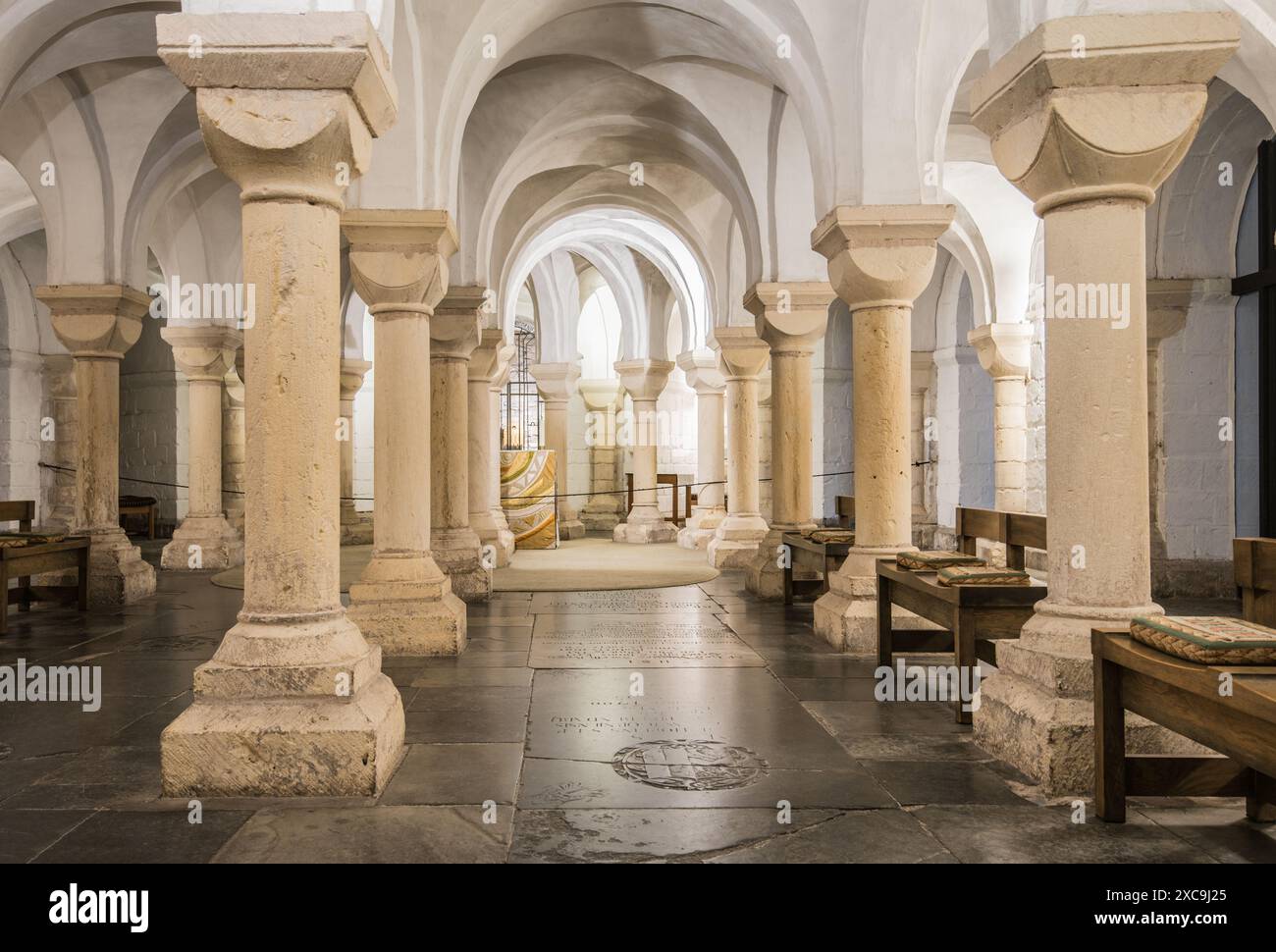 The crypt at Worcester cathedral was built in 1084.It has clusters of creamy stone piers and white lime-washed walls & is multi-aisled. Stock Photohttps://www.alamy.com/image-license-details/?v=1https://www.alamy.com/the-crypt-at-worcester-cathedral-was-built-in-1084it-has-clusters-of-creamy-stone-piers-and-white-lime-washed-walls-is-multi-aisled-image609950493.html
The crypt at Worcester cathedral was built in 1084.It has clusters of creamy stone piers and white lime-washed walls & is multi-aisled. Stock Photohttps://www.alamy.com/image-license-details/?v=1https://www.alamy.com/the-crypt-at-worcester-cathedral-was-built-in-1084it-has-clusters-of-creamy-stone-piers-and-white-lime-washed-walls-is-multi-aisled-image609950493.htmlRM2XC9J25–The crypt at Worcester cathedral was built in 1084.It has clusters of creamy stone piers and white lime-washed walls & is multi-aisled.
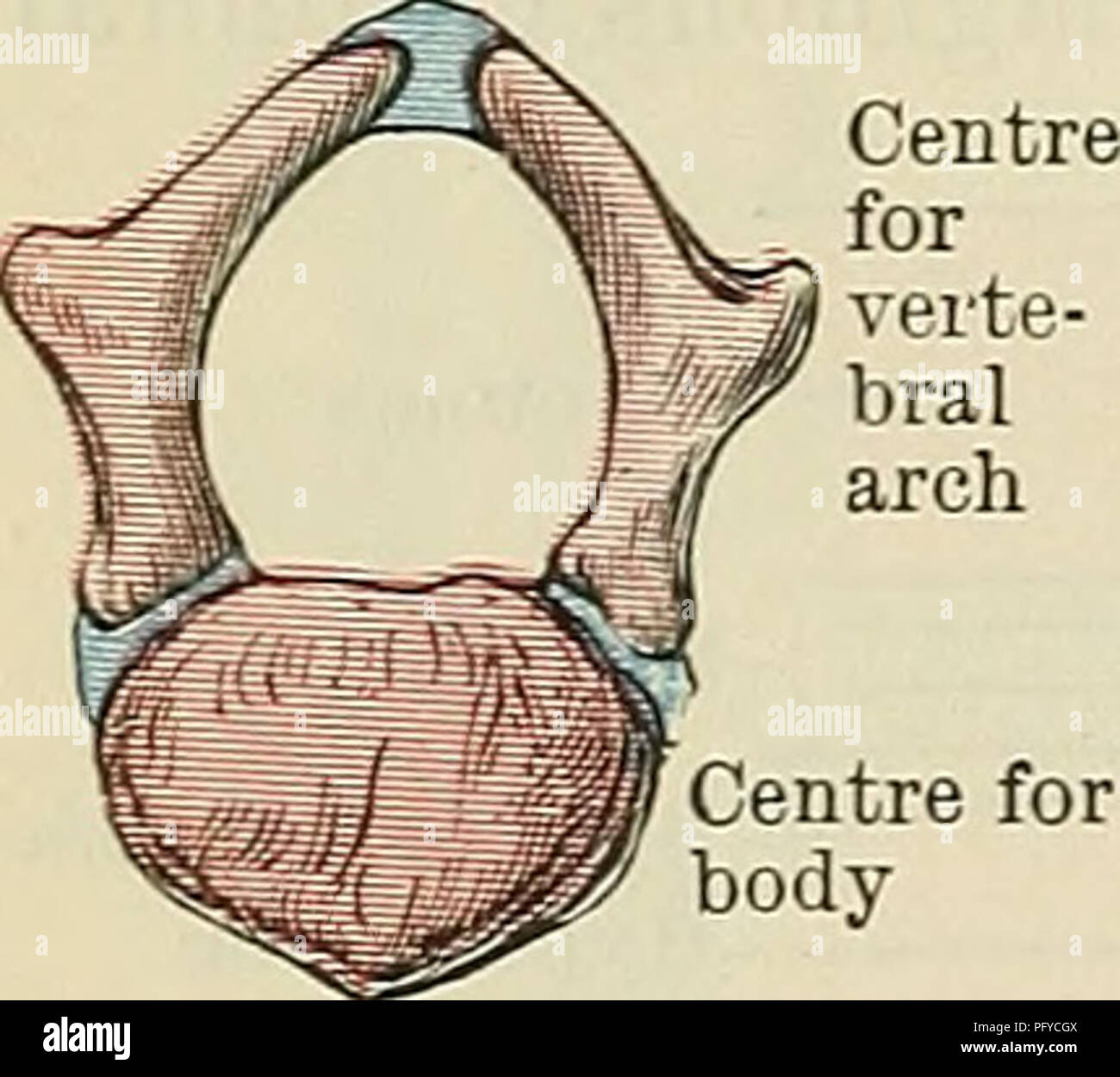 . Cunningham's Text-book of anatomy. Anatomy. 104 OSTEOLOGY. or seven cartilaginous ribs. Paterson, on the other hand, regards the sternum as arising independently of the ribs by the union of a right and left sternal bar in the median ventral hue. There are also reasons for supposing that the presternum is intimately associated with the development of the ventral part of the shoulder girdle. Ossification of the Vertebrae.—The vertebrae are developed by ossification of the cartilage which surrounds the notochord and which passes dorsally over the sides of the vertebral canal. The centres for th Stock Photohttps://www.alamy.com/image-license-details/?v=1https://www.alamy.com/cunninghams-text-book-of-anatomy-anatomy-104-osteology-or-seven-cartilaginous-ribs-paterson-on-the-other-hand-regards-the-sternum-as-arising-independently-of-the-ribs-by-the-union-of-a-right-and-left-sternal-bar-in-the-median-ventral-hue-there-are-also-reasons-for-supposing-that-the-presternum-is-intimately-associated-with-the-development-of-the-ventral-part-of-the-shoulder-girdle-ossification-of-the-vertebraethe-vertebrae-are-developed-by-ossification-of-the-cartilage-which-surrounds-the-notochord-and-which-passes-dorsally-over-the-sides-of-the-vertebral-canal-the-centres-for-th-image216346842.html
. Cunningham's Text-book of anatomy. Anatomy. 104 OSTEOLOGY. or seven cartilaginous ribs. Paterson, on the other hand, regards the sternum as arising independently of the ribs by the union of a right and left sternal bar in the median ventral hue. There are also reasons for supposing that the presternum is intimately associated with the development of the ventral part of the shoulder girdle. Ossification of the Vertebrae.—The vertebrae are developed by ossification of the cartilage which surrounds the notochord and which passes dorsally over the sides of the vertebral canal. The centres for th Stock Photohttps://www.alamy.com/image-license-details/?v=1https://www.alamy.com/cunninghams-text-book-of-anatomy-anatomy-104-osteology-or-seven-cartilaginous-ribs-paterson-on-the-other-hand-regards-the-sternum-as-arising-independently-of-the-ribs-by-the-union-of-a-right-and-left-sternal-bar-in-the-median-ventral-hue-there-are-also-reasons-for-supposing-that-the-presternum-is-intimately-associated-with-the-development-of-the-ventral-part-of-the-shoulder-girdle-ossification-of-the-vertebraethe-vertebrae-are-developed-by-ossification-of-the-cartilage-which-surrounds-the-notochord-and-which-passes-dorsally-over-the-sides-of-the-vertebral-canal-the-centres-for-th-image216346842.htmlRMPFYCGX–. Cunningham's Text-book of anatomy. Anatomy. 104 OSTEOLOGY. or seven cartilaginous ribs. Paterson, on the other hand, regards the sternum as arising independently of the ribs by the union of a right and left sternal bar in the median ventral hue. There are also reasons for supposing that the presternum is intimately associated with the development of the ventral part of the shoulder girdle. Ossification of the Vertebrae.—The vertebrae are developed by ossification of the cartilage which surrounds the notochord and which passes dorsally over the sides of the vertebral canal. The centres for th
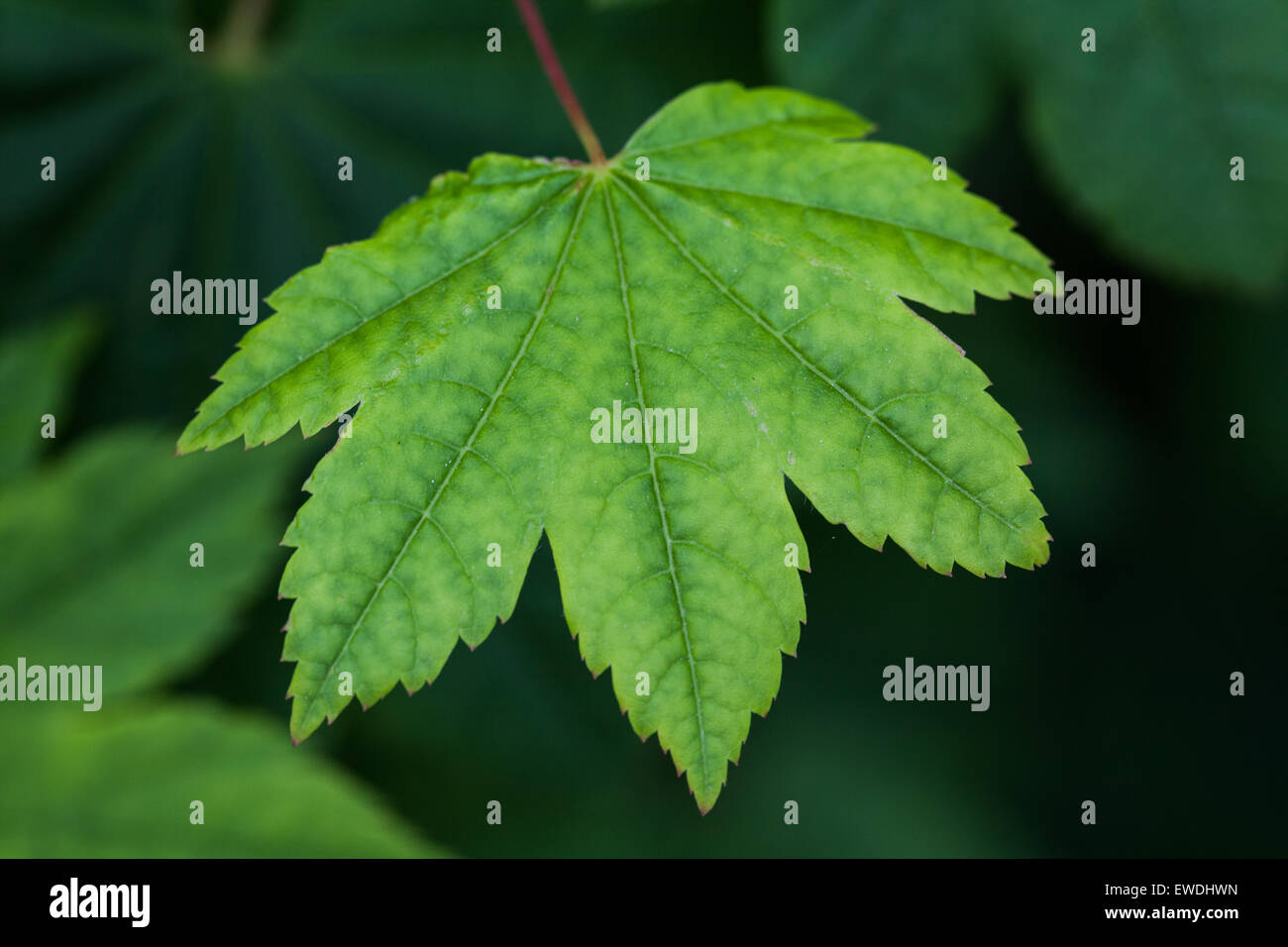 Abstract image of a newly formed Maple Leaf Stock Photohttps://www.alamy.com/image-license-details/?v=1https://www.alamy.com/stock-photo-abstract-image-of-a-newly-formed-maple-leaf-84507297.html
Abstract image of a newly formed Maple Leaf Stock Photohttps://www.alamy.com/image-license-details/?v=1https://www.alamy.com/stock-photo-abstract-image-of-a-newly-formed-maple-leaf-84507297.htmlRMEWDHWN–Abstract image of a newly formed Maple Leaf
 The Ironbribge, built by Abraham Darby III on the river Seven at Ironbridge, Telford. Stock Photohttps://www.alamy.com/image-license-details/?v=1https://www.alamy.com/stock-photo-the-ironbribge-built-by-abraham-darby-iii-on-the-river-seven-at-ironbridge-147638512.html
The Ironbribge, built by Abraham Darby III on the river Seven at Ironbridge, Telford. Stock Photohttps://www.alamy.com/image-license-details/?v=1https://www.alamy.com/stock-photo-the-ironbribge-built-by-abraham-darby-iii-on-the-river-seven-at-ironbridge-147638512.htmlRMJG5EC0–The Ironbribge, built by Abraham Darby III on the river Seven at Ironbridge, Telford.
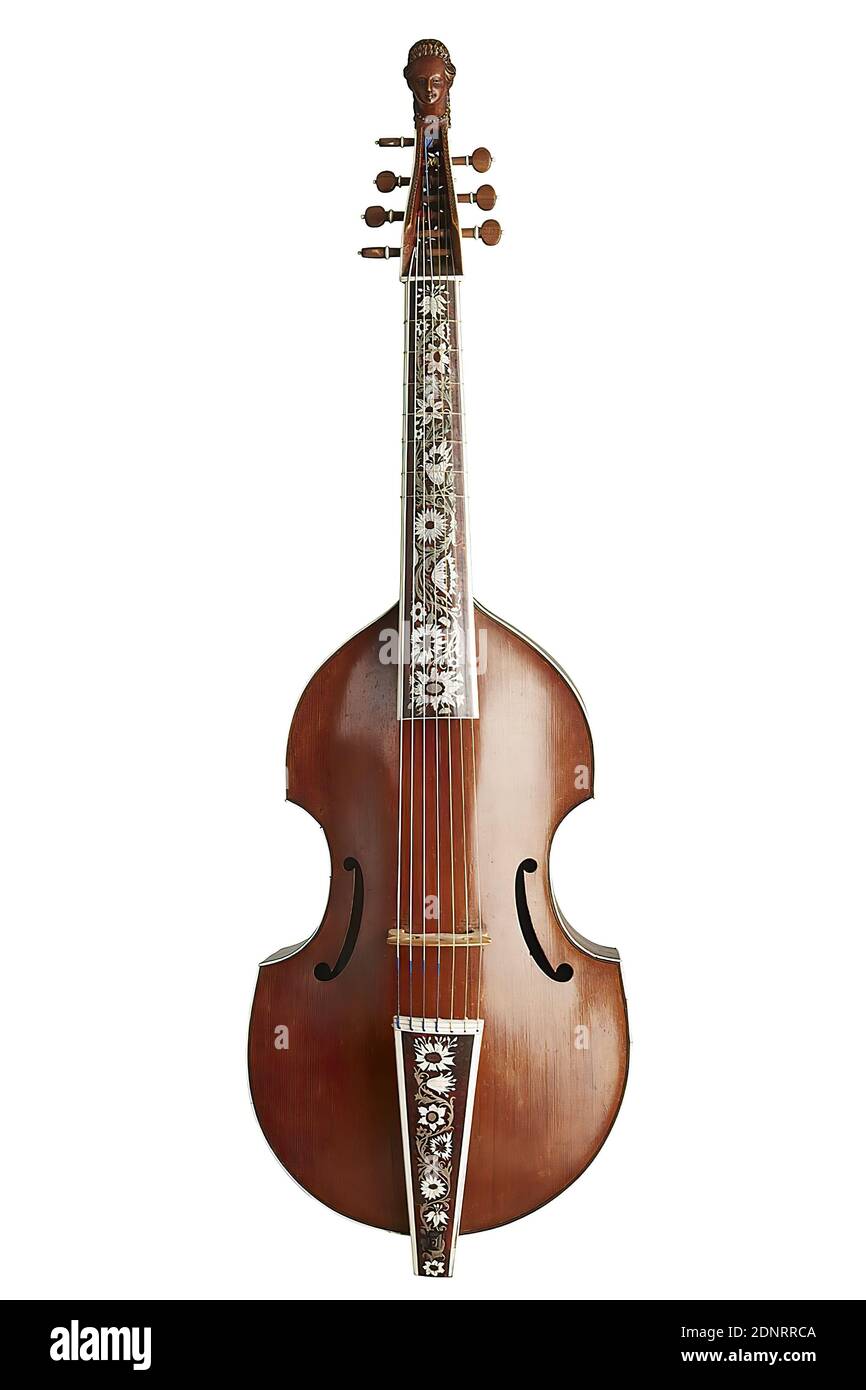 Joachim Tielke, viola da gamba, seven-string with instrument case, spruce, maple, ivory, tortoiseshell, pewter, mother of pearl, lacquer, gold, Total: Length: 1310 mm (total length); Length: 701 mm (body length); Length: 695 mm (string length); Width: 416 mm (max. width: 416 mm (max. width of soundboard); height: 140 mm (max. height of ribs), label (instrument making): inside of body: JOACHIM TIELKE, IN Hamburg, AN(NO)16(hs.)99, stringed instruments, flower ornaments, baroque Stock Photohttps://www.alamy.com/image-license-details/?v=1https://www.alamy.com/joachim-tielke-viola-da-gamba-seven-string-with-instrument-case-spruce-maple-ivory-tortoiseshell-pewter-mother-of-pearl-lacquer-gold-total-length-1310-mm-total-length-length-701-mm-body-length-length-695-mm-string-length-width-416-mm-max-width-416-mm-max-width-of-soundboard-height-140-mm-max-height-of-ribs-label-instrument-making-inside-of-body-joachim-tielke-in-hamburg-anno16hs99-stringed-instruments-flower-ornaments-baroque-image392059146.html
Joachim Tielke, viola da gamba, seven-string with instrument case, spruce, maple, ivory, tortoiseshell, pewter, mother of pearl, lacquer, gold, Total: Length: 1310 mm (total length); Length: 701 mm (body length); Length: 695 mm (string length); Width: 416 mm (max. width: 416 mm (max. width of soundboard); height: 140 mm (max. height of ribs), label (instrument making): inside of body: JOACHIM TIELKE, IN Hamburg, AN(NO)16(hs.)99, stringed instruments, flower ornaments, baroque Stock Photohttps://www.alamy.com/image-license-details/?v=1https://www.alamy.com/joachim-tielke-viola-da-gamba-seven-string-with-instrument-case-spruce-maple-ivory-tortoiseshell-pewter-mother-of-pearl-lacquer-gold-total-length-1310-mm-total-length-length-701-mm-body-length-length-695-mm-string-length-width-416-mm-max-width-416-mm-max-width-of-soundboard-height-140-mm-max-height-of-ribs-label-instrument-making-inside-of-body-joachim-tielke-in-hamburg-anno16hs99-stringed-instruments-flower-ornaments-baroque-image392059146.htmlRM2DNRRCA–Joachim Tielke, viola da gamba, seven-string with instrument case, spruce, maple, ivory, tortoiseshell, pewter, mother of pearl, lacquer, gold, Total: Length: 1310 mm (total length); Length: 701 mm (body length); Length: 695 mm (string length); Width: 416 mm (max. width: 416 mm (max. width of soundboard); height: 140 mm (max. height of ribs), label (instrument making): inside of body: JOACHIM TIELKE, IN Hamburg, AN(NO)16(hs.)99, stringed instruments, flower ornaments, baroque
 Elementary anatomy and physiology : for colleges, academies, and other schools elementaryanato00hitc Year: 1869 AND TIIYSIOLOGY. 57 they enlarge the cavity of the chest. The true ribs are the seven uppermost ones, and the false the five lower ones, and are so arranged that they form a cone with the apex at the neck. The two lowest ribs are sometimes called because they are only attached to the vertebrse. [1 floating, Fig. 12. 129. Clavicle.— The Collar Bone is the commencement of the upper extremity. It is one of the class of long bones ex- tending from the An Anterior View of the Clavicl Stock Photohttps://www.alamy.com/image-license-details/?v=1https://www.alamy.com/elementary-anatomy-and-physiology-for-colleges-academies-and-other-schools-elementaryanato00hitc-year-1869-and-tiiysiology-57-they-enlarge-the-cavity-of-the-chest-the-true-ribs-are-the-seven-uppermost-ones-and-the-false-the-five-lower-ones-and-are-so-arranged-that-they-form-a-cone-with-the-apex-at-the-neck-the-two-lowest-ribs-are-sometimes-called-because-they-are-only-attached-to-the-vertebrse-1-floating-fig-12-129-clavicle-the-collar-bone-is-the-commencement-of-the-upper-extremity-it-is-one-of-the-class-of-long-bones-ex-tending-from-the-an-anterior-view-of-the-clavicl-image240692761.html
Elementary anatomy and physiology : for colleges, academies, and other schools elementaryanato00hitc Year: 1869 AND TIIYSIOLOGY. 57 they enlarge the cavity of the chest. The true ribs are the seven uppermost ones, and the false the five lower ones, and are so arranged that they form a cone with the apex at the neck. The two lowest ribs are sometimes called because they are only attached to the vertebrse. [1 floating, Fig. 12. 129. Clavicle.— The Collar Bone is the commencement of the upper extremity. It is one of the class of long bones ex- tending from the An Anterior View of the Clavicl Stock Photohttps://www.alamy.com/image-license-details/?v=1https://www.alamy.com/elementary-anatomy-and-physiology-for-colleges-academies-and-other-schools-elementaryanato00hitc-year-1869-and-tiiysiology-57-they-enlarge-the-cavity-of-the-chest-the-true-ribs-are-the-seven-uppermost-ones-and-the-false-the-five-lower-ones-and-are-so-arranged-that-they-form-a-cone-with-the-apex-at-the-neck-the-two-lowest-ribs-are-sometimes-called-because-they-are-only-attached-to-the-vertebrse-1-floating-fig-12-129-clavicle-the-collar-bone-is-the-commencement-of-the-upper-extremity-it-is-one-of-the-class-of-long-bones-ex-tending-from-the-an-anterior-view-of-the-clavicl-image240692761.htmlRMRYGE21–Elementary anatomy and physiology : for colleges, academies, and other schools elementaryanato00hitc Year: 1869 AND TIIYSIOLOGY. 57 they enlarge the cavity of the chest. The true ribs are the seven uppermost ones, and the false the five lower ones, and are so arranged that they form a cone with the apex at the neck. The two lowest ribs are sometimes called because they are only attached to the vertebrse. [1 floating, Fig. 12. 129. Clavicle.— The Collar Bone is the commencement of the upper extremity. It is one of the class of long bones ex- tending from the An Anterior View of the Clavicl
 Mature male lion (Panthera leo) eats his prey, the red bloodied ribs of the carcass of a Cape buffalo, in long grass, Masai Mara, Kenya Stock Photohttps://www.alamy.com/image-license-details/?v=1https://www.alamy.com/stock-photo-mature-male-lion-panthera-leo-eats-his-prey-the-red-bloodied-ribs-174783979.html
Mature male lion (Panthera leo) eats his prey, the red bloodied ribs of the carcass of a Cape buffalo, in long grass, Masai Mara, Kenya Stock Photohttps://www.alamy.com/image-license-details/?v=1https://www.alamy.com/stock-photo-mature-male-lion-panthera-leo-eats-his-prey-the-red-bloodied-ribs-174783979.htmlRMM4A2MY–Mature male lion (Panthera leo) eats his prey, the red bloodied ribs of the carcass of a Cape buffalo, in long grass, Masai Mara, Kenya
 Cooking pot, Cooking pot of bronze. The hull has a casting seam near the ears and is ball-shaped, but slightly sagged. It has a thickening at the bottom, which was created as a result of the casting technique. This is formed by a round pouring hole with two pouring ribs placed twice in a radius. The transition from trunk to neck is smooth. The lip edge has a relatively sharp edge at the top and extends obliquely outwards. The pot stands on three six-sided legs, the inner side of which takes up the entire width. These seem to be turned on later. They end in seven-sided feet, the inner side of w Stock Photohttps://www.alamy.com/image-license-details/?v=1https://www.alamy.com/cooking-pot-cooking-pot-of-bronze-the-hull-has-a-casting-seam-near-the-ears-and-is-ball-shaped-but-slightly-sagged-it-has-a-thickening-at-the-bottom-which-was-created-as-a-result-of-the-casting-technique-this-is-formed-by-a-round-pouring-hole-with-two-pouring-ribs-placed-twice-in-a-radius-the-transition-from-trunk-to-neck-is-smooth-the-lip-edge-has-a-relatively-sharp-edge-at-the-top-and-extends-obliquely-outwards-the-pot-stands-on-three-six-sided-legs-the-inner-side-of-which-takes-up-the-entire-width-these-seem-to-be-turned-on-later-they-end-in-seven-sided-feet-the-inner-side-of-w-image349972848.html
Cooking pot, Cooking pot of bronze. The hull has a casting seam near the ears and is ball-shaped, but slightly sagged. It has a thickening at the bottom, which was created as a result of the casting technique. This is formed by a round pouring hole with two pouring ribs placed twice in a radius. The transition from trunk to neck is smooth. The lip edge has a relatively sharp edge at the top and extends obliquely outwards. The pot stands on three six-sided legs, the inner side of which takes up the entire width. These seem to be turned on later. They end in seven-sided feet, the inner side of w Stock Photohttps://www.alamy.com/image-license-details/?v=1https://www.alamy.com/cooking-pot-cooking-pot-of-bronze-the-hull-has-a-casting-seam-near-the-ears-and-is-ball-shaped-but-slightly-sagged-it-has-a-thickening-at-the-bottom-which-was-created-as-a-result-of-the-casting-technique-this-is-formed-by-a-round-pouring-hole-with-two-pouring-ribs-placed-twice-in-a-radius-the-transition-from-trunk-to-neck-is-smooth-the-lip-edge-has-a-relatively-sharp-edge-at-the-top-and-extends-obliquely-outwards-the-pot-stands-on-three-six-sided-legs-the-inner-side-of-which-takes-up-the-entire-width-these-seem-to-be-turned-on-later-they-end-in-seven-sided-feet-the-inner-side-of-w-image349972848.htmlRF2B9AHX8–Cooking pot, Cooking pot of bronze. The hull has a casting seam near the ears and is ball-shaped, but slightly sagged. It has a thickening at the bottom, which was created as a result of the casting technique. This is formed by a round pouring hole with two pouring ribs placed twice in a radius. The transition from trunk to neck is smooth. The lip edge has a relatively sharp edge at the top and extends obliquely outwards. The pot stands on three six-sided legs, the inner side of which takes up the entire width. These seem to be turned on later. They end in seven-sided feet, the inner side of w
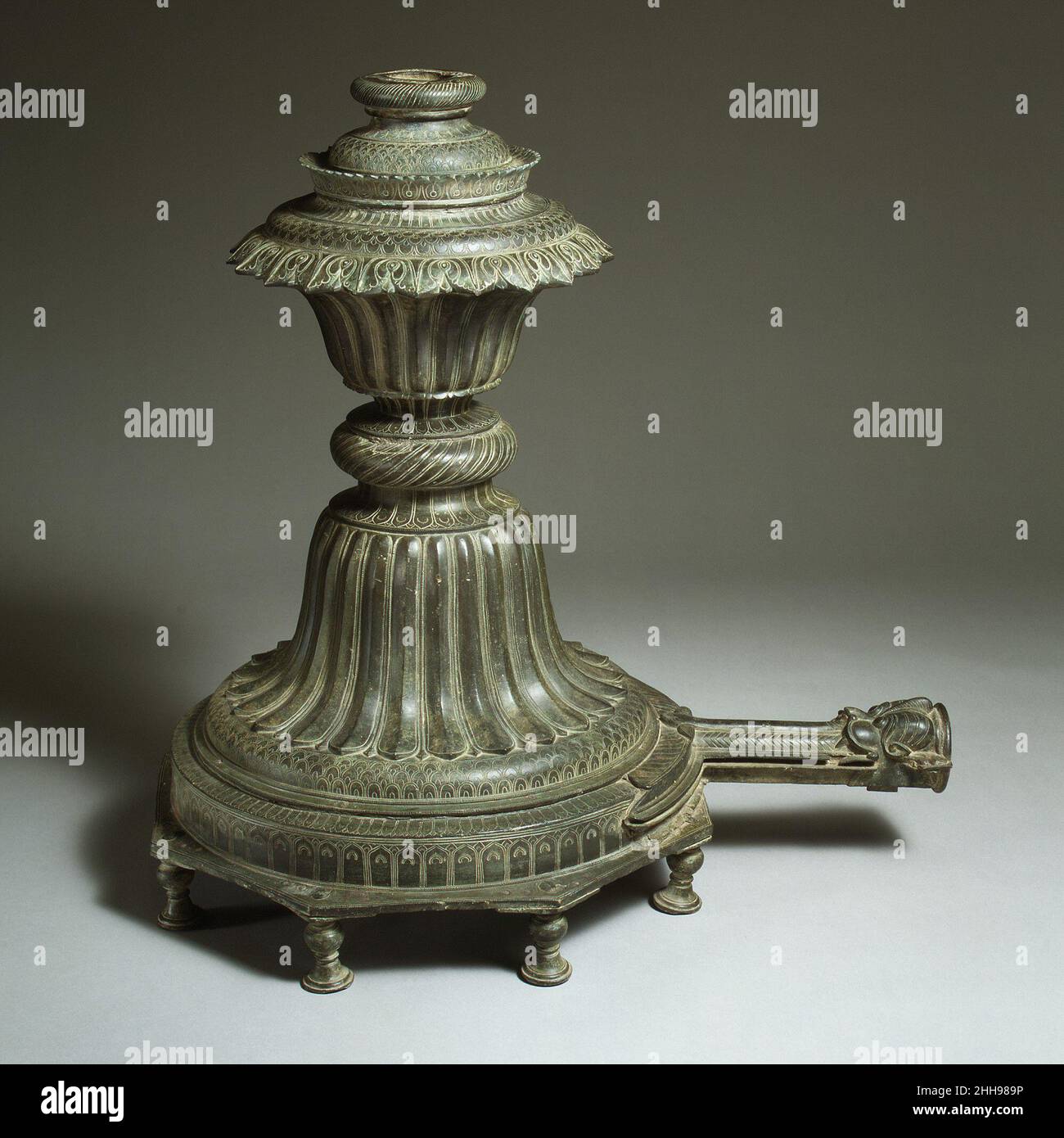 Garden Fountain early 17th century Some of the forms on this fountain, such as its hourglass shape and the lion mask (kirttimukha) on its spout, can be traced to Hindu sources, but their combination with a strong architectural profile and articulated ribs places its production at one of the Muslim courts of the Deccan. The fountain was formed from seven separately cast parts soldered together in a fashion reminiscent of contemporary cannon construction. Water would have been forced up through the pipe that projects from the base of the fountain, and would have trickled down the outside from th Stock Photohttps://www.alamy.com/image-license-details/?v=1https://www.alamy.com/garden-fountain-early-17th-century-some-of-the-forms-on-this-fountain-such-as-its-hourglass-shape-and-the-lion-mask-kirttimukha-on-its-spout-can-be-traced-to-hindu-sources-but-their-combination-with-a-strong-architectural-profile-and-articulated-ribs-places-its-production-at-one-of-the-muslim-courts-of-the-deccan-the-fountain-was-formed-from-seven-separately-cast-parts-soldered-together-in-a-fashion-reminiscent-of-contemporary-cannon-construction-water-would-have-been-forced-up-through-the-pipe-that-projects-from-the-base-of-the-fountain-and-would-have-trickled-down-the-outside-from-th-image458122834.html
Garden Fountain early 17th century Some of the forms on this fountain, such as its hourglass shape and the lion mask (kirttimukha) on its spout, can be traced to Hindu sources, but their combination with a strong architectural profile and articulated ribs places its production at one of the Muslim courts of the Deccan. The fountain was formed from seven separately cast parts soldered together in a fashion reminiscent of contemporary cannon construction. Water would have been forced up through the pipe that projects from the base of the fountain, and would have trickled down the outside from th Stock Photohttps://www.alamy.com/image-license-details/?v=1https://www.alamy.com/garden-fountain-early-17th-century-some-of-the-forms-on-this-fountain-such-as-its-hourglass-shape-and-the-lion-mask-kirttimukha-on-its-spout-can-be-traced-to-hindu-sources-but-their-combination-with-a-strong-architectural-profile-and-articulated-ribs-places-its-production-at-one-of-the-muslim-courts-of-the-deccan-the-fountain-was-formed-from-seven-separately-cast-parts-soldered-together-in-a-fashion-reminiscent-of-contemporary-cannon-construction-water-would-have-been-forced-up-through-the-pipe-that-projects-from-the-base-of-the-fountain-and-would-have-trickled-down-the-outside-from-th-image458122834.htmlRM2HH989P–Garden Fountain early 17th century Some of the forms on this fountain, such as its hourglass shape and the lion mask (kirttimukha) on its spout, can be traced to Hindu sources, but their combination with a strong architectural profile and articulated ribs places its production at one of the Muslim courts of the Deccan. The fountain was formed from seven separately cast parts soldered together in a fashion reminiscent of contemporary cannon construction. Water would have been forced up through the pipe that projects from the base of the fountain, and would have trickled down the outside from th
 The cervical spine (neck region) consists of seven bones (C1-C7 vertebrae), which are separated from one another by intervertebral discs 3d illustrati Stock Photohttps://www.alamy.com/image-license-details/?v=1https://www.alamy.com/the-cervical-spine-neck-region-consists-of-seven-bones-c1-c7-vertebrae-which-are-separated-from-one-another-by-intervertebral-discs-3d-illustrati-image596574098.html
The cervical spine (neck region) consists of seven bones (C1-C7 vertebrae), which are separated from one another by intervertebral discs 3d illustrati Stock Photohttps://www.alamy.com/image-license-details/?v=1https://www.alamy.com/the-cervical-spine-neck-region-consists-of-seven-bones-c1-c7-vertebrae-which-are-separated-from-one-another-by-intervertebral-discs-3d-illustrati-image596574098.htmlRF2WJG89P–The cervical spine (neck region) consists of seven bones (C1-C7 vertebrae), which are separated from one another by intervertebral discs 3d illustrati
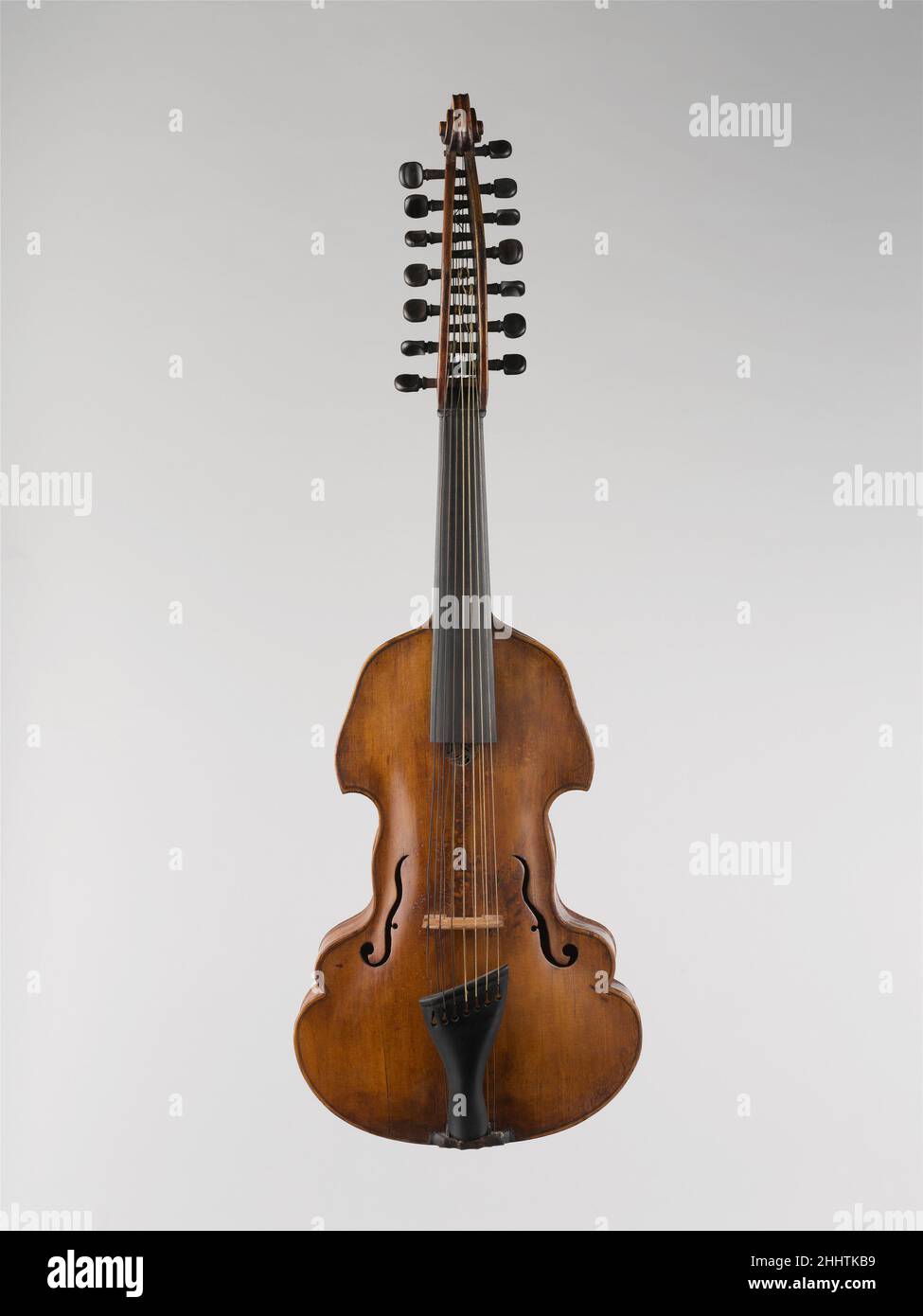 Viola d'Amore 1739 German The viola d'amore, or viola 'of love,' is a bowed stringed instrument which gained great popularity in the eighteenth century. Much of its history, including the derivation of its name, is unknown. It has many characteristics of the viol family such as a flat back, ribs that are flush with the top and back, and a rosette in addition to soundholes. Yet, like a violin, it is unfretted and held under the chin while played. Violas d'amore typically have seven playing strings, though instruments with other numbers of strings are not unusual. Perhaps the most distinguishabl Stock Photohttps://www.alamy.com/image-license-details/?v=1https://www.alamy.com/viola-damore-1739-german-the-viola-damore-or-viola-of-love-is-a-bowed-stringed-instrument-which-gained-great-popularity-in-the-eighteenth-century-much-of-its-history-including-the-derivation-of-its-name-is-unknown-it-has-many-characteristics-of-the-viol-family-such-as-a-flat-back-ribs-that-are-flush-with-the-top-and-back-and-a-rosette-in-addition-to-soundholes-yet-like-a-violin-it-is-unfretted-and-held-under-the-chin-while-played-violas-damore-typically-have-seven-playing-strings-though-instruments-with-other-numbers-of-strings-are-not-unusual-perhaps-the-most-distinguishabl-image458460781.html
Viola d'Amore 1739 German The viola d'amore, or viola 'of love,' is a bowed stringed instrument which gained great popularity in the eighteenth century. Much of its history, including the derivation of its name, is unknown. It has many characteristics of the viol family such as a flat back, ribs that are flush with the top and back, and a rosette in addition to soundholes. Yet, like a violin, it is unfretted and held under the chin while played. Violas d'amore typically have seven playing strings, though instruments with other numbers of strings are not unusual. Perhaps the most distinguishabl Stock Photohttps://www.alamy.com/image-license-details/?v=1https://www.alamy.com/viola-damore-1739-german-the-viola-damore-or-viola-of-love-is-a-bowed-stringed-instrument-which-gained-great-popularity-in-the-eighteenth-century-much-of-its-history-including-the-derivation-of-its-name-is-unknown-it-has-many-characteristics-of-the-viol-family-such-as-a-flat-back-ribs-that-are-flush-with-the-top-and-back-and-a-rosette-in-addition-to-soundholes-yet-like-a-violin-it-is-unfretted-and-held-under-the-chin-while-played-violas-damore-typically-have-seven-playing-strings-though-instruments-with-other-numbers-of-strings-are-not-unusual-perhaps-the-most-distinguishabl-image458460781.htmlRM2HHTKB9–Viola d'Amore 1739 German The viola d'amore, or viola 'of love,' is a bowed stringed instrument which gained great popularity in the eighteenth century. Much of its history, including the derivation of its name, is unknown. It has many characteristics of the viol family such as a flat back, ribs that are flush with the top and back, and a rosette in addition to soundholes. Yet, like a violin, it is unfretted and held under the chin while played. Violas d'amore typically have seven playing strings, though instruments with other numbers of strings are not unusual. Perhaps the most distinguishabl
 A German or Polish Zischägge, mid-17th century, One-piece skull embossed with six raised ribs, crown plate with ring finial. Riveted pointed peak with turned edge, the point marked 'M', on the underside old arsenal mark 'XIII'. Sliding nasal bar (added?) with wingscrew. Neck guard sliding on four lames. Movable cheek pieces pierced with seven holes for hearing. The inside with original leather lining, the hinges of the cheek pieces renewed. Height 28 cm. defensive arms, weapons, arms, weapon, arm, fighting device, object, objects, stills, clippin, Additional-Rights-Clearance-Info-Not-Available Stock Photohttps://www.alamy.com/image-license-details/?v=1https://www.alamy.com/a-german-or-polish-zischgge-mid-17th-century-one-piece-skull-embossed-with-six-raised-ribs-crown-plate-with-ring-finial-riveted-pointed-peak-with-turned-edge-the-point-marked-m-on-the-underside-old-arsenal-mark-xiii-sliding-nasal-bar-added-with-wingscrew-neck-guard-sliding-on-four-lames-movable-cheek-pieces-pierced-with-seven-holes-for-hearing-the-inside-with-original-leather-lining-the-hinges-of-the-cheek-pieces-renewed-height-28-cm-defensive-arms-weapons-arms-weapon-arm-fighting-device-object-objects-stills-clippin-additional-rights-clearance-info-not-available-image247620144.html
A German or Polish Zischägge, mid-17th century, One-piece skull embossed with six raised ribs, crown plate with ring finial. Riveted pointed peak with turned edge, the point marked 'M', on the underside old arsenal mark 'XIII'. Sliding nasal bar (added?) with wingscrew. Neck guard sliding on four lames. Movable cheek pieces pierced with seven holes for hearing. The inside with original leather lining, the hinges of the cheek pieces renewed. Height 28 cm. defensive arms, weapons, arms, weapon, arm, fighting device, object, objects, stills, clippin, Additional-Rights-Clearance-Info-Not-Available Stock Photohttps://www.alamy.com/image-license-details/?v=1https://www.alamy.com/a-german-or-polish-zischgge-mid-17th-century-one-piece-skull-embossed-with-six-raised-ribs-crown-plate-with-ring-finial-riveted-pointed-peak-with-turned-edge-the-point-marked-m-on-the-underside-old-arsenal-mark-xiii-sliding-nasal-bar-added-with-wingscrew-neck-guard-sliding-on-four-lames-movable-cheek-pieces-pierced-with-seven-holes-for-hearing-the-inside-with-original-leather-lining-the-hinges-of-the-cheek-pieces-renewed-height-28-cm-defensive-arms-weapons-arms-weapon-arm-fighting-device-object-objects-stills-clippin-additional-rights-clearance-info-not-available-image247620144.htmlRMTAT20G–A German or Polish Zischägge, mid-17th century, One-piece skull embossed with six raised ribs, crown plate with ring finial. Riveted pointed peak with turned edge, the point marked 'M', on the underside old arsenal mark 'XIII'. Sliding nasal bar (added?) with wingscrew. Neck guard sliding on four lames. Movable cheek pieces pierced with seven holes for hearing. The inside with original leather lining, the hinges of the cheek pieces renewed. Height 28 cm. defensive arms, weapons, arms, weapon, arm, fighting device, object, objects, stills, clippin, Additional-Rights-Clearance-Info-Not-Available
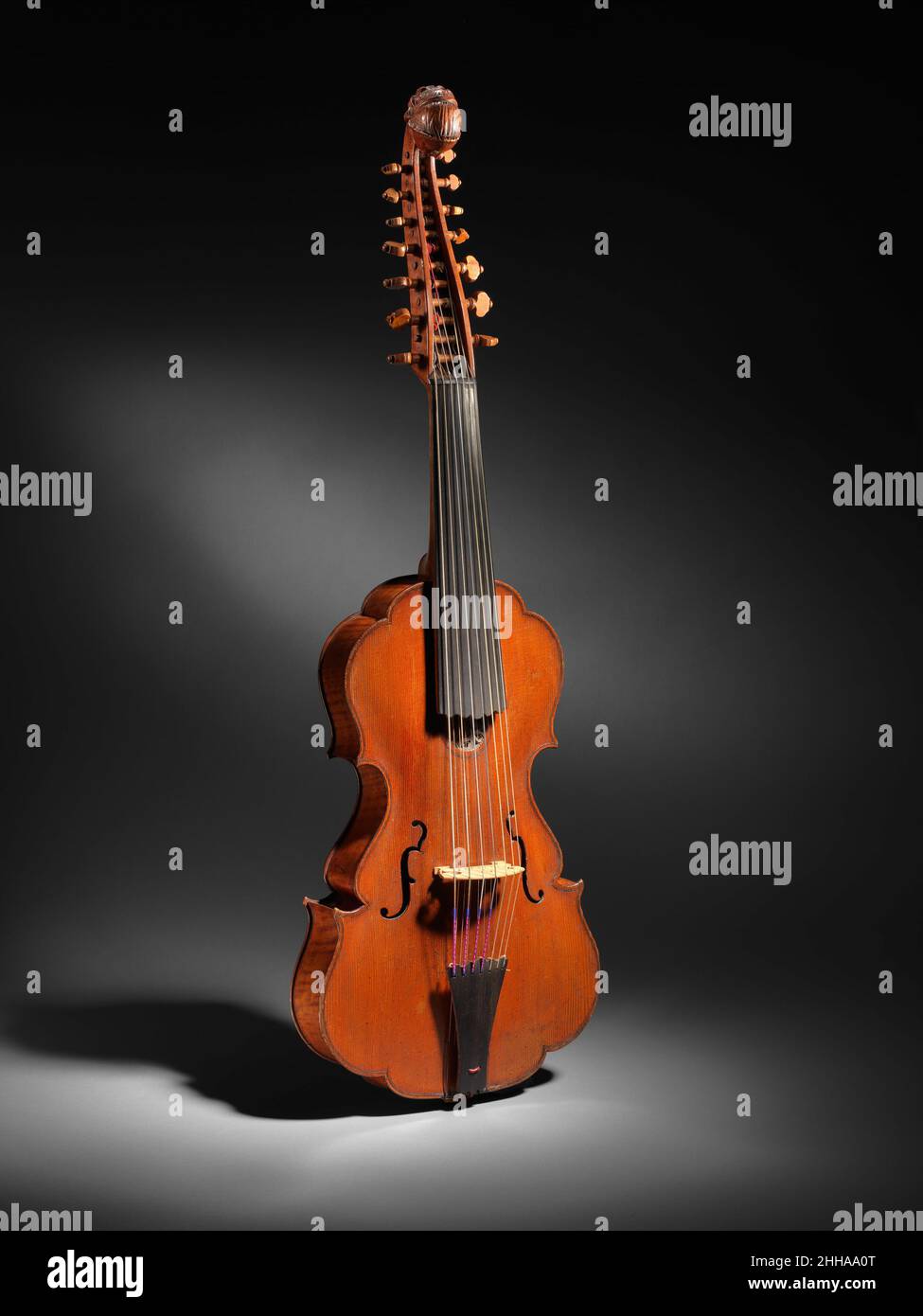 Viola d'Amore 18th century Johannes Florenus Guidantus, Italian Italian The viola d'amore, or viola 'of love,' is a bowed stringed instrument which gained great popularity in the eighteenth century. Much of its history, including the derivation of its name, is unknown. It has many characteristics of the viol family such as a flat back, ribs that are flush with the top and back, and a rosette in addition to soundholes. Yet, like a violin, it is unfretted and held under the chin while played. Violas d'amore typically have seven playing strings, though instruments with other numbers of strings ar Stock Photohttps://www.alamy.com/image-license-details/?v=1https://www.alamy.com/viola-damore-18th-century-johannes-florenus-guidantus-italian-italian-the-viola-damore-or-viola-of-love-is-a-bowed-stringed-instrument-which-gained-great-popularity-in-the-eighteenth-century-much-of-its-history-including-the-derivation-of-its-name-is-unknown-it-has-many-characteristics-of-the-viol-family-such-as-a-flat-back-ribs-that-are-flush-with-the-top-and-back-and-a-rosette-in-addition-to-soundholes-yet-like-a-violin-it-is-unfretted-and-held-under-the-chin-while-played-violas-damore-typically-have-seven-playing-strings-though-instruments-with-other-numbers-of-strings-ar-image458146104.html
Viola d'Amore 18th century Johannes Florenus Guidantus, Italian Italian The viola d'amore, or viola 'of love,' is a bowed stringed instrument which gained great popularity in the eighteenth century. Much of its history, including the derivation of its name, is unknown. It has many characteristics of the viol family such as a flat back, ribs that are flush with the top and back, and a rosette in addition to soundholes. Yet, like a violin, it is unfretted and held under the chin while played. Violas d'amore typically have seven playing strings, though instruments with other numbers of strings ar Stock Photohttps://www.alamy.com/image-license-details/?v=1https://www.alamy.com/viola-damore-18th-century-johannes-florenus-guidantus-italian-italian-the-viola-damore-or-viola-of-love-is-a-bowed-stringed-instrument-which-gained-great-popularity-in-the-eighteenth-century-much-of-its-history-including-the-derivation-of-its-name-is-unknown-it-has-many-characteristics-of-the-viol-family-such-as-a-flat-back-ribs-that-are-flush-with-the-top-and-back-and-a-rosette-in-addition-to-soundholes-yet-like-a-violin-it-is-unfretted-and-held-under-the-chin-while-played-violas-damore-typically-have-seven-playing-strings-though-instruments-with-other-numbers-of-strings-ar-image458146104.htmlRM2HHAA0T–Viola d'Amore 18th century Johannes Florenus Guidantus, Italian Italian The viola d'amore, or viola 'of love,' is a bowed stringed instrument which gained great popularity in the eighteenth century. Much of its history, including the derivation of its name, is unknown. It has many characteristics of the viol family such as a flat back, ribs that are flush with the top and back, and a rosette in addition to soundholes. Yet, like a violin, it is unfretted and held under the chin while played. Violas d'amore typically have seven playing strings, though instruments with other numbers of strings ar
 A German zischägge, circa 1650 One-piece skull embossed with six ribs with crown plate and ring finial. Riveted peak with a turned edge, adjustable nasal bar, struck with the letter 'M'. Neck-guard of four articulations, the cheek-pieces pierced with seven holes. A leather strap of one cheek-piece torn. Height circa 27 cm. historic, historical, defensive arms, weapons, arms, weapon, arm, fighting device, object, objects, stills, clipping, clippings, cut out, cut-out, cut-outs, utensil, piece of equipment, utensils, 17th century, Additional-Rights-Clearance-Info-Not-Available Stock Photohttps://www.alamy.com/image-license-details/?v=1https://www.alamy.com/a-german-zischgge-circa-1650-one-piece-skull-embossed-with-six-ribs-with-crown-plate-and-ring-finial-riveted-peak-with-a-turned-edge-adjustable-nasal-bar-struck-with-the-letter-m-neck-guard-of-four-articulations-the-cheek-pieces-pierced-with-seven-holes-a-leather-strap-of-one-cheek-piece-torn-height-circa-27-cm-historic-historical-defensive-arms-weapons-arms-weapon-arm-fighting-device-object-objects-stills-clipping-clippings-cut-out-cut-out-cut-outs-utensil-piece-of-equipment-utensils-17th-century-additional-rights-clearance-info-not-available-image244008179.html
A German zischägge, circa 1650 One-piece skull embossed with six ribs with crown plate and ring finial. Riveted peak with a turned edge, adjustable nasal bar, struck with the letter 'M'. Neck-guard of four articulations, the cheek-pieces pierced with seven holes. A leather strap of one cheek-piece torn. Height circa 27 cm. historic, historical, defensive arms, weapons, arms, weapon, arm, fighting device, object, objects, stills, clipping, clippings, cut out, cut-out, cut-outs, utensil, piece of equipment, utensils, 17th century, Additional-Rights-Clearance-Info-Not-Available Stock Photohttps://www.alamy.com/image-license-details/?v=1https://www.alamy.com/a-german-zischgge-circa-1650-one-piece-skull-embossed-with-six-ribs-with-crown-plate-and-ring-finial-riveted-peak-with-a-turned-edge-adjustable-nasal-bar-struck-with-the-letter-m-neck-guard-of-four-articulations-the-cheek-pieces-pierced-with-seven-holes-a-leather-strap-of-one-cheek-piece-torn-height-circa-27-cm-historic-historical-defensive-arms-weapons-arms-weapon-arm-fighting-device-object-objects-stills-clipping-clippings-cut-out-cut-out-cut-outs-utensil-piece-of-equipment-utensils-17th-century-additional-rights-clearance-info-not-available-image244008179.htmlRMT4YEWR–A German zischägge, circa 1650 One-piece skull embossed with six ribs with crown plate and ring finial. Riveted peak with a turned edge, adjustable nasal bar, struck with the letter 'M'. Neck-guard of four articulations, the cheek-pieces pierced with seven holes. A leather strap of one cheek-piece torn. Height circa 27 cm. historic, historical, defensive arms, weapons, arms, weapon, arm, fighting device, object, objects, stills, clipping, clippings, cut out, cut-out, cut-outs, utensil, piece of equipment, utensils, 17th century, Additional-Rights-Clearance-Info-Not-Available
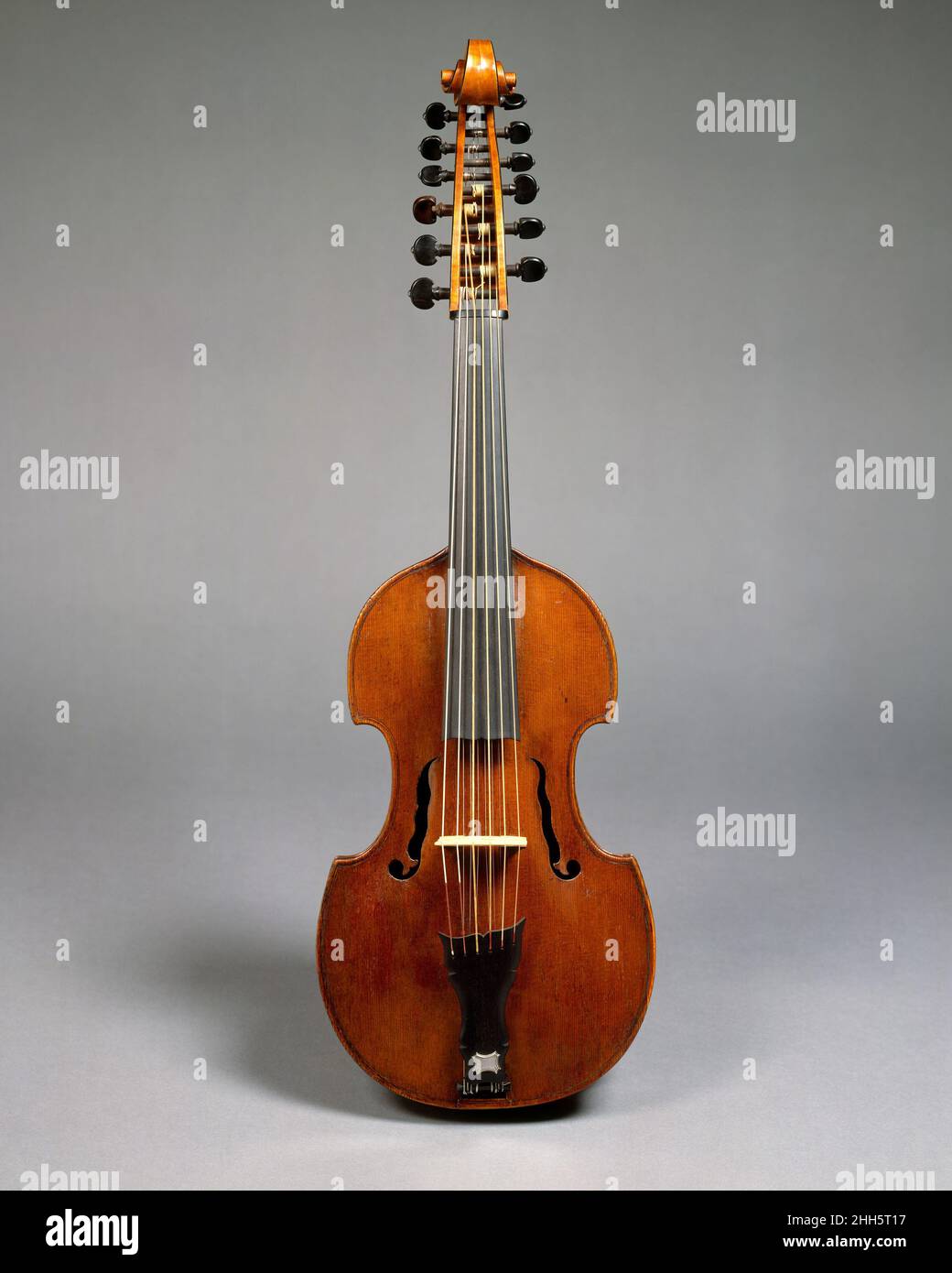 Viola d'Amore ca. 1780 Joseph Gagliano Italian (Naples) The viola d'amore, or viola 'of love,' is a bowed stringed instrument which gained great popularity in the eighteenth century. Much of its history, including the derivation of its name, is unknown. It has many characteristics of the viol family such as a flat back, ribs that are flush with the top and back, and a rosette in addition to soundholes. Yet, like a violin, it is unfretted and held under the chin while played. Violas d'amore typically have seven playing strings, though instruments with other numbers of strings are not unusual. P Stock Photohttps://www.alamy.com/image-license-details/?v=1https://www.alamy.com/viola-damore-ca-1780-joseph-gagliano-italian-naples-the-viola-damore-or-viola-of-love-is-a-bowed-stringed-instrument-which-gained-great-popularity-in-the-eighteenth-century-much-of-its-history-including-the-derivation-of-its-name-is-unknown-it-has-many-characteristics-of-the-viol-family-such-as-a-flat-back-ribs-that-are-flush-with-the-top-and-back-and-a-rosette-in-addition-to-soundholes-yet-like-a-violin-it-is-unfretted-and-held-under-the-chin-while-played-violas-damore-typically-have-seven-playing-strings-though-instruments-with-other-numbers-of-strings-are-not-unusual-p-image458047331.html
Viola d'Amore ca. 1780 Joseph Gagliano Italian (Naples) The viola d'amore, or viola 'of love,' is a bowed stringed instrument which gained great popularity in the eighteenth century. Much of its history, including the derivation of its name, is unknown. It has many characteristics of the viol family such as a flat back, ribs that are flush with the top and back, and a rosette in addition to soundholes. Yet, like a violin, it is unfretted and held under the chin while played. Violas d'amore typically have seven playing strings, though instruments with other numbers of strings are not unusual. P Stock Photohttps://www.alamy.com/image-license-details/?v=1https://www.alamy.com/viola-damore-ca-1780-joseph-gagliano-italian-naples-the-viola-damore-or-viola-of-love-is-a-bowed-stringed-instrument-which-gained-great-popularity-in-the-eighteenth-century-much-of-its-history-including-the-derivation-of-its-name-is-unknown-it-has-many-characteristics-of-the-viol-family-such-as-a-flat-back-ribs-that-are-flush-with-the-top-and-back-and-a-rosette-in-addition-to-soundholes-yet-like-a-violin-it-is-unfretted-and-held-under-the-chin-while-played-violas-damore-typically-have-seven-playing-strings-though-instruments-with-other-numbers-of-strings-are-not-unusual-p-image458047331.htmlRM2HH5T17–Viola d'Amore ca. 1780 Joseph Gagliano Italian (Naples) The viola d'amore, or viola 'of love,' is a bowed stringed instrument which gained great popularity in the eighteenth century. Much of its history, including the derivation of its name, is unknown. It has many characteristics of the viol family such as a flat back, ribs that are flush with the top and back, and a rosette in addition to soundholes. Yet, like a violin, it is unfretted and held under the chin while played. Violas d'amore typically have seven playing strings, though instruments with other numbers of strings are not unusual. P
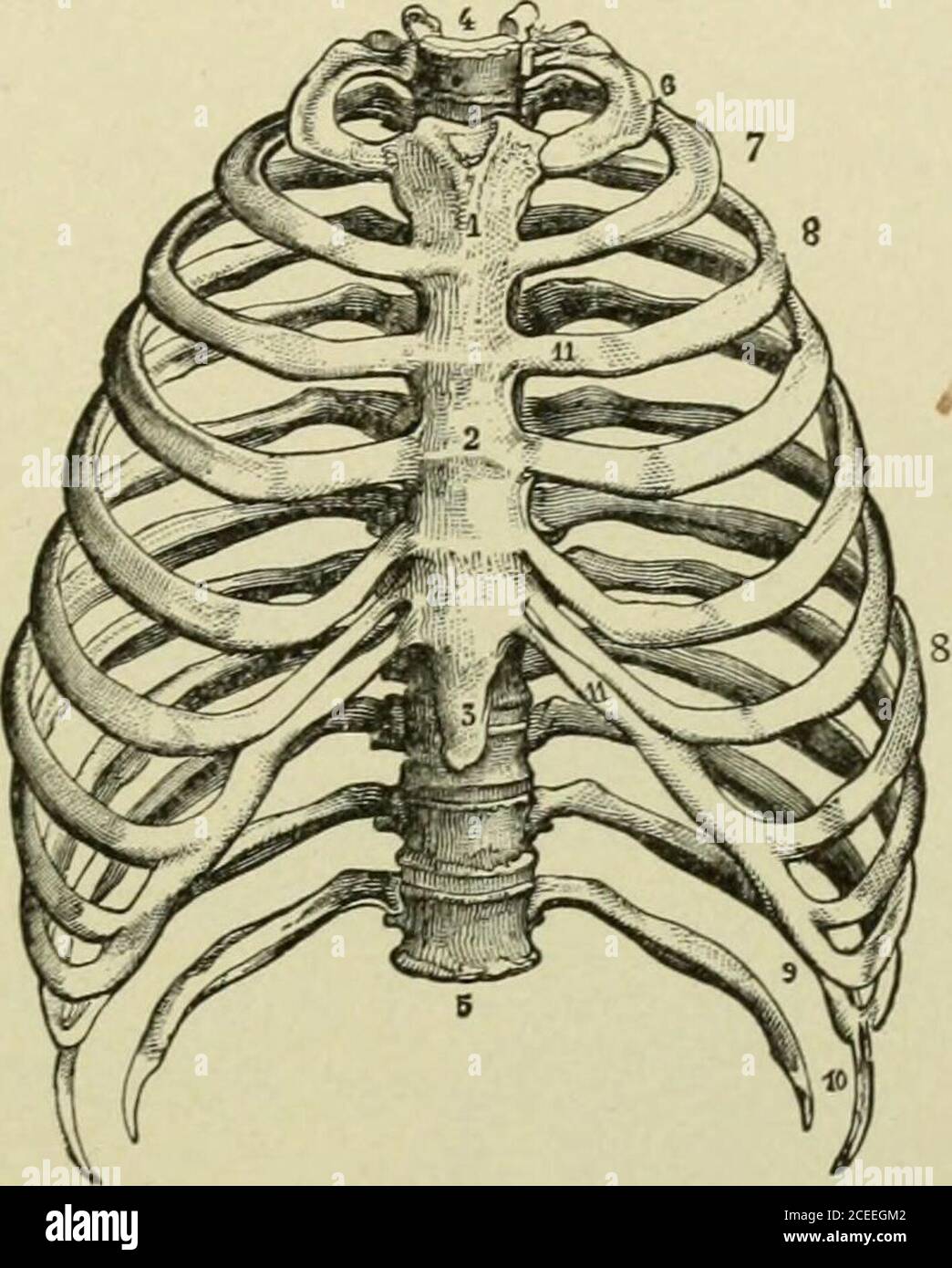 . Text-book of anatomy and physiology for nurses. r. It has three divisions,the manubrium, the body, and the xiphoid appendix (Fig. 39). The upper border of the sternum is notched—the sternal (orjugular) notch; the lateral borders give attachment from abovedownward to the clavicle and the cartilages of the first seven ribs.The xiphoid appendix is the lowest portion of the bone and givesattachment to some of the muscles of the abdomen. It remainscartilaginous until middle life. Ribs (costae).—Twelve in each side of the thorax, forming aseries of movable elastic arches. They consist of a bony po Stock Photohttps://www.alamy.com/image-license-details/?v=1https://www.alamy.com/text-book-of-anatomy-and-physiology-for-nurses-r-it-has-three-divisionsthe-manubrium-the-body-and-the-xiphoid-appendix-fig-39-the-upper-border-of-the-sternum-is-notchedthe-sternal-orjugular-notch-the-lateral-borders-give-attachment-from-abovedownward-to-the-clavicle-and-the-cartilages-of-the-first-seven-ribsthe-xiphoid-appendix-is-the-lowest-portion-of-the-bone-and-givesattachment-to-some-of-the-muscles-of-the-abdomen-it-remainscartilaginous-until-middle-life-ribs-costaetwelve-in-each-side-of-the-thorax-forming-aseries-of-movable-elastic-arches-they-consist-of-a-bony-po-image370343346.html
. Text-book of anatomy and physiology for nurses. r. It has three divisions,the manubrium, the body, and the xiphoid appendix (Fig. 39). The upper border of the sternum is notched—the sternal (orjugular) notch; the lateral borders give attachment from abovedownward to the clavicle and the cartilages of the first seven ribs.The xiphoid appendix is the lowest portion of the bone and givesattachment to some of the muscles of the abdomen. It remainscartilaginous until middle life. Ribs (costae).—Twelve in each side of the thorax, forming aseries of movable elastic arches. They consist of a bony po Stock Photohttps://www.alamy.com/image-license-details/?v=1https://www.alamy.com/text-book-of-anatomy-and-physiology-for-nurses-r-it-has-three-divisionsthe-manubrium-the-body-and-the-xiphoid-appendix-fig-39-the-upper-border-of-the-sternum-is-notchedthe-sternal-orjugular-notch-the-lateral-borders-give-attachment-from-abovedownward-to-the-clavicle-and-the-cartilages-of-the-first-seven-ribsthe-xiphoid-appendix-is-the-lowest-portion-of-the-bone-and-givesattachment-to-some-of-the-muscles-of-the-abdomen-it-remainscartilaginous-until-middle-life-ribs-costaetwelve-in-each-side-of-the-thorax-forming-aseries-of-movable-elastic-arches-they-consist-of-a-bony-po-image370343346.htmlRM2CEEGM2–. Text-book of anatomy and physiology for nurses. r. It has three divisions,the manubrium, the body, and the xiphoid appendix (Fig. 39). The upper border of the sternum is notched—the sternal (orjugular) notch; the lateral borders give attachment from abovedownward to the clavicle and the cartilages of the first seven ribs.The xiphoid appendix is the lowest portion of the bone and givesattachment to some of the muscles of the abdomen. It remainscartilaginous until middle life. Ribs (costae).—Twelve in each side of the thorax, forming aseries of movable elastic arches. They consist of a bony po
 The Ironbribge, built by Abraham Darby III on the river Seven at Ironbridge, Telford. Stock Photohttps://www.alamy.com/image-license-details/?v=1https://www.alamy.com/stock-photo-the-ironbribge-built-by-abraham-darby-iii-on-the-river-seven-at-ironbridge-147638507.html
The Ironbribge, built by Abraham Darby III on the river Seven at Ironbridge, Telford. Stock Photohttps://www.alamy.com/image-license-details/?v=1https://www.alamy.com/stock-photo-the-ironbribge-built-by-abraham-darby-iii-on-the-river-seven-at-ironbridge-147638507.htmlRMJG5EBR–The Ironbribge, built by Abraham Darby III on the river Seven at Ironbridge, Telford.
 Jack with inscription: DEVS SPES MEA 1565, The molded round jack widens upwards, has a profiled foot and is provided with two rectangular ears. At the top between two ribs the inscription in Latin majuskels DEVS SPES MEA 1565 with punctuation consisting of a rosette with three large and three small leaves (four times). On the wall, against the upper of the two profiled ribs, is a frieze consisting of ram heads with garlands in between (seven times)., Thomas Both (attributed to), 1565, bronze (metal), founding, h 13.2 cm × d 13.8 cm × w 16.1 cm Stock Photohttps://www.alamy.com/image-license-details/?v=1https://www.alamy.com/jack-with-inscription-devs-spes-mea-1565-the-molded-round-jack-widens-upwards-has-a-profiled-foot-and-is-provided-with-two-rectangular-ears-at-the-top-between-two-ribs-the-inscription-in-latin-majuskels-devs-spes-mea-1565-with-punctuation-consisting-of-a-rosette-with-three-large-and-three-small-leaves-four-times-on-the-wall-against-the-upper-of-the-two-profiled-ribs-is-a-frieze-consisting-of-ram-heads-with-garlands-in-between-seven-times-thomas-both-attributed-to-1565-bronze-metal-founding-h-132-cm-d-138-cm-w-161-cm-image261373465.html
Jack with inscription: DEVS SPES MEA 1565, The molded round jack widens upwards, has a profiled foot and is provided with two rectangular ears. At the top between two ribs the inscription in Latin majuskels DEVS SPES MEA 1565 with punctuation consisting of a rosette with three large and three small leaves (four times). On the wall, against the upper of the two profiled ribs, is a frieze consisting of ram heads with garlands in between (seven times)., Thomas Both (attributed to), 1565, bronze (metal), founding, h 13.2 cm × d 13.8 cm × w 16.1 cm Stock Photohttps://www.alamy.com/image-license-details/?v=1https://www.alamy.com/jack-with-inscription-devs-spes-mea-1565-the-molded-round-jack-widens-upwards-has-a-profiled-foot-and-is-provided-with-two-rectangular-ears-at-the-top-between-two-ribs-the-inscription-in-latin-majuskels-devs-spes-mea-1565-with-punctuation-consisting-of-a-rosette-with-three-large-and-three-small-leaves-four-times-on-the-wall-against-the-upper-of-the-two-profiled-ribs-is-a-frieze-consisting-of-ram-heads-with-garlands-in-between-seven-times-thomas-both-attributed-to-1565-bronze-metal-founding-h-132-cm-d-138-cm-w-161-cm-image261373465.htmlRMW56GEH–Jack with inscription: DEVS SPES MEA 1565, The molded round jack widens upwards, has a profiled foot and is provided with two rectangular ears. At the top between two ribs the inscription in Latin majuskels DEVS SPES MEA 1565 with punctuation consisting of a rosette with three large and three small leaves (four times). On the wall, against the upper of the two profiled ribs, is a frieze consisting of ram heads with garlands in between (seven times)., Thomas Both (attributed to), 1565, bronze (metal), founding, h 13.2 cm × d 13.8 cm × w 16.1 cm
 Florence Cathedral in Tuscany, Italy, begun in 1296 to a design by Arnolfo di Cambio (c. 1240 - 1302). The octagonal dome, with its white marble ribs and terracotta tiles, was built between 1420 and 1436 to a design by Filippo Brunelleschi (1377 - 1446). In 1507, Baccio d’Agnolo (1462 - 1543) began adding a balcony to the dome’s base. A balcony on one of the dome’s eight sides was finished by 1515, but when Michelangelo scoffed at its appearance work was halted. To this day, seven sides of the dome’s base remain rough brick. Stock Photohttps://www.alamy.com/image-license-details/?v=1https://www.alamy.com/florence-cathedral-in-tuscany-italy-begun-in-1296-to-a-design-by-arnolfo-di-cambio-c-1240-1302-the-octagonal-dome-with-its-white-marble-ribs-and-terracotta-tiles-was-built-between-1420-and-1436-to-a-design-by-filippo-brunelleschi-1377-1446-in-1507-baccio-dagnolo-1462-1543-began-adding-a-balcony-to-the-domes-base-a-balcony-on-one-of-the-domes-eight-sides-was-finished-by-1515-but-when-michelangelo-scoffed-at-its-appearance-work-was-halted-to-this-day-seven-sides-of-the-domes-base-remain-rough-brick-image570667300.html
Florence Cathedral in Tuscany, Italy, begun in 1296 to a design by Arnolfo di Cambio (c. 1240 - 1302). The octagonal dome, with its white marble ribs and terracotta tiles, was built between 1420 and 1436 to a design by Filippo Brunelleschi (1377 - 1446). In 1507, Baccio d’Agnolo (1462 - 1543) began adding a balcony to the dome’s base. A balcony on one of the dome’s eight sides was finished by 1515, but when Michelangelo scoffed at its appearance work was halted. To this day, seven sides of the dome’s base remain rough brick. Stock Photohttps://www.alamy.com/image-license-details/?v=1https://www.alamy.com/florence-cathedral-in-tuscany-italy-begun-in-1296-to-a-design-by-arnolfo-di-cambio-c-1240-1302-the-octagonal-dome-with-its-white-marble-ribs-and-terracotta-tiles-was-built-between-1420-and-1436-to-a-design-by-filippo-brunelleschi-1377-1446-in-1507-baccio-dagnolo-1462-1543-began-adding-a-balcony-to-the-domes-base-a-balcony-on-one-of-the-domes-eight-sides-was-finished-by-1515-but-when-michelangelo-scoffed-at-its-appearance-work-was-halted-to-this-day-seven-sides-of-the-domes-base-remain-rough-brick-image570667300.htmlRF2T4C3Y0–Florence Cathedral in Tuscany, Italy, begun in 1296 to a design by Arnolfo di Cambio (c. 1240 - 1302). The octagonal dome, with its white marble ribs and terracotta tiles, was built between 1420 and 1436 to a design by Filippo Brunelleschi (1377 - 1446). In 1507, Baccio d’Agnolo (1462 - 1543) began adding a balcony to the dome’s base. A balcony on one of the dome’s eight sides was finished by 1515, but when Michelangelo scoffed at its appearance work was halted. To this day, seven sides of the dome’s base remain rough brick.
 Art inspired by Glass ribbed bowl, Early Imperial, mid-1st century A.D., Roman, Glass; blown, trailed, and tooled, H.: 2 5/16 in. (5.9 cm), Glass, Translucent honey yellow; trail in opaque white., Knocked-off, ground rim; short concave neck; horizontal bulging collar below; squat, Classic works modernized by Artotop with a splash of modernity. Shapes, color and value, eye-catching visual impact on art. Emotions through freedom of artworks in a contemporary way. A timeless message pursuing a wildly creative new direction. Artists turning to the digital medium and creating the Artotop NFT Stock Photohttps://www.alamy.com/image-license-details/?v=1https://www.alamy.com/art-inspired-by-glass-ribbed-bowl-early-imperial-mid-1st-century-ad-roman-glass-blown-trailed-and-tooled-h-2-516-in-59-cm-glass-translucent-honey-yellow-trail-in-opaque-white-knocked-off-ground-rim-short-concave-neck-horizontal-bulging-collar-below-squat-classic-works-modernized-by-artotop-with-a-splash-of-modernity-shapes-color-and-value-eye-catching-visual-impact-on-art-emotions-through-freedom-of-artworks-in-a-contemporary-way-a-timeless-message-pursuing-a-wildly-creative-new-direction-artists-turning-to-the-digital-medium-and-creating-the-artotop-nft-image462787032.html
Art inspired by Glass ribbed bowl, Early Imperial, mid-1st century A.D., Roman, Glass; blown, trailed, and tooled, H.: 2 5/16 in. (5.9 cm), Glass, Translucent honey yellow; trail in opaque white., Knocked-off, ground rim; short concave neck; horizontal bulging collar below; squat, Classic works modernized by Artotop with a splash of modernity. Shapes, color and value, eye-catching visual impact on art. Emotions through freedom of artworks in a contemporary way. A timeless message pursuing a wildly creative new direction. Artists turning to the digital medium and creating the Artotop NFT Stock Photohttps://www.alamy.com/image-license-details/?v=1https://www.alamy.com/art-inspired-by-glass-ribbed-bowl-early-imperial-mid-1st-century-ad-roman-glass-blown-trailed-and-tooled-h-2-516-in-59-cm-glass-translucent-honey-yellow-trail-in-opaque-white-knocked-off-ground-rim-short-concave-neck-horizontal-bulging-collar-below-squat-classic-works-modernized-by-artotop-with-a-splash-of-modernity-shapes-color-and-value-eye-catching-visual-impact-on-art-emotions-through-freedom-of-artworks-in-a-contemporary-way-a-timeless-message-pursuing-a-wildly-creative-new-direction-artists-turning-to-the-digital-medium-and-creating-the-artotop-nft-image462787032.htmlRF2HTWNG8–Art inspired by Glass ribbed bowl, Early Imperial, mid-1st century A.D., Roman, Glass; blown, trailed, and tooled, H.: 2 5/16 in. (5.9 cm), Glass, Translucent honey yellow; trail in opaque white., Knocked-off, ground rim; short concave neck; horizontal bulging collar below; squat, Classic works modernized by Artotop with a splash of modernity. Shapes, color and value, eye-catching visual impact on art. Emotions through freedom of artworks in a contemporary way. A timeless message pursuing a wildly creative new direction. Artists turning to the digital medium and creating the Artotop NFT
 Young Japanese Maple leaf spreading to full size Stock Photohttps://www.alamy.com/image-license-details/?v=1https://www.alamy.com/stock-photo-young-japanese-maple-leaf-spreading-to-full-size-84507293.html
Young Japanese Maple leaf spreading to full size Stock Photohttps://www.alamy.com/image-license-details/?v=1https://www.alamy.com/stock-photo-young-japanese-maple-leaf-spreading-to-full-size-84507293.htmlRMEWDHWH–Young Japanese Maple leaf spreading to full size
 The crypt at Worcester cathedral was built in 1084.It has clusters of creamy stone piers and white lime-washed walls & is multi-aisled. Stock Photohttps://www.alamy.com/image-license-details/?v=1https://www.alamy.com/the-crypt-at-worcester-cathedral-was-built-in-1084it-has-clusters-of-creamy-stone-piers-and-white-lime-washed-walls-is-multi-aisled-image609950520.html
The crypt at Worcester cathedral was built in 1084.It has clusters of creamy stone piers and white lime-washed walls & is multi-aisled. Stock Photohttps://www.alamy.com/image-license-details/?v=1https://www.alamy.com/the-crypt-at-worcester-cathedral-was-built-in-1084it-has-clusters-of-creamy-stone-piers-and-white-lime-washed-walls-is-multi-aisled-image609950520.htmlRM2XC9J34–The crypt at Worcester cathedral was built in 1084.It has clusters of creamy stone piers and white lime-washed walls & is multi-aisled.
 . Handbook of nature-study for teachers and parents, based on the Cornell nature-study leaflets. Nature study. Handbook of Nature-Study. The blossom of the May apple. two parasols to shield it from the sun; one of these twin parasols is always larger than the other and evidently belongs to the main stem, since its stem is stouter, and it is likely to have seven lobes while the smaller one may have but five. However, the number of lobes varies. Neither of these double parasols has its ribs extending out toward the other, and thus interfering; instead of having their "sticks" at the ce Stock Photohttps://www.alamy.com/image-license-details/?v=1https://www.alamy.com/handbook-of-nature-study-for-teachers-and-parents-based-on-the-cornell-nature-study-leaflets-nature-study-handbook-of-nature-study-the-blossom-of-the-may-apple-two-parasols-to-shield-it-from-the-sun-one-of-these-twin-parasols-is-always-larger-than-the-other-and-evidently-belongs-to-the-main-stem-since-its-stem-is-stouter-and-it-is-likely-to-have-seven-lobes-while-the-smaller-one-may-have-but-five-however-the-number-of-lobes-varies-neither-of-these-double-parasols-has-its-ribs-extending-out-toward-the-other-and-thus-interfering-instead-of-having-their-quotsticksquot-at-the-ce-image216352118.html
. Handbook of nature-study for teachers and parents, based on the Cornell nature-study leaflets. Nature study. Handbook of Nature-Study. The blossom of the May apple. two parasols to shield it from the sun; one of these twin parasols is always larger than the other and evidently belongs to the main stem, since its stem is stouter, and it is likely to have seven lobes while the smaller one may have but five. However, the number of lobes varies. Neither of these double parasols has its ribs extending out toward the other, and thus interfering; instead of having their "sticks" at the ce Stock Photohttps://www.alamy.com/image-license-details/?v=1https://www.alamy.com/handbook-of-nature-study-for-teachers-and-parents-based-on-the-cornell-nature-study-leaflets-nature-study-handbook-of-nature-study-the-blossom-of-the-may-apple-two-parasols-to-shield-it-from-the-sun-one-of-these-twin-parasols-is-always-larger-than-the-other-and-evidently-belongs-to-the-main-stem-since-its-stem-is-stouter-and-it-is-likely-to-have-seven-lobes-while-the-smaller-one-may-have-but-five-however-the-number-of-lobes-varies-neither-of-these-double-parasols-has-its-ribs-extending-out-toward-the-other-and-thus-interfering-instead-of-having-their-quotsticksquot-at-the-ce-image216352118.htmlRMPFYK9A–. Handbook of nature-study for teachers and parents, based on the Cornell nature-study leaflets. Nature study. Handbook of Nature-Study. The blossom of the May apple. two parasols to shield it from the sun; one of these twin parasols is always larger than the other and evidently belongs to the main stem, since its stem is stouter, and it is likely to have seven lobes while the smaller one may have but five. However, the number of lobes varies. Neither of these double parasols has its ribs extending out toward the other, and thus interfering; instead of having their "sticks" at the ce
![The elements of botany for The elements of botany for beginners and for schools elementsofbotany00grayuoft Year: [1887] 52 LEAVES. [section 7. 132. In the other case (as in Fig. 74, 129-132), the veins branch off from three, five, seven, or nine ribs, which spread from the top of the leaf- stalk, and run through the blade like the toes of a web-footed bird. Hence these are said to be Falmately or Digitately veined, or (since the ribs di- verge like rays from a centre) Radiate-wined. 133. Since the general outline of leaves accords with the frame-work or skeleton, it is plain that feather-vein Stock Photo The elements of botany for The elements of botany for beginners and for schools elementsofbotany00grayuoft Year: [1887] 52 LEAVES. [section 7. 132. In the other case (as in Fig. 74, 129-132), the veins branch off from three, five, seven, or nine ribs, which spread from the top of the leaf- stalk, and run through the blade like the toes of a web-footed bird. Hence these are said to be Falmately or Digitately veined, or (since the ribs di- verge like rays from a centre) Radiate-wined. 133. Since the general outline of leaves accords with the frame-work or skeleton, it is plain that feather-vein Stock Photo](https://c8.alamy.com/comp/RWK234/the-elements-of-botany-for-the-elements-of-botany-for-beginners-and-for-schools-elementsofbotany00grayuoft-year-1887-52-leaves-section-7-132-in-the-other-case-as-in-fig-74-129-132-the-veins-branch-off-from-three-five-seven-or-nine-ribs-which-spread-from-the-top-of-the-leaf-stalk-and-run-through-the-blade-like-the-toes-of-a-web-footed-bird-hence-these-are-said-to-be-falmately-or-digitately-veined-or-since-the-ribs-di-verge-like-rays-from-a-centre-radiate-wined-133-since-the-general-outline-of-leaves-accords-with-the-frame-work-or-skeleton-it-is-plain-that-feather-vein-RWK234.jpg) The elements of botany for The elements of botany for beginners and for schools elementsofbotany00grayuoft Year: [1887] 52 LEAVES. [section 7. 132. In the other case (as in Fig. 74, 129-132), the veins branch off from three, five, seven, or nine ribs, which spread from the top of the leaf- stalk, and run through the blade like the toes of a web-footed bird. Hence these are said to be Falmately or Digitately veined, or (since the ribs di- verge like rays from a centre) Radiate-wined. 133. Since the general outline of leaves accords with the frame-work or skeleton, it is plain that feather-vein Stock Photohttps://www.alamy.com/image-license-details/?v=1https://www.alamy.com/the-elements-of-botany-for-the-elements-of-botany-for-beginners-and-for-schools-elementsofbotany00grayuoft-year-1887-52-leaves-section-7-132-in-the-other-case-as-in-fig-74-129-132-the-veins-branch-off-from-three-five-seven-or-nine-ribs-which-spread-from-the-top-of-the-leaf-stalk-and-run-through-the-blade-like-the-toes-of-a-web-footed-bird-hence-these-are-said-to-be-falmately-or-digitately-veined-or-since-the-ribs-di-verge-like-rays-from-a-centre-radiate-wined-133-since-the-general-outline-of-leaves-accords-with-the-frame-work-or-skeleton-it-is-plain-that-feather-vein-image239519928.html
The elements of botany for The elements of botany for beginners and for schools elementsofbotany00grayuoft Year: [1887] 52 LEAVES. [section 7. 132. In the other case (as in Fig. 74, 129-132), the veins branch off from three, five, seven, or nine ribs, which spread from the top of the leaf- stalk, and run through the blade like the toes of a web-footed bird. Hence these are said to be Falmately or Digitately veined, or (since the ribs di- verge like rays from a centre) Radiate-wined. 133. Since the general outline of leaves accords with the frame-work or skeleton, it is plain that feather-vein Stock Photohttps://www.alamy.com/image-license-details/?v=1https://www.alamy.com/the-elements-of-botany-for-the-elements-of-botany-for-beginners-and-for-schools-elementsofbotany00grayuoft-year-1887-52-leaves-section-7-132-in-the-other-case-as-in-fig-74-129-132-the-veins-branch-off-from-three-five-seven-or-nine-ribs-which-spread-from-the-top-of-the-leaf-stalk-and-run-through-the-blade-like-the-toes-of-a-web-footed-bird-hence-these-are-said-to-be-falmately-or-digitately-veined-or-since-the-ribs-di-verge-like-rays-from-a-centre-radiate-wined-133-since-the-general-outline-of-leaves-accords-with-the-frame-work-or-skeleton-it-is-plain-that-feather-vein-image239519928.htmlRMRWK234–The elements of botany for The elements of botany for beginners and for schools elementsofbotany00grayuoft Year: [1887] 52 LEAVES. [section 7. 132. In the other case (as in Fig. 74, 129-132), the veins branch off from three, five, seven, or nine ribs, which spread from the top of the leaf- stalk, and run through the blade like the toes of a web-footed bird. Hence these are said to be Falmately or Digitately veined, or (since the ribs di- verge like rays from a centre) Radiate-wined. 133. Since the general outline of leaves accords with the frame-work or skeleton, it is plain that feather-vein
 The cervical spine (neck region) consists of seven bones (C1-C7 vertebrae), which are separated from one another by intervertebral discs 3d illustrati Stock Photohttps://www.alamy.com/image-license-details/?v=1https://www.alamy.com/the-cervical-spine-neck-region-consists-of-seven-bones-c1-c7-vertebrae-which-are-separated-from-one-another-by-intervertebral-discs-3d-illustrati-image596911140.html
The cervical spine (neck region) consists of seven bones (C1-C7 vertebrae), which are separated from one another by intervertebral discs 3d illustrati Stock Photohttps://www.alamy.com/image-license-details/?v=1https://www.alamy.com/the-cervical-spine-neck-region-consists-of-seven-bones-c1-c7-vertebrae-which-are-separated-from-one-another-by-intervertebral-discs-3d-illustrati-image596911140.htmlRF2WK3J70–The cervical spine (neck region) consists of seven bones (C1-C7 vertebrae), which are separated from one another by intervertebral discs 3d illustrati
 A German zischägge, circa 1650 One-piece skull embossed with six ribs with crown plate and ring finial. Riveted peak with a turned edge, adjustable nasal bar, struck with the letter 'M'. Neck-guard of four articulations, the cheek-pieces pierced with seven holes. A leather strap of one cheek-piece torn. Height circa 27 cm. historic, historical, defensive arms, weapons, arms, weapon, arm, fighting device, object, objects, stills, clipping, clippings, cut out, cut-out, cut-outs, utensil, piece of equipment, utensils, 17th century, Additional-Rights-Clearance-Info-Not-Available Stock Photohttps://www.alamy.com/image-license-details/?v=1https://www.alamy.com/a-german-zischgge-circa-1650-one-piece-skull-embossed-with-six-ribs-with-crown-plate-and-ring-finial-riveted-peak-with-a-turned-edge-adjustable-nasal-bar-struck-with-the-letter-m-neck-guard-of-four-articulations-the-cheek-pieces-pierced-with-seven-holes-a-leather-strap-of-one-cheek-piece-torn-height-circa-27-cm-historic-historical-defensive-arms-weapons-arms-weapon-arm-fighting-device-object-objects-stills-clipping-clippings-cut-out-cut-out-cut-outs-utensil-piece-of-equipment-utensils-17th-century-additional-rights-clearance-info-not-available-image244008178.html
A German zischägge, circa 1650 One-piece skull embossed with six ribs with crown plate and ring finial. Riveted peak with a turned edge, adjustable nasal bar, struck with the letter 'M'. Neck-guard of four articulations, the cheek-pieces pierced with seven holes. A leather strap of one cheek-piece torn. Height circa 27 cm. historic, historical, defensive arms, weapons, arms, weapon, arm, fighting device, object, objects, stills, clipping, clippings, cut out, cut-out, cut-outs, utensil, piece of equipment, utensils, 17th century, Additional-Rights-Clearance-Info-Not-Available Stock Photohttps://www.alamy.com/image-license-details/?v=1https://www.alamy.com/a-german-zischgge-circa-1650-one-piece-skull-embossed-with-six-ribs-with-crown-plate-and-ring-finial-riveted-peak-with-a-turned-edge-adjustable-nasal-bar-struck-with-the-letter-m-neck-guard-of-four-articulations-the-cheek-pieces-pierced-with-seven-holes-a-leather-strap-of-one-cheek-piece-torn-height-circa-27-cm-historic-historical-defensive-arms-weapons-arms-weapon-arm-fighting-device-object-objects-stills-clipping-clippings-cut-out-cut-out-cut-outs-utensil-piece-of-equipment-utensils-17th-century-additional-rights-clearance-info-not-available-image244008178.htmlRMT4YEWP–A German zischägge, circa 1650 One-piece skull embossed with six ribs with crown plate and ring finial. Riveted peak with a turned edge, adjustable nasal bar, struck with the letter 'M'. Neck-guard of four articulations, the cheek-pieces pierced with seven holes. A leather strap of one cheek-piece torn. Height circa 27 cm. historic, historical, defensive arms, weapons, arms, weapon, arm, fighting device, object, objects, stills, clipping, clippings, cut out, cut-out, cut-outs, utensil, piece of equipment, utensils, 17th century, Additional-Rights-Clearance-Info-Not-Available
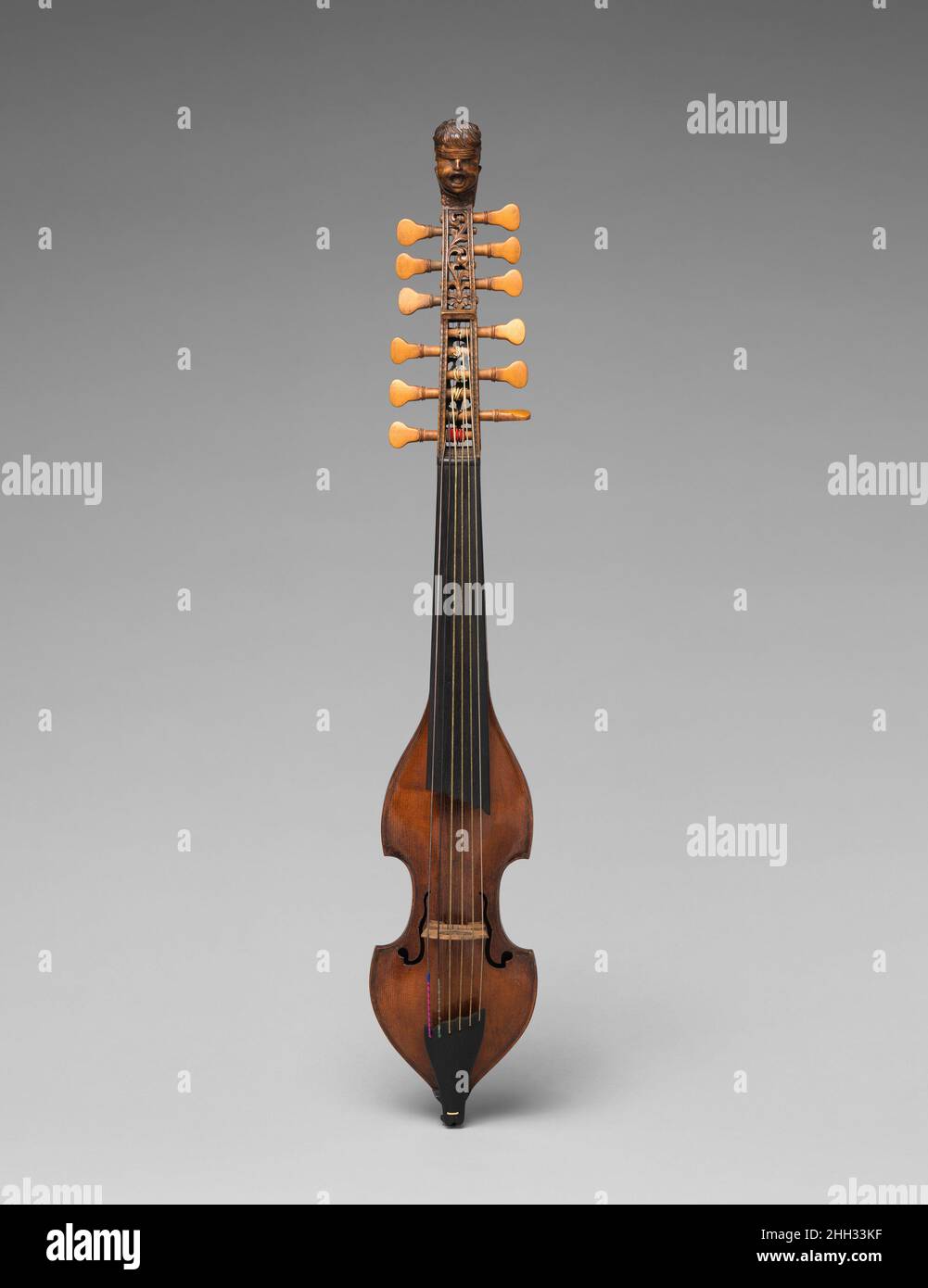 Viola d'Amore ca. 1700 German The viola d'amore, or viola 'of love,' is a bowed stringed instrument which gained great popularity in the eighteenth century. Much of its history, including the derivation of its name, is unknown. It has many characteristics of the viol family such as a flat back, ribs that are flush with the top and back, and a rosette in addition to soundholes. Yet, like a violin, it is unfretted and held under the chin while played. Violas d'amore typically have seven playing strings, though instruments with other numbers of strings are not unusual. Perhaps the most distinguis Stock Photohttps://www.alamy.com/image-license-details/?v=1https://www.alamy.com/viola-damore-ca-1700-german-the-viola-damore-or-viola-of-love-is-a-bowed-stringed-instrument-which-gained-great-popularity-in-the-eighteenth-century-much-of-its-history-including-the-derivation-of-its-name-is-unknown-it-has-many-characteristics-of-the-viol-family-such-as-a-flat-back-ribs-that-are-flush-with-the-top-and-back-and-a-rosette-in-addition-to-soundholes-yet-like-a-violin-it-is-unfretted-and-held-under-the-chin-while-played-violas-damore-typically-have-seven-playing-strings-though-instruments-with-other-numbers-of-strings-are-not-unusual-perhaps-the-most-distinguis-image457987475.html
Viola d'Amore ca. 1700 German The viola d'amore, or viola 'of love,' is a bowed stringed instrument which gained great popularity in the eighteenth century. Much of its history, including the derivation of its name, is unknown. It has many characteristics of the viol family such as a flat back, ribs that are flush with the top and back, and a rosette in addition to soundholes. Yet, like a violin, it is unfretted and held under the chin while played. Violas d'amore typically have seven playing strings, though instruments with other numbers of strings are not unusual. Perhaps the most distinguis Stock Photohttps://www.alamy.com/image-license-details/?v=1https://www.alamy.com/viola-damore-ca-1700-german-the-viola-damore-or-viola-of-love-is-a-bowed-stringed-instrument-which-gained-great-popularity-in-the-eighteenth-century-much-of-its-history-including-the-derivation-of-its-name-is-unknown-it-has-many-characteristics-of-the-viol-family-such-as-a-flat-back-ribs-that-are-flush-with-the-top-and-back-and-a-rosette-in-addition-to-soundholes-yet-like-a-violin-it-is-unfretted-and-held-under-the-chin-while-played-violas-damore-typically-have-seven-playing-strings-though-instruments-with-other-numbers-of-strings-are-not-unusual-perhaps-the-most-distinguis-image457987475.htmlRM2HH33KF–Viola d'Amore ca. 1700 German The viola d'amore, or viola 'of love,' is a bowed stringed instrument which gained great popularity in the eighteenth century. Much of its history, including the derivation of its name, is unknown. It has many characteristics of the viol family such as a flat back, ribs that are flush with the top and back, and a rosette in addition to soundholes. Yet, like a violin, it is unfretted and held under the chin while played. Violas d'amore typically have seven playing strings, though instruments with other numbers of strings are not unusual. Perhaps the most distinguis
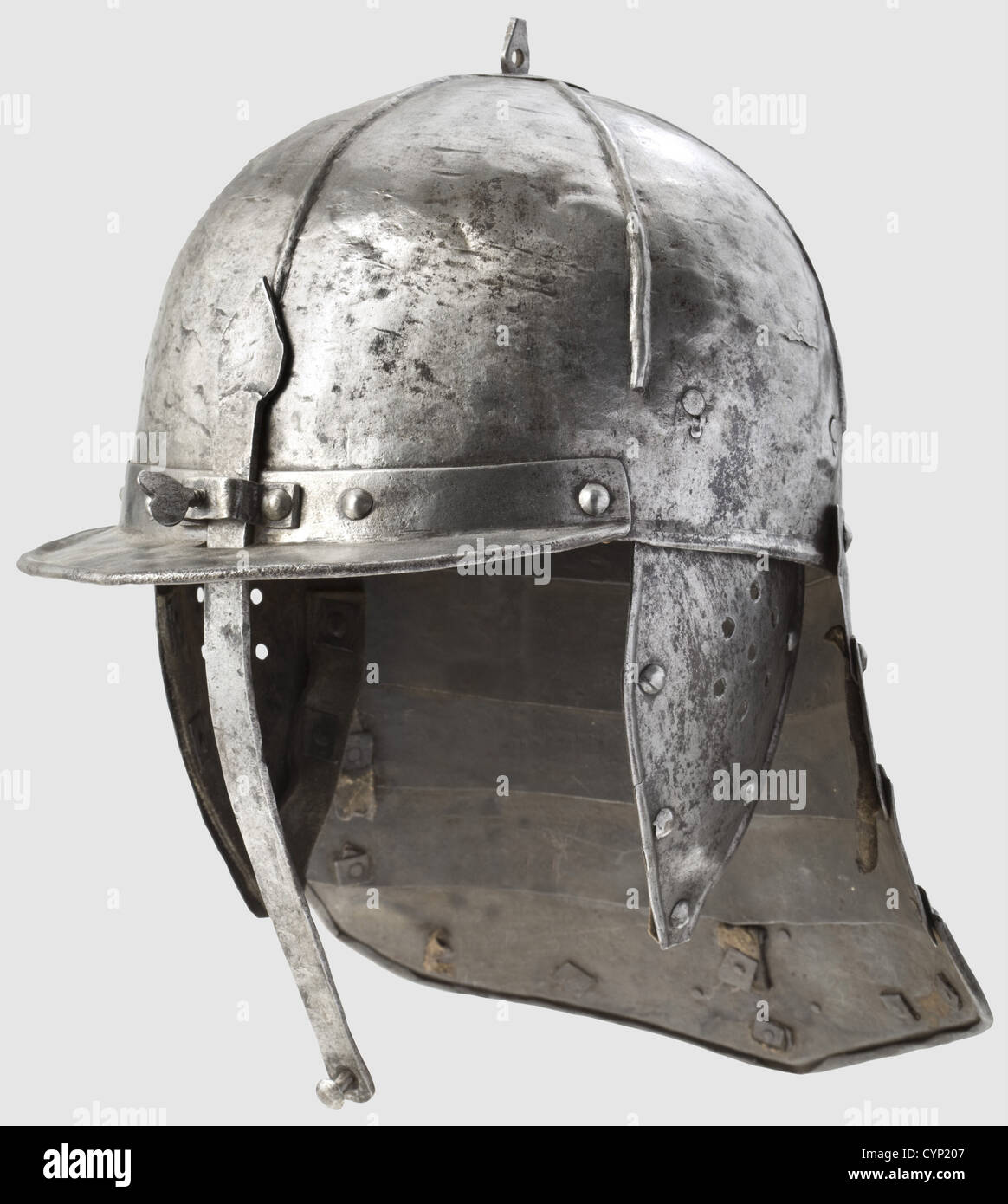 A lobster-tailed pot helmet(Zischägge),German or Polish,mid-17th century. The skull forged in one piece and embossed with six radial ribs. Riveted crown plate with a loop finial. Riveted peak with turned under edge and adjustable nasal bar. Pendant cheek pieces with seven holes each. Neck guard of four upward lapping lames with turned under edge. Remnants of the old leathering. Height 29 cm,historic,historical,,17th century,defensive arms,weapons,arms,weapon,arm,fighting device,object,objects,stills,clipping,clippings,cut out,cut-out,cut-out,Additional-Rights-Clearences-Not Available Stock Photohttps://www.alamy.com/image-license-details/?v=1https://www.alamy.com/stock-photo-a-lobster-tailed-pot-helmetzischggegerman-or-polishmid-17th-century-51500967.html
A lobster-tailed pot helmet(Zischägge),German or Polish,mid-17th century. The skull forged in one piece and embossed with six radial ribs. Riveted crown plate with a loop finial. Riveted peak with turned under edge and adjustable nasal bar. Pendant cheek pieces with seven holes each. Neck guard of four upward lapping lames with turned under edge. Remnants of the old leathering. Height 29 cm,historic,historical,,17th century,defensive arms,weapons,arms,weapon,arm,fighting device,object,objects,stills,clipping,clippings,cut out,cut-out,cut-out,Additional-Rights-Clearences-Not Available Stock Photohttps://www.alamy.com/image-license-details/?v=1https://www.alamy.com/stock-photo-a-lobster-tailed-pot-helmetzischggegerman-or-polishmid-17th-century-51500967.htmlRMCYP207–A lobster-tailed pot helmet(Zischägge),German or Polish,mid-17th century. The skull forged in one piece and embossed with six radial ribs. Riveted crown plate with a loop finial. Riveted peak with turned under edge and adjustable nasal bar. Pendant cheek pieces with seven holes each. Neck guard of four upward lapping lames with turned under edge. Remnants of the old leathering. Height 29 cm,historic,historical,,17th century,defensive arms,weapons,arms,weapon,arm,fighting device,object,objects,stills,clipping,clippings,cut out,cut-out,cut-out,Additional-Rights-Clearences-Not Available
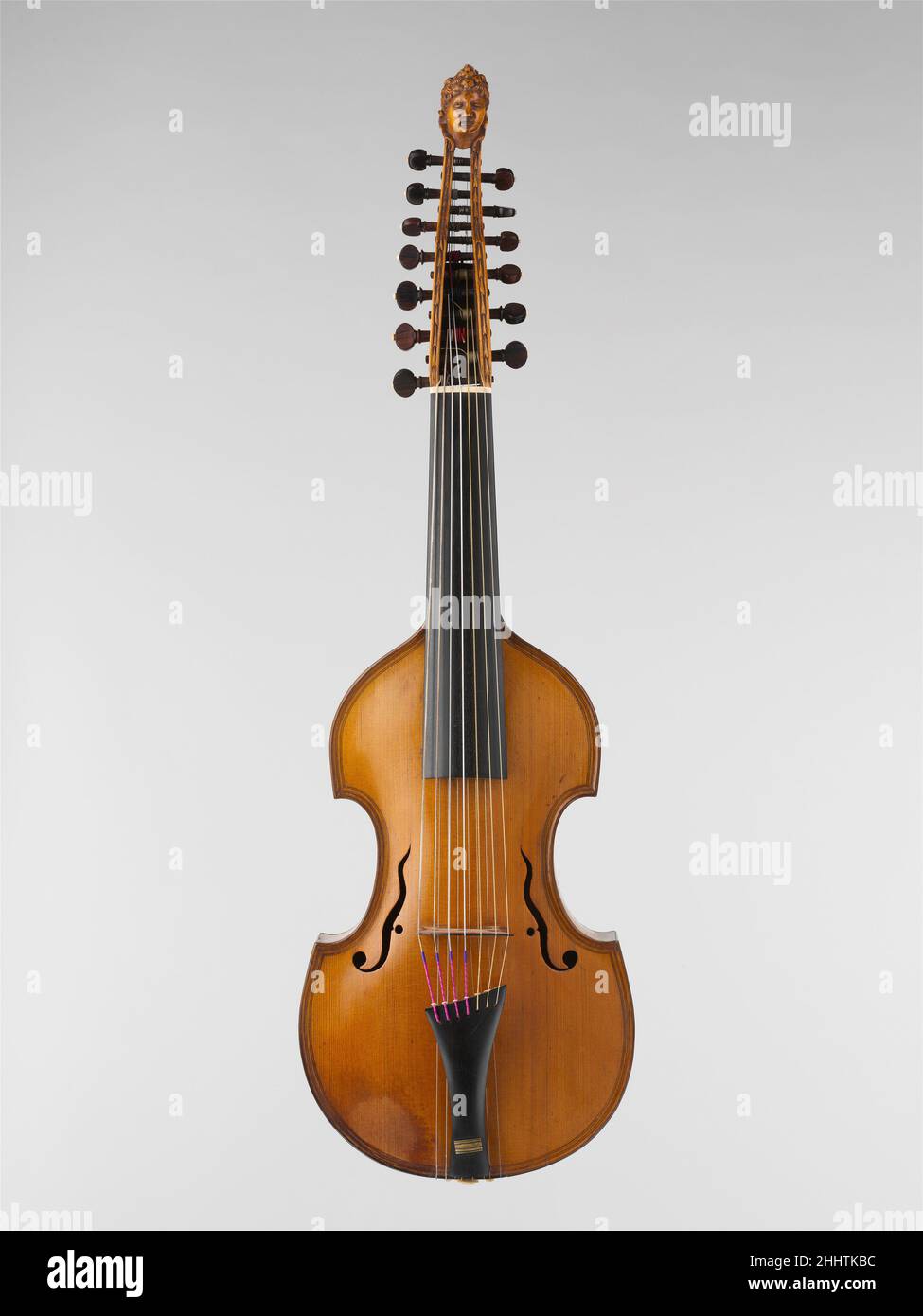 Viola d'Amore second half 18th century Attributed to Jean-Nicolas Lambert French The viola d'amore, or viola 'of love,' is a bowed stringed instrument which gained great popularity in the eighteenth century. Much of its history, including the derivation of its name, is unknown. It has many characteristics of the viol family such as a flat back, ribs that are flush with the top and back, and a rosette in addition to soundholes. Yet, like a violin, it is unfretted and held under the chin while played. Violas d'amore typically have seven playing strings, though instruments with other numbers of s Stock Photohttps://www.alamy.com/image-license-details/?v=1https://www.alamy.com/viola-damore-second-half-18th-century-attributed-to-jean-nicolas-lambert-french-the-viola-damore-or-viola-of-love-is-a-bowed-stringed-instrument-which-gained-great-popularity-in-the-eighteenth-century-much-of-its-history-including-the-derivation-of-its-name-is-unknown-it-has-many-characteristics-of-the-viol-family-such-as-a-flat-back-ribs-that-are-flush-with-the-top-and-back-and-a-rosette-in-addition-to-soundholes-yet-like-a-violin-it-is-unfretted-and-held-under-the-chin-while-played-violas-damore-typically-have-seven-playing-strings-though-instruments-with-other-numbers-of-s-image458460784.html
Viola d'Amore second half 18th century Attributed to Jean-Nicolas Lambert French The viola d'amore, or viola 'of love,' is a bowed stringed instrument which gained great popularity in the eighteenth century. Much of its history, including the derivation of its name, is unknown. It has many characteristics of the viol family such as a flat back, ribs that are flush with the top and back, and a rosette in addition to soundholes. Yet, like a violin, it is unfretted and held under the chin while played. Violas d'amore typically have seven playing strings, though instruments with other numbers of s Stock Photohttps://www.alamy.com/image-license-details/?v=1https://www.alamy.com/viola-damore-second-half-18th-century-attributed-to-jean-nicolas-lambert-french-the-viola-damore-or-viola-of-love-is-a-bowed-stringed-instrument-which-gained-great-popularity-in-the-eighteenth-century-much-of-its-history-including-the-derivation-of-its-name-is-unknown-it-has-many-characteristics-of-the-viol-family-such-as-a-flat-back-ribs-that-are-flush-with-the-top-and-back-and-a-rosette-in-addition-to-soundholes-yet-like-a-violin-it-is-unfretted-and-held-under-the-chin-while-played-violas-damore-typically-have-seven-playing-strings-though-instruments-with-other-numbers-of-s-image458460784.htmlRM2HHTKBC–Viola d'Amore second half 18th century Attributed to Jean-Nicolas Lambert French The viola d'amore, or viola 'of love,' is a bowed stringed instrument which gained great popularity in the eighteenth century. Much of its history, including the derivation of its name, is unknown. It has many characteristics of the viol family such as a flat back, ribs that are flush with the top and back, and a rosette in addition to soundholes. Yet, like a violin, it is unfretted and held under the chin while played. Violas d'amore typically have seven playing strings, though instruments with other numbers of s
 Fragment of a ribbed bowl, Glass, pressed, blown into shape, Glass, Total: Height: 3.7 cm; Width: 6.3 cm; Depth: 0.6 cm (min. ), Drinking and barware, Burial objects, Early Imperial Period, Roman Antiquity, A slight curvature of the glass fragment and the seven preserved ribs allow the assignment to a ribbed bowl. The dark purple to violet piece is crossed by white, irregular lines. Spirals can be seen on the inside. For the production, different colored glasses were formed into tubes and rods. These were pressed together and heated, resulting in a long rod. Stock Photohttps://www.alamy.com/image-license-details/?v=1https://www.alamy.com/fragment-of-a-ribbed-bowl-glass-pressed-blown-into-shape-glass-total-height-37-cm-width-63-cm-depth-06-cm-min-drinking-and-barware-burial-objects-early-imperial-period-roman-antiquity-a-slight-curvature-of-the-glass-fragment-and-the-seven-preserved-ribs-allow-the-assignment-to-a-ribbed-bowl-the-dark-purple-to-violet-piece-is-crossed-by-white-irregular-lines-spirals-can-be-seen-on-the-inside-for-the-production-different-colored-glasses-were-formed-into-tubes-and-rods-these-were-pressed-together-and-heated-resulting-in-a-long-rod-image392065978.html
Fragment of a ribbed bowl, Glass, pressed, blown into shape, Glass, Total: Height: 3.7 cm; Width: 6.3 cm; Depth: 0.6 cm (min. ), Drinking and barware, Burial objects, Early Imperial Period, Roman Antiquity, A slight curvature of the glass fragment and the seven preserved ribs allow the assignment to a ribbed bowl. The dark purple to violet piece is crossed by white, irregular lines. Spirals can be seen on the inside. For the production, different colored glasses were formed into tubes and rods. These were pressed together and heated, resulting in a long rod. Stock Photohttps://www.alamy.com/image-license-details/?v=1https://www.alamy.com/fragment-of-a-ribbed-bowl-glass-pressed-blown-into-shape-glass-total-height-37-cm-width-63-cm-depth-06-cm-min-drinking-and-barware-burial-objects-early-imperial-period-roman-antiquity-a-slight-curvature-of-the-glass-fragment-and-the-seven-preserved-ribs-allow-the-assignment-to-a-ribbed-bowl-the-dark-purple-to-violet-piece-is-crossed-by-white-irregular-lines-spirals-can-be-seen-on-the-inside-for-the-production-different-colored-glasses-were-formed-into-tubes-and-rods-these-were-pressed-together-and-heated-resulting-in-a-long-rod-image392065978.htmlRM2DNT44A–Fragment of a ribbed bowl, Glass, pressed, blown into shape, Glass, Total: Height: 3.7 cm; Width: 6.3 cm; Depth: 0.6 cm (min. ), Drinking and barware, Burial objects, Early Imperial Period, Roman Antiquity, A slight curvature of the glass fragment and the seven preserved ribs allow the assignment to a ribbed bowl. The dark purple to violet piece is crossed by white, irregular lines. Spirals can be seen on the inside. For the production, different colored glasses were formed into tubes and rods. These were pressed together and heated, resulting in a long rod.
 The Ironbribge, built by Abraham Darby III on the river Seven at Ironbridge, Telford. Stock Photohttps://www.alamy.com/image-license-details/?v=1https://www.alamy.com/stock-photo-the-ironbribge-built-by-abraham-darby-iii-on-the-river-seven-at-ironbridge-147638508.html
The Ironbribge, built by Abraham Darby III on the river Seven at Ironbridge, Telford. Stock Photohttps://www.alamy.com/image-license-details/?v=1https://www.alamy.com/stock-photo-the-ironbribge-built-by-abraham-darby-iii-on-the-river-seven-at-ironbridge-147638508.htmlRMJG5EBT–The Ironbribge, built by Abraham Darby III on the river Seven at Ironbridge, Telford.
 . The cyclopædia of anatomy and physiology. Anatomy; Physiology; Zoology. 1048 THORAX. ribs is very oblique"; the spine is curved ; therefore the relation of the ribs to the spine is different according to the curve, as are the bars to the body representing the spine (fig. 679.). It will be seen that the inferior six or seven ribs are at a more oblique angle to the spine than the superior ribs. The spine does not curve sufficiently to bring the upper ribs to an angle of 90° with the spine; there- fore, if all the ribs were raised simultane- ously, they would all increase the breadth of th Stock Photohttps://www.alamy.com/image-license-details/?v=1https://www.alamy.com/the-cyclopdia-of-anatomy-and-physiology-anatomy-physiology-zoology-1048-thorax-ribs-is-very-obliquequot-the-spine-is-curved-therefore-the-relation-of-the-ribs-to-the-spine-is-different-according-to-the-curve-as-are-the-bars-to-the-body-representing-the-spine-fig-679-it-will-be-seen-that-the-inferior-six-or-seven-ribs-are-at-a-more-oblique-angle-to-the-spine-than-the-superior-ribs-the-spine-does-not-curve-sufficiently-to-bring-the-upper-ribs-to-an-angle-of-90-with-the-spine-there-fore-if-all-the-ribs-were-raised-simultane-ously-they-would-all-increase-the-breadth-of-th-image231838979.html
. The cyclopædia of anatomy and physiology. Anatomy; Physiology; Zoology. 1048 THORAX. ribs is very oblique"; the spine is curved ; therefore the relation of the ribs to the spine is different according to the curve, as are the bars to the body representing the spine (fig. 679.). It will be seen that the inferior six or seven ribs are at a more oblique angle to the spine than the superior ribs. The spine does not curve sufficiently to bring the upper ribs to an angle of 90° with the spine; there- fore, if all the ribs were raised simultane- ously, they would all increase the breadth of th Stock Photohttps://www.alamy.com/image-license-details/?v=1https://www.alamy.com/the-cyclopdia-of-anatomy-and-physiology-anatomy-physiology-zoology-1048-thorax-ribs-is-very-obliquequot-the-spine-is-curved-therefore-the-relation-of-the-ribs-to-the-spine-is-different-according-to-the-curve-as-are-the-bars-to-the-body-representing-the-spine-fig-679-it-will-be-seen-that-the-inferior-six-or-seven-ribs-are-at-a-more-oblique-angle-to-the-spine-than-the-superior-ribs-the-spine-does-not-curve-sufficiently-to-bring-the-upper-ribs-to-an-angle-of-90-with-the-spine-there-fore-if-all-the-ribs-were-raised-simultane-ously-they-would-all-increase-the-breadth-of-th-image231838979.htmlRMRD54YF–. The cyclopædia of anatomy and physiology. Anatomy; Physiology; Zoology. 1048 THORAX. ribs is very oblique"; the spine is curved ; therefore the relation of the ribs to the spine is different according to the curve, as are the bars to the body representing the spine (fig. 679.). It will be seen that the inferior six or seven ribs are at a more oblique angle to the spine than the superior ribs. The spine does not curve sufficiently to bring the upper ribs to an angle of 90° with the spine; there- fore, if all the ribs were raised simultane- ously, they would all increase the breadth of th
 Art inspired by Glass beaker, Late Imperial, 4th century A.D., Roman, Glass; blown in a dip mold and trailed, H.: 4 3/8 in. (11.1 cm), Glass, Translucent pale blue green; trail in same color., Everted rim with rounded lip; cylindrical body with vertical side, then curving in sharply to, Classic works modernized by Artotop with a splash of modernity. Shapes, color and value, eye-catching visual impact on art. Emotions through freedom of artworks in a contemporary way. A timeless message pursuing a wildly creative new direction. Artists turning to the digital medium and creating the Artotop NFT Stock Photohttps://www.alamy.com/image-license-details/?v=1https://www.alamy.com/art-inspired-by-glass-beaker-late-imperial-4th-century-ad-roman-glass-blown-in-a-dip-mold-and-trailed-h-4-38-in-111-cm-glass-translucent-pale-blue-green-trail-in-same-color-everted-rim-with-rounded-lip-cylindrical-body-with-vertical-side-then-curving-in-sharply-to-classic-works-modernized-by-artotop-with-a-splash-of-modernity-shapes-color-and-value-eye-catching-visual-impact-on-art-emotions-through-freedom-of-artworks-in-a-contemporary-way-a-timeless-message-pursuing-a-wildly-creative-new-direction-artists-turning-to-the-digital-medium-and-creating-the-artotop-nft-image462789204.html
Art inspired by Glass beaker, Late Imperial, 4th century A.D., Roman, Glass; blown in a dip mold and trailed, H.: 4 3/8 in. (11.1 cm), Glass, Translucent pale blue green; trail in same color., Everted rim with rounded lip; cylindrical body with vertical side, then curving in sharply to, Classic works modernized by Artotop with a splash of modernity. Shapes, color and value, eye-catching visual impact on art. Emotions through freedom of artworks in a contemporary way. A timeless message pursuing a wildly creative new direction. Artists turning to the digital medium and creating the Artotop NFT Stock Photohttps://www.alamy.com/image-license-details/?v=1https://www.alamy.com/art-inspired-by-glass-beaker-late-imperial-4th-century-ad-roman-glass-blown-in-a-dip-mold-and-trailed-h-4-38-in-111-cm-glass-translucent-pale-blue-green-trail-in-same-color-everted-rim-with-rounded-lip-cylindrical-body-with-vertical-side-then-curving-in-sharply-to-classic-works-modernized-by-artotop-with-a-splash-of-modernity-shapes-color-and-value-eye-catching-visual-impact-on-art-emotions-through-freedom-of-artworks-in-a-contemporary-way-a-timeless-message-pursuing-a-wildly-creative-new-direction-artists-turning-to-the-digital-medium-and-creating-the-artotop-nft-image462789204.htmlRF2HTWT9T–Art inspired by Glass beaker, Late Imperial, 4th century A.D., Roman, Glass; blown in a dip mold and trailed, H.: 4 3/8 in. (11.1 cm), Glass, Translucent pale blue green; trail in same color., Everted rim with rounded lip; cylindrical body with vertical side, then curving in sharply to, Classic works modernized by Artotop with a splash of modernity. Shapes, color and value, eye-catching visual impact on art. Emotions through freedom of artworks in a contemporary way. A timeless message pursuing a wildly creative new direction. Artists turning to the digital medium and creating the Artotop NFT
 The crypt at Worcester cathedral was built in 1084.It has clusters of creamy stone piers and white lime-washed walls & is multi-aisled. Stock Photohttps://www.alamy.com/image-license-details/?v=1https://www.alamy.com/the-crypt-at-worcester-cathedral-was-built-in-1084it-has-clusters-of-creamy-stone-piers-and-white-lime-washed-walls-is-multi-aisled-image609950484.html
The crypt at Worcester cathedral was built in 1084.It has clusters of creamy stone piers and white lime-washed walls & is multi-aisled. Stock Photohttps://www.alamy.com/image-license-details/?v=1https://www.alamy.com/the-crypt-at-worcester-cathedral-was-built-in-1084it-has-clusters-of-creamy-stone-piers-and-white-lime-washed-walls-is-multi-aisled-image609950484.htmlRM2XC9J1T–The crypt at Worcester cathedral was built in 1084.It has clusters of creamy stone piers and white lime-washed walls & is multi-aisled.
 Art inspired by Glass hemispherical ribbed bowl, Early Imperial, late 1st century B.C.–mid-1st century A.D., Roman, Glass; cast, tooled, and cut, H.: 2 5/8 in. (6.7 cm), Glass, Translucent pale blue green., Slightly flaring rim with angular top edge and inward-sloping band below, Classic works modernized by Artotop with a splash of modernity. Shapes, color and value, eye-catching visual impact on art. Emotions through freedom of artworks in a contemporary way. A timeless message pursuing a wildly creative new direction. Artists turning to the digital medium and creating the Artotop NFT Stock Photohttps://www.alamy.com/image-license-details/?v=1https://www.alamy.com/art-inspired-by-glass-hemispherical-ribbed-bowl-early-imperial-late-1st-century-bcmid-1st-century-ad-roman-glass-cast-tooled-and-cut-h-2-58-in-67-cm-glass-translucent-pale-blue-green-slightly-flaring-rim-with-angular-top-edge-and-inward-sloping-band-below-classic-works-modernized-by-artotop-with-a-splash-of-modernity-shapes-color-and-value-eye-catching-visual-impact-on-art-emotions-through-freedom-of-artworks-in-a-contemporary-way-a-timeless-message-pursuing-a-wildly-creative-new-direction-artists-turning-to-the-digital-medium-and-creating-the-artotop-nft-image462930380.html
Art inspired by Glass hemispherical ribbed bowl, Early Imperial, late 1st century B.C.–mid-1st century A.D., Roman, Glass; cast, tooled, and cut, H.: 2 5/8 in. (6.7 cm), Glass, Translucent pale blue green., Slightly flaring rim with angular top edge and inward-sloping band below, Classic works modernized by Artotop with a splash of modernity. Shapes, color and value, eye-catching visual impact on art. Emotions through freedom of artworks in a contemporary way. A timeless message pursuing a wildly creative new direction. Artists turning to the digital medium and creating the Artotop NFT Stock Photohttps://www.alamy.com/image-license-details/?v=1https://www.alamy.com/art-inspired-by-glass-hemispherical-ribbed-bowl-early-imperial-late-1st-century-bcmid-1st-century-ad-roman-glass-cast-tooled-and-cut-h-2-58-in-67-cm-glass-translucent-pale-blue-green-slightly-flaring-rim-with-angular-top-edge-and-inward-sloping-band-below-classic-works-modernized-by-artotop-with-a-splash-of-modernity-shapes-color-and-value-eye-catching-visual-impact-on-art-emotions-through-freedom-of-artworks-in-a-contemporary-way-a-timeless-message-pursuing-a-wildly-creative-new-direction-artists-turning-to-the-digital-medium-and-creating-the-artotop-nft-image462930380.htmlRF2HW48BT–Art inspired by Glass hemispherical ribbed bowl, Early Imperial, late 1st century B.C.–mid-1st century A.D., Roman, Glass; cast, tooled, and cut, H.: 2 5/8 in. (6.7 cm), Glass, Translucent pale blue green., Slightly flaring rim with angular top edge and inward-sloping band below, Classic works modernized by Artotop with a splash of modernity. Shapes, color and value, eye-catching visual impact on art. Emotions through freedom of artworks in a contemporary way. A timeless message pursuing a wildly creative new direction. Artists turning to the digital medium and creating the Artotop NFT
 Florence Cathedral, Tuscany, Italy: red-tiled roofs and walkway, together with oculi and white marble. Just visible at the top of the image is part of the rough brick base left on seven sides of the cathedral’s octagonal dome, designed by Filippo Brunelleschi (1377 - 1446). Stock Photohttps://www.alamy.com/image-license-details/?v=1https://www.alamy.com/florence-cathedral-tuscany-italy-red-tiled-roofs-and-walkway-together-with-oculi-and-white-marble-just-visible-at-the-top-of-the-image-is-part-of-the-rough-brick-base-left-on-seven-sides-of-the-cathedrals-octagonal-dome-designed-by-filippo-brunelleschi-1377-1446-image570920196.html
Florence Cathedral, Tuscany, Italy: red-tiled roofs and walkway, together with oculi and white marble. Just visible at the top of the image is part of the rough brick base left on seven sides of the cathedral’s octagonal dome, designed by Filippo Brunelleschi (1377 - 1446). Stock Photohttps://www.alamy.com/image-license-details/?v=1https://www.alamy.com/florence-cathedral-tuscany-italy-red-tiled-roofs-and-walkway-together-with-oculi-and-white-marble-just-visible-at-the-top-of-the-image-is-part-of-the-rough-brick-base-left-on-seven-sides-of-the-cathedrals-octagonal-dome-designed-by-filippo-brunelleschi-1377-1446-image570920196.htmlRF2T4RJF0–Florence Cathedral, Tuscany, Italy: red-tiled roofs and walkway, together with oculi and white marble. Just visible at the top of the image is part of the rough brick base left on seven sides of the cathedral’s octagonal dome, designed by Filippo Brunelleschi (1377 - 1446).
 Pottery grape on three legs, two sausage rolls, sparingly glazed, five holes in the bottom, colander sieve grape cooking pot crockery holder kitchenware equipment earthenware ceramic earthenware glaze lead glaze, hand turned glazed baked drilled Earthenware grape on three legs. Red shard very sparingly glazed. Pouch-shaped or double-conical model decorated with two vague ribs Almost straight, outstanding neck edge with groove over the outside. Two standing sausage ears, one of which is round and the other slightly pinched. Five holes have been drilled in the bottom from the bottom to the insid Stock Photohttps://www.alamy.com/image-license-details/?v=1https://www.alamy.com/pottery-grape-on-three-legs-two-sausage-rolls-sparingly-glazed-five-holes-in-the-bottom-colander-sieve-grape-cooking-pot-crockery-holder-kitchenware-equipment-earthenware-ceramic-earthenware-glaze-lead-glaze-hand-turned-glazed-baked-drilled-earthenware-grape-on-three-legs-red-shard-very-sparingly-glazed-pouch-shaped-or-double-conical-model-decorated-with-two-vague-ribs-almost-straight-outstanding-neck-edge-with-groove-over-the-outside-two-standing-sausage-ears-one-of-which-is-round-and-the-other-slightly-pinched-five-holes-have-been-drilled-in-the-bottom-from-the-bottom-to-the-insid-image350096493.html
Pottery grape on three legs, two sausage rolls, sparingly glazed, five holes in the bottom, colander sieve grape cooking pot crockery holder kitchenware equipment earthenware ceramic earthenware glaze lead glaze, hand turned glazed baked drilled Earthenware grape on three legs. Red shard very sparingly glazed. Pouch-shaped or double-conical model decorated with two vague ribs Almost straight, outstanding neck edge with groove over the outside. Two standing sausage ears, one of which is round and the other slightly pinched. Five holes have been drilled in the bottom from the bottom to the insid Stock Photohttps://www.alamy.com/image-license-details/?v=1https://www.alamy.com/pottery-grape-on-three-legs-two-sausage-rolls-sparingly-glazed-five-holes-in-the-bottom-colander-sieve-grape-cooking-pot-crockery-holder-kitchenware-equipment-earthenware-ceramic-earthenware-glaze-lead-glaze-hand-turned-glazed-baked-drilled-earthenware-grape-on-three-legs-red-shard-very-sparingly-glazed-pouch-shaped-or-double-conical-model-decorated-with-two-vague-ribs-almost-straight-outstanding-neck-edge-with-groove-over-the-outside-two-standing-sausage-ears-one-of-which-is-round-and-the-other-slightly-pinched-five-holes-have-been-drilled-in-the-bottom-from-the-bottom-to-the-insid-image350096493.htmlRF2B9G7J5–Pottery grape on three legs, two sausage rolls, sparingly glazed, five holes in the bottom, colander sieve grape cooking pot crockery holder kitchenware equipment earthenware ceramic earthenware glaze lead glaze, hand turned glazed baked drilled Earthenware grape on three legs. Red shard very sparingly glazed. Pouch-shaped or double-conical model decorated with two vague ribs Almost straight, outstanding neck edge with groove over the outside. Two standing sausage ears, one of which is round and the other slightly pinched. Five holes have been drilled in the bottom from the bottom to the insid
 Base of octagonal dome of Florence cathedral in Tuscany, Italy, where, in 1507, Baccio d’Agnolo (1462 - 1543) began adding a balcony. By 1515, a balcony on one of the dome’s eight sides had been completed but, when Michelangelo scoffed at its appearance, work was halted. To this day, seven sides of the dome’s base remain rough brick. Stock Photohttps://www.alamy.com/image-license-details/?v=1https://www.alamy.com/base-of-octagonal-dome-of-florence-cathedral-in-tuscany-italy-where-in-1507-baccio-dagnolo-1462-1543-began-adding-a-balcony-by-1515-a-balcony-on-one-of-the-domes-eight-sides-had-been-completed-but-when-michelangelo-scoffed-at-its-appearance-work-was-halted-to-this-day-seven-sides-of-the-domes-base-remain-rough-brick-image570667115.html
Base of octagonal dome of Florence cathedral in Tuscany, Italy, where, in 1507, Baccio d’Agnolo (1462 - 1543) began adding a balcony. By 1515, a balcony on one of the dome’s eight sides had been completed but, when Michelangelo scoffed at its appearance, work was halted. To this day, seven sides of the dome’s base remain rough brick. Stock Photohttps://www.alamy.com/image-license-details/?v=1https://www.alamy.com/base-of-octagonal-dome-of-florence-cathedral-in-tuscany-italy-where-in-1507-baccio-dagnolo-1462-1543-began-adding-a-balcony-by-1515-a-balcony-on-one-of-the-domes-eight-sides-had-been-completed-but-when-michelangelo-scoffed-at-its-appearance-work-was-halted-to-this-day-seven-sides-of-the-domes-base-remain-rough-brick-image570667115.htmlRF2T4C3MB–Base of octagonal dome of Florence cathedral in Tuscany, Italy, where, in 1507, Baccio d’Agnolo (1462 - 1543) began adding a balcony. By 1515, a balcony on one of the dome’s eight sides had been completed but, when Michelangelo scoffed at its appearance, work was halted. To this day, seven sides of the dome’s base remain rough brick.
![. Fossil plants : for students of botany and geology . Paleobotany. XXl] DIFTERIDINAE 389 Glathropteris egyptiaca Sew.^ Fig. 286. The specimen on which this species was founded was dis- covered in the Nubian Sandstone east of Edfu; the age of the beds is uncertain, but the presence of Glathropteris suggests a Lower Jurassic or Rhaetic horizon^. Seven strong ribs radiate through the lamina from the summit of the petiole; at a and b small pieces of the projecting ribs are shown in the grooves.. Fio. 287. Camptopteris spiralis. (After Nathorst. Much reduced.) From the main veins slender branches Stock Photo . Fossil plants : for students of botany and geology . Paleobotany. XXl] DIFTERIDINAE 389 Glathropteris egyptiaca Sew.^ Fig. 286. The specimen on which this species was founded was dis- covered in the Nubian Sandstone east of Edfu; the age of the beds is uncertain, but the presence of Glathropteris suggests a Lower Jurassic or Rhaetic horizon^. Seven strong ribs radiate through the lamina from the summit of the petiole; at a and b small pieces of the projecting ribs are shown in the grooves.. Fio. 287. Camptopteris spiralis. (After Nathorst. Much reduced.) From the main veins slender branches Stock Photo](https://c8.alamy.com/comp/PG156W/fossil-plants-for-students-of-botany-and-geology-paleobotany-xxl-difteridinae-389-glathropteris-egyptiaca-sew-fig-286-the-specimen-on-which-this-species-was-founded-was-dis-covered-in-the-nubian-sandstone-east-of-edfu-the-age-of-the-beds-is-uncertain-but-the-presence-of-glathropteris-suggests-a-lower-jurassic-or-rhaetic-horizon-seven-strong-ribs-radiate-through-the-lamina-from-the-summit-of-the-petiole-at-a-and-b-small-pieces-of-the-projecting-ribs-are-shown-in-the-grooves-fio-287-camptopteris-spiralis-after-nathorst-much-reduced-from-the-main-veins-slender-branches-PG156W.jpg) . Fossil plants : for students of botany and geology . Paleobotany. XXl] DIFTERIDINAE 389 Glathropteris egyptiaca Sew.^ Fig. 286. The specimen on which this species was founded was dis- covered in the Nubian Sandstone east of Edfu; the age of the beds is uncertain, but the presence of Glathropteris suggests a Lower Jurassic or Rhaetic horizon^. Seven strong ribs radiate through the lamina from the summit of the petiole; at a and b small pieces of the projecting ribs are shown in the grooves.. Fio. 287. Camptopteris spiralis. (After Nathorst. Much reduced.) From the main veins slender branches Stock Photohttps://www.alamy.com/image-license-details/?v=1https://www.alamy.com/fossil-plants-for-students-of-botany-and-geology-paleobotany-xxl-difteridinae-389-glathropteris-egyptiaca-sew-fig-286-the-specimen-on-which-this-species-was-founded-was-dis-covered-in-the-nubian-sandstone-east-of-edfu-the-age-of-the-beds-is-uncertain-but-the-presence-of-glathropteris-suggests-a-lower-jurassic-or-rhaetic-horizon-seven-strong-ribs-radiate-through-the-lamina-from-the-summit-of-the-petiole-at-a-and-b-small-pieces-of-the-projecting-ribs-are-shown-in-the-grooves-fio-287-camptopteris-spiralis-after-nathorst-much-reduced-from-the-main-veins-slender-branches-image216384977.html
. Fossil plants : for students of botany and geology . Paleobotany. XXl] DIFTERIDINAE 389 Glathropteris egyptiaca Sew.^ Fig. 286. The specimen on which this species was founded was dis- covered in the Nubian Sandstone east of Edfu; the age of the beds is uncertain, but the presence of Glathropteris suggests a Lower Jurassic or Rhaetic horizon^. Seven strong ribs radiate through the lamina from the summit of the petiole; at a and b small pieces of the projecting ribs are shown in the grooves.. Fio. 287. Camptopteris spiralis. (After Nathorst. Much reduced.) From the main veins slender branches Stock Photohttps://www.alamy.com/image-license-details/?v=1https://www.alamy.com/fossil-plants-for-students-of-botany-and-geology-paleobotany-xxl-difteridinae-389-glathropteris-egyptiaca-sew-fig-286-the-specimen-on-which-this-species-was-founded-was-dis-covered-in-the-nubian-sandstone-east-of-edfu-the-age-of-the-beds-is-uncertain-but-the-presence-of-glathropteris-suggests-a-lower-jurassic-or-rhaetic-horizon-seven-strong-ribs-radiate-through-the-lamina-from-the-summit-of-the-petiole-at-a-and-b-small-pieces-of-the-projecting-ribs-are-shown-in-the-grooves-fio-287-camptopteris-spiralis-after-nathorst-much-reduced-from-the-main-veins-slender-branches-image216384977.htmlRMPG156W–. Fossil plants : for students of botany and geology . Paleobotany. XXl] DIFTERIDINAE 389 Glathropteris egyptiaca Sew.^ Fig. 286. The specimen on which this species was founded was dis- covered in the Nubian Sandstone east of Edfu; the age of the beds is uncertain, but the presence of Glathropteris suggests a Lower Jurassic or Rhaetic horizon^. Seven strong ribs radiate through the lamina from the summit of the petiole; at a and b small pieces of the projecting ribs are shown in the grooves.. Fio. 287. Camptopteris spiralis. (After Nathorst. Much reduced.) From the main veins slender branches
 Florence Cathedral in Tuscany, Italy, begun in 1296 to a design by Arnolfo di Cambio (c. 1240 - 1302). The octagonal dome, covered in terracotta tiles, was built between 1420 and 1436 to a design by Filippo Brunelleschi (1377 - 1446). In 1507, Baccio d’Agnolo (1462 - 1543) began adding a balcony to the dome’s base. A balcony on one of the dome’s eight sides was finished by 1515, but when Michelangelo scoffed at its appearance work was halted. To this day, seven sides of the dome’s base remain rough brick. Stock Photohttps://www.alamy.com/image-license-details/?v=1https://www.alamy.com/florence-cathedral-in-tuscany-italy-begun-in-1296-to-a-design-by-arnolfo-di-cambio-c-1240-1302-the-octagonal-dome-covered-in-terracotta-tiles-was-built-between-1420-and-1436-to-a-design-by-filippo-brunelleschi-1377-1446-in-1507-baccio-dagnolo-1462-1543-began-adding-a-balcony-to-the-domes-base-a-balcony-on-one-of-the-domes-eight-sides-was-finished-by-1515-but-when-michelangelo-scoffed-at-its-appearance-work-was-halted-to-this-day-seven-sides-of-the-domes-base-remain-rough-brick-image570667295.html
Florence Cathedral in Tuscany, Italy, begun in 1296 to a design by Arnolfo di Cambio (c. 1240 - 1302). The octagonal dome, covered in terracotta tiles, was built between 1420 and 1436 to a design by Filippo Brunelleschi (1377 - 1446). In 1507, Baccio d’Agnolo (1462 - 1543) began adding a balcony to the dome’s base. A balcony on one of the dome’s eight sides was finished by 1515, but when Michelangelo scoffed at its appearance work was halted. To this day, seven sides of the dome’s base remain rough brick. Stock Photohttps://www.alamy.com/image-license-details/?v=1https://www.alamy.com/florence-cathedral-in-tuscany-italy-begun-in-1296-to-a-design-by-arnolfo-di-cambio-c-1240-1302-the-octagonal-dome-covered-in-terracotta-tiles-was-built-between-1420-and-1436-to-a-design-by-filippo-brunelleschi-1377-1446-in-1507-baccio-dagnolo-1462-1543-began-adding-a-balcony-to-the-domes-base-a-balcony-on-one-of-the-domes-eight-sides-was-finished-by-1515-but-when-michelangelo-scoffed-at-its-appearance-work-was-halted-to-this-day-seven-sides-of-the-domes-base-remain-rough-brick-image570667295.htmlRF2T4C3XR–Florence Cathedral in Tuscany, Italy, begun in 1296 to a design by Arnolfo di Cambio (c. 1240 - 1302). The octagonal dome, covered in terracotta tiles, was built between 1420 and 1436 to a design by Filippo Brunelleschi (1377 - 1446). In 1507, Baccio d’Agnolo (1462 - 1543) began adding a balcony to the dome’s base. A balcony on one of the dome’s eight sides was finished by 1515, but when Michelangelo scoffed at its appearance work was halted. To this day, seven sides of the dome’s base remain rough brick.
 The cervical spine (neck region) consists of seven bones (C1-C7 vertebrae), which are separated from one another by intervertebral discs 3d illustrati Stock Photohttps://www.alamy.com/image-license-details/?v=1https://www.alamy.com/the-cervical-spine-neck-region-consists-of-seven-bones-c1-c7-vertebrae-which-are-separated-from-one-another-by-intervertebral-discs-3d-illustrati-image596574462.html
The cervical spine (neck region) consists of seven bones (C1-C7 vertebrae), which are separated from one another by intervertebral discs 3d illustrati Stock Photohttps://www.alamy.com/image-license-details/?v=1https://www.alamy.com/the-cervical-spine-neck-region-consists-of-seven-bones-c1-c7-vertebrae-which-are-separated-from-one-another-by-intervertebral-discs-3d-illustrati-image596574462.htmlRF2WJG8PP–The cervical spine (neck region) consists of seven bones (C1-C7 vertebrae), which are separated from one another by intervertebral discs 3d illustrati
 A lobster-tailed pot helmet(Zischägge),German or Polish,mid-17th century. The skull forged in one piece and embossed with six radial ribs. Riveted crown plate with a loop finial. Riveted peak with turned under edge and adjustable nasal bar. Pendant cheek pieces with seven holes each. Neck guard of four upward lapping lames with turned under edge. Remnants of the old leathering. Height 29 cm,historic,historical,,17th century,defensive arms,weapons,arms,weapon,arm,fighting device,object,objects,stills,clipping,clippings,cut out,cut-out,cut-out,Additional-Rights-Clearences-Not Available Stock Photohttps://www.alamy.com/image-license-details/?v=1https://www.alamy.com/stock-photo-a-lobster-tailed-pot-helmetzischggegerman-or-polishmid-17th-century-51500980.html
A lobster-tailed pot helmet(Zischägge),German or Polish,mid-17th century. The skull forged in one piece and embossed with six radial ribs. Riveted crown plate with a loop finial. Riveted peak with turned under edge and adjustable nasal bar. Pendant cheek pieces with seven holes each. Neck guard of four upward lapping lames with turned under edge. Remnants of the old leathering. Height 29 cm,historic,historical,,17th century,defensive arms,weapons,arms,weapon,arm,fighting device,object,objects,stills,clipping,clippings,cut out,cut-out,cut-out,Additional-Rights-Clearences-Not Available Stock Photohttps://www.alamy.com/image-license-details/?v=1https://www.alamy.com/stock-photo-a-lobster-tailed-pot-helmetzischggegerman-or-polishmid-17th-century-51500980.htmlRMCYP20M–A lobster-tailed pot helmet(Zischägge),German or Polish,mid-17th century. The skull forged in one piece and embossed with six radial ribs. Riveted crown plate with a loop finial. Riveted peak with turned under edge and adjustable nasal bar. Pendant cheek pieces with seven holes each. Neck guard of four upward lapping lames with turned under edge. Remnants of the old leathering. Height 29 cm,historic,historical,,17th century,defensive arms,weapons,arms,weapon,arm,fighting device,object,objects,stills,clipping,clippings,cut out,cut-out,cut-out,Additional-Rights-Clearences-Not Available
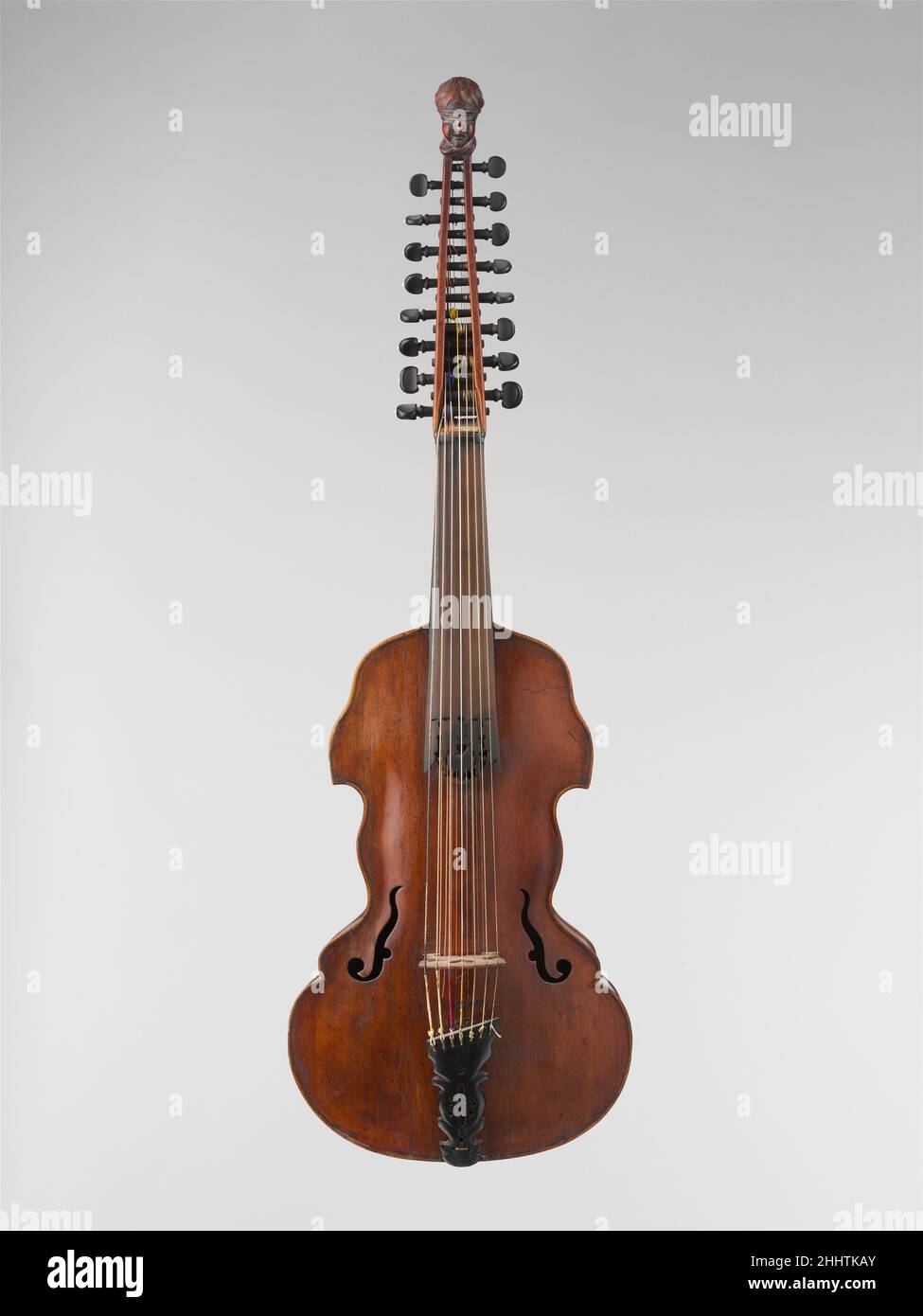 Viola d'Amore 1726 Paulus Alletsee German The viola d'amore, or viola 'of love,' is a bowed stringed instrument which gained great popularity in the eighteenth century. Much of its history, including the derivation of its name, is unknown. It has many characteristics of the viol family such as a flat back, ribs that are flush with the top and back, and a rosette in addition to soundholes. Yet, like a violin, it is unfretted and held under the chin while played. Violas d'amore typically have seven playing strings, though instruments with other numbers of strings are not unusual. Perhaps the mos Stock Photohttps://www.alamy.com/image-license-details/?v=1https://www.alamy.com/viola-damore-1726-paulus-alletsee-german-the-viola-damore-or-viola-of-love-is-a-bowed-stringed-instrument-which-gained-great-popularity-in-the-eighteenth-century-much-of-its-history-including-the-derivation-of-its-name-is-unknown-it-has-many-characteristics-of-the-viol-family-such-as-a-flat-back-ribs-that-are-flush-with-the-top-and-back-and-a-rosette-in-addition-to-soundholes-yet-like-a-violin-it-is-unfretted-and-held-under-the-chin-while-played-violas-damore-typically-have-seven-playing-strings-though-instruments-with-other-numbers-of-strings-are-not-unusual-perhaps-the-mos-image458460771.html
Viola d'Amore 1726 Paulus Alletsee German The viola d'amore, or viola 'of love,' is a bowed stringed instrument which gained great popularity in the eighteenth century. Much of its history, including the derivation of its name, is unknown. It has many characteristics of the viol family such as a flat back, ribs that are flush with the top and back, and a rosette in addition to soundholes. Yet, like a violin, it is unfretted and held under the chin while played. Violas d'amore typically have seven playing strings, though instruments with other numbers of strings are not unusual. Perhaps the mos Stock Photohttps://www.alamy.com/image-license-details/?v=1https://www.alamy.com/viola-damore-1726-paulus-alletsee-german-the-viola-damore-or-viola-of-love-is-a-bowed-stringed-instrument-which-gained-great-popularity-in-the-eighteenth-century-much-of-its-history-including-the-derivation-of-its-name-is-unknown-it-has-many-characteristics-of-the-viol-family-such-as-a-flat-back-ribs-that-are-flush-with-the-top-and-back-and-a-rosette-in-addition-to-soundholes-yet-like-a-violin-it-is-unfretted-and-held-under-the-chin-while-played-violas-damore-typically-have-seven-playing-strings-though-instruments-with-other-numbers-of-strings-are-not-unusual-perhaps-the-mos-image458460771.htmlRM2HHTKAY–Viola d'Amore 1726 Paulus Alletsee German The viola d'amore, or viola 'of love,' is a bowed stringed instrument which gained great popularity in the eighteenth century. Much of its history, including the derivation of its name, is unknown. It has many characteristics of the viol family such as a flat back, ribs that are flush with the top and back, and a rosette in addition to soundholes. Yet, like a violin, it is unfretted and held under the chin while played. Violas d'amore typically have seven playing strings, though instruments with other numbers of strings are not unusual. Perhaps the mos
 Cooking pot, Cooking pot of bronze. The hull has a casting seam near the ears and is ball-shaped, but slightly sagged. It has a thickening at the bottom, which was created as a result of the casting technique. This is formed by a round pouring hole with two pouring ribs placed twice in a radius. The transition from trunk to neck is smooth. The lip edge has a relatively sharp edge at the top and extends obliquely outwards. The pot stands on three six-sided legs, the inner side of which takes up the entire width. These seem to be turned on later. They end in seven-sided feet, the inner side Stock Photohttps://www.alamy.com/image-license-details/?v=1https://www.alamy.com/cooking-pot-cooking-pot-of-bronze-the-hull-has-a-casting-seam-near-the-ears-and-is-ball-shaped-but-slightly-sagged-it-has-a-thickening-at-the-bottom-which-was-created-as-a-result-of-the-casting-technique-this-is-formed-by-a-round-pouring-hole-with-two-pouring-ribs-placed-twice-in-a-radius-the-transition-from-trunk-to-neck-is-smooth-the-lip-edge-has-a-relatively-sharp-edge-at-the-top-and-extends-obliquely-outwards-the-pot-stands-on-three-six-sided-legs-the-inner-side-of-which-takes-up-the-entire-width-these-seem-to-be-turned-on-later-they-end-in-seven-sided-feet-the-inner-side-image261366832.html
Cooking pot, Cooking pot of bronze. The hull has a casting seam near the ears and is ball-shaped, but slightly sagged. It has a thickening at the bottom, which was created as a result of the casting technique. This is formed by a round pouring hole with two pouring ribs placed twice in a radius. The transition from trunk to neck is smooth. The lip edge has a relatively sharp edge at the top and extends obliquely outwards. The pot stands on three six-sided legs, the inner side of which takes up the entire width. These seem to be turned on later. They end in seven-sided feet, the inner side Stock Photohttps://www.alamy.com/image-license-details/?v=1https://www.alamy.com/cooking-pot-cooking-pot-of-bronze-the-hull-has-a-casting-seam-near-the-ears-and-is-ball-shaped-but-slightly-sagged-it-has-a-thickening-at-the-bottom-which-was-created-as-a-result-of-the-casting-technique-this-is-formed-by-a-round-pouring-hole-with-two-pouring-ribs-placed-twice-in-a-radius-the-transition-from-trunk-to-neck-is-smooth-the-lip-edge-has-a-relatively-sharp-edge-at-the-top-and-extends-obliquely-outwards-the-pot-stands-on-three-six-sided-legs-the-inner-side-of-which-takes-up-the-entire-width-these-seem-to-be-turned-on-later-they-end-in-seven-sided-feet-the-inner-side-image261366832.htmlRMW5681M–Cooking pot, Cooking pot of bronze. The hull has a casting seam near the ears and is ball-shaped, but slightly sagged. It has a thickening at the bottom, which was created as a result of the casting technique. This is formed by a round pouring hole with two pouring ribs placed twice in a radius. The transition from trunk to neck is smooth. The lip edge has a relatively sharp edge at the top and extends obliquely outwards. The pot stands on three six-sided legs, the inner side of which takes up the entire width. These seem to be turned on later. They end in seven-sided feet, the inner side
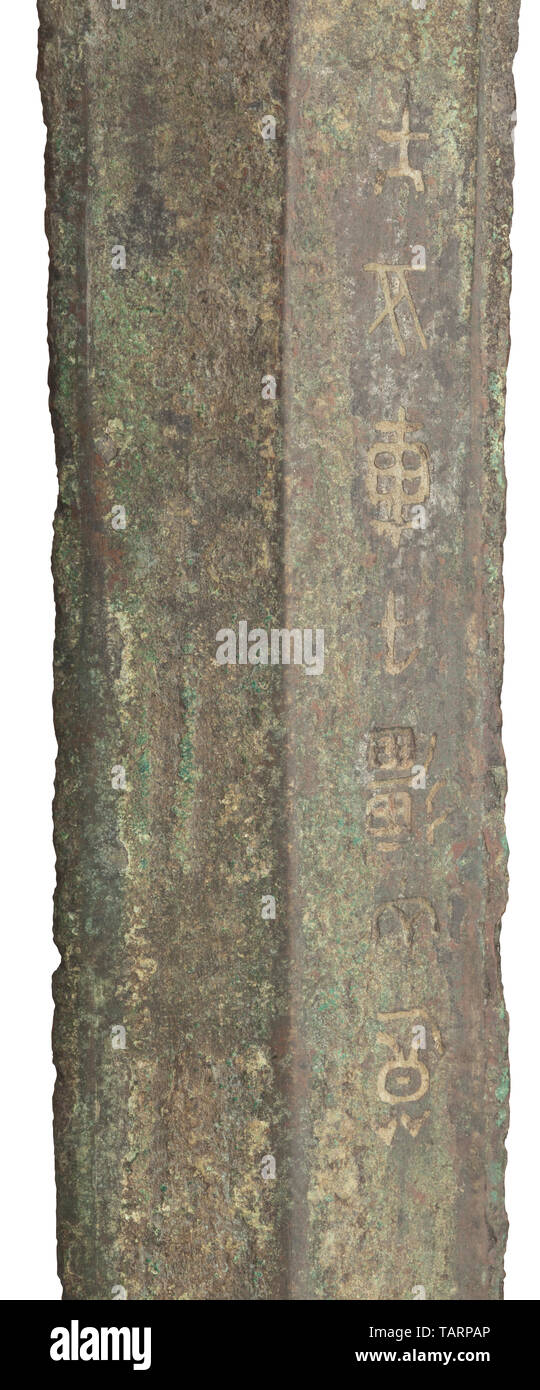 A Chinese bronze sword bearing an inscription, Eastern Zhou, 5th - 3rd century BC, Bronze sword forged in one piece and dating from the Warring States period. The blade with slightly curved, almost parallel cutting edges, tapering sharply just before the point. Pronounced obtuse medial ridge. The cutting edges clearly offset from the blade by a continuous bevel, approximately 3 mm wide. Below the grip, the right half of one side bears an inscription with seven characters. A distinctive, profiled hilt with a medial ridge at the root of the blade w, Additional-Rights-Clearance-Info-Not-Available Stock Photohttps://www.alamy.com/image-license-details/?v=1https://www.alamy.com/a-chinese-bronze-sword-bearing-an-inscription-eastern-zhou-5th-3rd-century-bc-bronze-sword-forged-in-one-piece-and-dating-from-the-warring-states-period-the-blade-with-slightly-curved-almost-parallel-cutting-edges-tapering-sharply-just-before-the-point-pronounced-obtuse-medial-ridge-the-cutting-edges-clearly-offset-from-the-blade-by-a-continuous-bevel-approximately-3-mm-wide-below-the-grip-the-right-half-of-one-side-bears-an-inscription-with-seven-characters-a-distinctive-profiled-hilt-with-a-medial-ridge-at-the-root-of-the-blade-w-additional-rights-clearance-info-not-available-image247614158.html
A Chinese bronze sword bearing an inscription, Eastern Zhou, 5th - 3rd century BC, Bronze sword forged in one piece and dating from the Warring States period. The blade with slightly curved, almost parallel cutting edges, tapering sharply just before the point. Pronounced obtuse medial ridge. The cutting edges clearly offset from the blade by a continuous bevel, approximately 3 mm wide. Below the grip, the right half of one side bears an inscription with seven characters. A distinctive, profiled hilt with a medial ridge at the root of the blade w, Additional-Rights-Clearance-Info-Not-Available Stock Photohttps://www.alamy.com/image-license-details/?v=1https://www.alamy.com/a-chinese-bronze-sword-bearing-an-inscription-eastern-zhou-5th-3rd-century-bc-bronze-sword-forged-in-one-piece-and-dating-from-the-warring-states-period-the-blade-with-slightly-curved-almost-parallel-cutting-edges-tapering-sharply-just-before-the-point-pronounced-obtuse-medial-ridge-the-cutting-edges-clearly-offset-from-the-blade-by-a-continuous-bevel-approximately-3-mm-wide-below-the-grip-the-right-half-of-one-side-bears-an-inscription-with-seven-characters-a-distinctive-profiled-hilt-with-a-medial-ridge-at-the-root-of-the-blade-w-additional-rights-clearance-info-not-available-image247614158.htmlRMTARPAP–A Chinese bronze sword bearing an inscription, Eastern Zhou, 5th - 3rd century BC, Bronze sword forged in one piece and dating from the Warring States period. The blade with slightly curved, almost parallel cutting edges, tapering sharply just before the point. Pronounced obtuse medial ridge. The cutting edges clearly offset from the blade by a continuous bevel, approximately 3 mm wide. Below the grip, the right half of one side bears an inscription with seven characters. A distinctive, profiled hilt with a medial ridge at the root of the blade w, Additional-Rights-Clearance-Info-Not-Available
 The Ironbribge, built by Abraham Darby III on the river Seven at Ironbridge, Telford. Stock Photohttps://www.alamy.com/image-license-details/?v=1https://www.alamy.com/stock-photo-the-ironbribge-built-by-abraham-darby-iii-on-the-river-seven-at-ironbridge-147638516.html
The Ironbribge, built by Abraham Darby III on the river Seven at Ironbridge, Telford. Stock Photohttps://www.alamy.com/image-license-details/?v=1https://www.alamy.com/stock-photo-the-ironbribge-built-by-abraham-darby-iii-on-the-river-seven-at-ironbridge-147638516.htmlRMJG5EC4–The Ironbribge, built by Abraham Darby III on the river Seven at Ironbridge, Telford.
 . The principles and practice of judging live-stock . Livestock. THE TYPES 187 by the tail head. The round cuts contain only the trans- verse section of the femur or thigh bone. The best quality of meat is on the inside or the top of the round as it lies on the block. The forequarter is cut into the prime ribs, chuck, neck and plate. 203. The ribs. — The prime ribs (Fig. 94) include the seven ribs counting forward from the loin end of the fore- quarter, which brings the division of the rib and chuck between the fifth and sixth rib. The distance down on the rib at which ^-«^ F' ^^..?S^ the limi Stock Photohttps://www.alamy.com/image-license-details/?v=1https://www.alamy.com/the-principles-and-practice-of-judging-live-stock-livestock-the-types-187-by-the-tail-head-the-round-cuts-contain-only-the-trans-verse-section-of-the-femur-or-thigh-bone-the-best-quality-of-meat-is-on-the-inside-or-the-top-of-the-round-as-it-lies-on-the-block-the-forequarter-is-cut-into-the-prime-ribs-chuck-neck-and-plate-203-the-ribs-the-prime-ribs-fig-94-include-the-seven-ribs-counting-forward-from-the-loin-end-of-the-fore-quarter-which-brings-the-division-of-the-rib-and-chuck-between-the-fifth-and-sixth-rib-the-distance-down-on-the-rib-at-which-f-s-the-limi-image232334065.html
. The principles and practice of judging live-stock . Livestock. THE TYPES 187 by the tail head. The round cuts contain only the trans- verse section of the femur or thigh bone. The best quality of meat is on the inside or the top of the round as it lies on the block. The forequarter is cut into the prime ribs, chuck, neck and plate. 203. The ribs. — The prime ribs (Fig. 94) include the seven ribs counting forward from the loin end of the fore- quarter, which brings the division of the rib and chuck between the fifth and sixth rib. The distance down on the rib at which ^-«^ F' ^^..?S^ the limi Stock Photohttps://www.alamy.com/image-license-details/?v=1https://www.alamy.com/the-principles-and-practice-of-judging-live-stock-livestock-the-types-187-by-the-tail-head-the-round-cuts-contain-only-the-trans-verse-section-of-the-femur-or-thigh-bone-the-best-quality-of-meat-is-on-the-inside-or-the-top-of-the-round-as-it-lies-on-the-block-the-forequarter-is-cut-into-the-prime-ribs-chuck-neck-and-plate-203-the-ribs-the-prime-ribs-fig-94-include-the-seven-ribs-counting-forward-from-the-loin-end-of-the-fore-quarter-which-brings-the-division-of-the-rib-and-chuck-between-the-fifth-and-sixth-rib-the-distance-down-on-the-rib-at-which-f-s-the-limi-image232334065.htmlRMRDYMD5–. The principles and practice of judging live-stock . Livestock. THE TYPES 187 by the tail head. The round cuts contain only the trans- verse section of the femur or thigh bone. The best quality of meat is on the inside or the top of the round as it lies on the block. The forequarter is cut into the prime ribs, chuck, neck and plate. 203. The ribs. — The prime ribs (Fig. 94) include the seven ribs counting forward from the loin end of the fore- quarter, which brings the division of the rib and chuck between the fifth and sixth rib. The distance down on the rib at which ^-«^ F' ^^..?S^ the limi